alright Bird Nerds and embroidery fans, let& #39;s do this again!  https://abs.twimg.com/emoji/v2/... draggable="false" alt="🥳" title="Partying face" aria-label="Emoji: Partying face">
https://abs.twimg.com/emoji/v2/... draggable="false" alt="🥳" title="Partying face" aria-label="Emoji: Partying face">
Here is the second bird piece I& #39;ve done, this time featuring all the orders of birds for @TheLabAndField!
Based on the IOC, join me as we go through each and every order https://abs.twimg.com/emoji/v2/... draggable="false" alt="🦩" title="Flamingo" aria-label="Emoji: Flamingo">
https://abs.twimg.com/emoji/v2/... draggable="false" alt="🦩" title="Flamingo" aria-label="Emoji: Flamingo"> https://abs.twimg.com/emoji/v2/... draggable="false" alt="🦜" title="Parrot" aria-label="Emoji: Parrot">
https://abs.twimg.com/emoji/v2/... draggable="false" alt="🦜" title="Parrot" aria-label="Emoji: Parrot"> https://abs.twimg.com/emoji/v2/... draggable="false" alt="🐓" title="Hahn" aria-label="Emoji: Hahn">
https://abs.twimg.com/emoji/v2/... draggable="false" alt="🐓" title="Hahn" aria-label="Emoji: Hahn"> https://abs.twimg.com/emoji/v2/... draggable="false" alt="🦅" title="Adler" aria-label="Emoji: Adler">
https://abs.twimg.com/emoji/v2/... draggable="false" alt="🦅" title="Adler" aria-label="Emoji: Adler"> https://abs.twimg.com/emoji/v2/... draggable="false" alt="🦆" title="Ente" aria-label="Emoji: Ente">
https://abs.twimg.com/emoji/v2/... draggable="false" alt="🦆" title="Ente" aria-label="Emoji: Ente"> https://abs.twimg.com/emoji/v2/... draggable="false" alt="🦉" title="Eule" aria-label="Emoji: Eule">
https://abs.twimg.com/emoji/v2/... draggable="false" alt="🦉" title="Eule" aria-label="Emoji: Eule">
Here is the second bird piece I& #39;ve done, this time featuring all the orders of birds for @TheLabAndField!
Based on the IOC, join me as we go through each and every order
First up is the Struthioniformes, or the ostriches!
These are represented by two living species, the common and the Somali. Once found across much of Africa and western Asia, they are the largest birb in the world.
( https://abs.twimg.com/emoji/v2/... draggable="false" alt="📸" title="Kamera mit Blitz" aria-label="Emoji: Kamera mit Blitz">Christiaan Kooyman)
https://abs.twimg.com/emoji/v2/... draggable="false" alt="📸" title="Kamera mit Blitz" aria-label="Emoji: Kamera mit Blitz">Christiaan Kooyman)
These are represented by two living species, the common and the Somali. Once found across much of Africa and western Asia, they are the largest birb in the world.
(
Here we have the Casuariifromes which are cassowaries!
There are 3 species of cassowaries found across Australia, New Guinea, and a few of the islands of Indonesia. This one is the southern cassowary, which lays bright pea-green eggs that fade with age. Fancy.
( https://abs.twimg.com/emoji/v2/... draggable="false" alt="📸" title="Kamera mit Blitz" aria-label="Emoji: Kamera mit Blitz">Dezidor)
https://abs.twimg.com/emoji/v2/... draggable="false" alt="📸" title="Kamera mit Blitz" aria-label="Emoji: Kamera mit Blitz">Dezidor)
There are 3 species of cassowaries found across Australia, New Guinea, and a few of the islands of Indonesia. This one is the southern cassowary, which lays bright pea-green eggs that fade with age. Fancy.
(
Charadriiformes is the group that contains the 350 or so species of gulls, auks and waders.
Here we& #39;ve got a really rather lovely razorbill. Found across much of the North Atlantic, they are the closest living relative of the now extinct great auk.
( https://abs.twimg.com/emoji/v2/... draggable="false" alt="📸" title="Kamera mit Blitz" aria-label="Emoji: Kamera mit Blitz">Gsd97jks)
https://abs.twimg.com/emoji/v2/... draggable="false" alt="📸" title="Kamera mit Blitz" aria-label="Emoji: Kamera mit Blitz">Gsd97jks)
Here we& #39;ve got a really rather lovely razorbill. Found across much of the North Atlantic, they are the closest living relative of the now extinct great auk.
(
The Cuculiformes are the cuckoos!
This little beauty is the African emerald cuckoo, which as you can probably guess lives right across sub-Saharan Africa. They are really quite something to look at. What babes. https://abs.twimg.com/emoji/v2/... draggable="false" alt="💛" title="Gelbes Herz" aria-label="Emoji: Gelbes Herz">
https://abs.twimg.com/emoji/v2/... draggable="false" alt="💛" title="Gelbes Herz" aria-label="Emoji: Gelbes Herz"> https://abs.twimg.com/emoji/v2/... draggable="false" alt="💚" title="Grünes Herz" aria-label="Emoji: Grünes Herz">
https://abs.twimg.com/emoji/v2/... draggable="false" alt="💚" title="Grünes Herz" aria-label="Emoji: Grünes Herz">
( https://abs.twimg.com/emoji/v2/... draggable="false" alt="📸" title="Kamera mit Blitz" aria-label="Emoji: Kamera mit Blitz">Matt Brady)
https://abs.twimg.com/emoji/v2/... draggable="false" alt="📸" title="Kamera mit Blitz" aria-label="Emoji: Kamera mit Blitz">Matt Brady)
This little beauty is the African emerald cuckoo, which as you can probably guess lives right across sub-Saharan Africa. They are really quite something to look at. What babes.
(
Let& #39;s hop over to the Americas to meet the Apodiformes, or hummingbirds!
There are 450 species of hummingbirds. Of these the ruby-throated hummingbird winters in Central America before migrating as far north as Canada. You go little bird!
( https://abs.twimg.com/emoji/v2/... draggable="false" alt="📸" title="Kamera mit Blitz" aria-label="Emoji: Kamera mit Blitz">Joe Schneid)
https://abs.twimg.com/emoji/v2/... draggable="false" alt="📸" title="Kamera mit Blitz" aria-label="Emoji: Kamera mit Blitz">Joe Schneid)
There are 450 species of hummingbirds. Of these the ruby-throated hummingbird winters in Central America before migrating as far north as Canada. You go little bird!
(
The best group of birds next, the Columbiformes.
These are the glorious pigeons and doves. Here we have a rather lovely Henderson fruit dove, which is only found on the tiny Henderson Island in the middle of the South Pacific living a tropical life https://abs.twimg.com/emoji/v2/... draggable="false" alt="🌴" title="Palme" aria-label="Emoji: Palme">
https://abs.twimg.com/emoji/v2/... draggable="false" alt="🌴" title="Palme" aria-label="Emoji: Palme">
( https://abs.twimg.com/emoji/v2/... draggable="false" alt="📸" title="Kamera mit Blitz" aria-label="Emoji: Kamera mit Blitz">Phil Tizzard)
https://abs.twimg.com/emoji/v2/... draggable="false" alt="📸" title="Kamera mit Blitz" aria-label="Emoji: Kamera mit Blitz">Phil Tizzard)
These are the glorious pigeons and doves. Here we have a rather lovely Henderson fruit dove, which is only found on the tiny Henderson Island in the middle of the South Pacific living a tropical life
(
The Tinamiformes are better known as the tinamous, but even then you may not have heard of them.
46 species are found across Central and South America, including this elegant-crested tinamou. They are actually most closely related to ratites, like the ostrich.
( https://abs.twimg.com/emoji/v2/... draggable="false" alt="📸" title="Kamera mit Blitz" aria-label="Emoji: Kamera mit Blitz">DickDaniels)
https://abs.twimg.com/emoji/v2/... draggable="false" alt="📸" title="Kamera mit Blitz" aria-label="Emoji: Kamera mit Blitz">DickDaniels)
46 species are found across Central and South America, including this elegant-crested tinamou. They are actually most closely related to ratites, like the ostrich.
(
Next up are the ostentatious Psittaciformes, better known as the parrots.
One of almost 400 species, the orange-bellied parrot is found in southern Australia and is critically endangered. They are one of only 3 species of parrots that migrate.
( https://abs.twimg.com/emoji/v2/... draggable="false" alt="📸" title="Kamera mit Blitz" aria-label="Emoji: Kamera mit Blitz">JJ Harrison)
https://abs.twimg.com/emoji/v2/... draggable="false" alt="📸" title="Kamera mit Blitz" aria-label="Emoji: Kamera mit Blitz">JJ Harrison)
One of almost 400 species, the orange-bellied parrot is found in southern Australia and is critically endangered. They are one of only 3 species of parrots that migrate.
(
And we& #39;re now on to the Passeriformes.
These are the passerines, and contain a frankly unnecessary number of birds. HALF OF ALL BIRD SPECIES. That& #39;s roughly 6,500, to be precise. Why??? Obvs had to represent these with a cock-of-the-rock https://abs.twimg.com/emoji/v2/... draggable="false" alt="😏" title="Grinsendes Gesicht" aria-label="Emoji: Grinsendes Gesicht">
https://abs.twimg.com/emoji/v2/... draggable="false" alt="😏" title="Grinsendes Gesicht" aria-label="Emoji: Grinsendes Gesicht">
( https://abs.twimg.com/emoji/v2/... draggable="false" alt="📸" title="Kamera mit Blitz" aria-label="Emoji: Kamera mit Blitz">Jerry Thompson)
https://abs.twimg.com/emoji/v2/... draggable="false" alt="📸" title="Kamera mit Blitz" aria-label="Emoji: Kamera mit Blitz">Jerry Thompson)
These are the passerines, and contain a frankly unnecessary number of birds. HALF OF ALL BIRD SPECIES. That& #39;s roughly 6,500, to be precise. Why??? Obvs had to represent these with a cock-of-the-rock
(
We& #39;re back to the big birbs with the Rheiformes, or rheas.
These are large flightless birds of South America. This one is a greater rhea, or ñandú, which live out on the pampas. Apparently there is a wild breeding population in northern Germany, because why not.
( https://abs.twimg.com/emoji/v2/... draggable="false" alt="📸" title="Kamera mit Blitz" aria-label="Emoji: Kamera mit Blitz">Rufus46)
https://abs.twimg.com/emoji/v2/... draggable="false" alt="📸" title="Kamera mit Blitz" aria-label="Emoji: Kamera mit Blitz">Rufus46)
These are large flightless birds of South America. This one is a greater rhea, or ñandú, which live out on the pampas. Apparently there is a wild breeding population in northern Germany, because why not.
(
Next on the list is the Caprimulgiformes which includes the nightjars.
As you could probably guess these birds are generally nocturnal. This is a standard-winged nightjar, although nothing about its wings are strandard. The utter weirdos.
( https://abs.twimg.com/emoji/v2/... draggable="false" alt="📸" title="Kamera mit Blitz" aria-label="Emoji: Kamera mit Blitz">Jan Steffen)
https://abs.twimg.com/emoji/v2/... draggable="false" alt="📸" title="Kamera mit Blitz" aria-label="Emoji: Kamera mit Blitz">Jan Steffen)
As you could probably guess these birds are generally nocturnal. This is a standard-winged nightjar, although nothing about its wings are strandard. The utter weirdos.
(
We& #39;re out to sea with the Phaethontiformes.
These only contain one family, the tropicbirds. There are only three living species and this one is the red-tailed tropicbird. It can be found from the east coast of Africa right over to the west coast of the USA.
( https://abs.twimg.com/emoji/v2/... draggable="false" alt="📸" title="Kamera mit Blitz" aria-label="Emoji: Kamera mit Blitz"> @TheLabAndField)
https://abs.twimg.com/emoji/v2/... draggable="false" alt="📸" title="Kamera mit Blitz" aria-label="Emoji: Kamera mit Blitz"> @TheLabAndField)
These only contain one family, the tropicbirds. There are only three living species and this one is the red-tailed tropicbird. It can be found from the east coast of Africa right over to the west coast of the USA.
(
Sticking to the water we& #39;ve got the Pelecaniformes.
Ok I cannot lie, I am not really a fan of the pelicans (I& #39;m sorry!). But while doing this I discovered the Peruvian pelican and I like them A LOT. Just look at their bills! So colourful.
( https://abs.twimg.com/emoji/v2/... draggable="false" alt="📸" title="Kamera mit Blitz" aria-label="Emoji: Kamera mit Blitz">Manuel González Olaechea y Franco)
https://abs.twimg.com/emoji/v2/... draggable="false" alt="📸" title="Kamera mit Blitz" aria-label="Emoji: Kamera mit Blitz">Manuel González Olaechea y Franco)
Ok I cannot lie, I am not really a fan of the pelicans (I& #39;m sorry!). But while doing this I discovered the Peruvian pelican and I like them A LOT. Just look at their bills! So colourful.
(
One of my all-time faves next, the Eurypygiformes.
These are so great. The order only contains two species: the sunbittern from South America and the kagu which lives on New Caledonia. SO COOL. This is a kagu and they look like they& #39;re wearing red boots.
( https://abs.twimg.com/emoji/v2/... draggable="false" alt="📸" title="Kamera mit Blitz" aria-label="Emoji: Kamera mit Blitz">Pierre Fidenci)
https://abs.twimg.com/emoji/v2/... draggable="false" alt="📸" title="Kamera mit Blitz" aria-label="Emoji: Kamera mit Blitz">Pierre Fidenci)
These are so great. The order only contains two species: the sunbittern from South America and the kagu which lives on New Caledonia. SO COOL. This is a kagu and they look like they& #39;re wearing red boots.
(
Sticking to the ground, we& #39;ve got the Apterygiformes, or the kiwis  https://abs.twimg.com/emoji/v2/... draggable="false" alt="🥰" title="Smiling face with 3 hearts" aria-label="Emoji: Smiling face with 3 hearts">.
https://abs.twimg.com/emoji/v2/... draggable="false" alt="🥰" title="Smiling face with 3 hearts" aria-label="Emoji: Smiling face with 3 hearts">.
There are five species of kiwi, all of which are only found on New Zealand. This one is the North Island brown kiwi, which is a very utilitarian name tbh. They make up for it in looks.
( https://abs.twimg.com/emoji/v2/... draggable="false" alt="📸" title="Kamera mit Blitz" aria-label="Emoji: Kamera mit Blitz">Klaus Rudloff)
https://abs.twimg.com/emoji/v2/... draggable="false" alt="📸" title="Kamera mit Blitz" aria-label="Emoji: Kamera mit Blitz">Klaus Rudloff)
There are five species of kiwi, all of which are only found on New Zealand. This one is the North Island brown kiwi, which is a very utilitarian name tbh. They make up for it in looks.
(
We& #39;re back to the drink again with the Suliformes.
This includes a wide variety of birds that live in and on the water, such as cormorants, frigatebirds and gannets. It also includes the boobies, so of course I stitched a blue-footed one, what do you expect?
( https://abs.twimg.com/emoji/v2/... draggable="false" alt="📸" title="Kamera mit Blitz" aria-label="Emoji: Kamera mit Blitz">Benjamint444)
https://abs.twimg.com/emoji/v2/... draggable="false" alt="📸" title="Kamera mit Blitz" aria-label="Emoji: Kamera mit Blitz">Benjamint444)
This includes a wide variety of birds that live in and on the water, such as cormorants, frigatebirds and gannets. It also includes the boobies, so of course I stitched a blue-footed one, what do you expect?
(
There are a lot of wet birds. The Procellariformes is the group that contains the albatrosses, petrels and shearwaters.
This is a flesh-footed shearwater. They are one of the most plastic-contaminated species of birds in the world. Well done, humans.
( https://abs.twimg.com/emoji/v2/... draggable="false" alt="📸" title="Kamera mit Blitz" aria-label="Emoji: Kamera mit Blitz">Duncan)
https://abs.twimg.com/emoji/v2/... draggable="false" alt="📸" title="Kamera mit Blitz" aria-label="Emoji: Kamera mit Blitz">Duncan)
This is a flesh-footed shearwater. They are one of the most plastic-contaminated species of birds in the world. Well done, humans.
(
The Phoenicopteriformes have a stupidly long name. They are the flamingos.
This one is an Andean flamingo, a really rather pretty species that lives in the mountains where Peru, Chile and Argentina converge.
( https://abs.twimg.com/emoji/v2/... draggable="false" alt="📸" title="Kamera mit Blitz" aria-label="Emoji: Kamera mit Blitz">Mauricio Sandoval Reyes)
https://abs.twimg.com/emoji/v2/... draggable="false" alt="📸" title="Kamera mit Blitz" aria-label="Emoji: Kamera mit Blitz">Mauricio Sandoval Reyes)
This one is an Andean flamingo, a really rather pretty species that lives in the mountains where Peru, Chile and Argentina converge.
(
The Cariamiformes are a great group.
There are only two living species, the red-legged and black-legged seriemas. They live in South America and will beat prey to death by smashing it on the ground. Hardcore.
( https://abs.twimg.com/emoji/v2/... draggable="false" alt="📸" title="Kamera mit Blitz" aria-label="Emoji: Kamera mit Blitz">Exlibris)
https://abs.twimg.com/emoji/v2/... draggable="false" alt="📸" title="Kamera mit Blitz" aria-label="Emoji: Kamera mit Blitz">Exlibris)
There are only two living species, the red-legged and black-legged seriemas. They live in South America and will beat prey to death by smashing it on the ground. Hardcore.
(
The Otidiformes are more widely known as the bustards.
There are 46 species, including the northern black korhaan from southern Africa. I think they& #39;re really quite lovely birds. Apparently they breed at any time in the year, good on them.
Charles J. Sharp
There are 46 species, including the northern black korhaan from southern Africa. I think they& #39;re really quite lovely birds. Apparently they breed at any time in the year, good on them.
Charles J. Sharp
Ppppp pick up a Sphenisciformes!
Everyone loves a penguin. There are around 20 species, although this is still debated. This southern rockhopper doesn& #39;t really care though, it has a great pair of eyebrows that need looking after.
( https://abs.twimg.com/emoji/v2/... draggable="false" alt="📸" title="Kamera mit Blitz" aria-label="Emoji: Kamera mit Blitz">Samuel Blanc)
https://abs.twimg.com/emoji/v2/... draggable="false" alt="📸" title="Kamera mit Blitz" aria-label="Emoji: Kamera mit Blitz">Samuel Blanc)
Everyone loves a penguin. There are around 20 species, although this is still debated. This southern rockhopper doesn& #39;t really care though, it has a great pair of eyebrows that need looking after.
(
This was a new group to me! The Pterocliformes.
They are more widely known as sandgrouse, there are 16 species. This is a pained sandgrouse which is found in Bangladesh, India and Pakistan. Nice patterns, hard to stitch.
(Brian Gratwicke)
They are more widely known as sandgrouse, there are 16 species. This is a pained sandgrouse which is found in Bangladesh, India and Pakistan. Nice patterns, hard to stitch.
(Brian Gratwicke)
The Bucerotiformes is an interesting group.
It contains the hornbills and the hoopoes. All of them are good birds, but obviously I had to go with an African hoopoe, which look very similar to the more familiar European species.
( https://abs.twimg.com/emoji/v2/... draggable="false" alt="📸" title="Kamera mit Blitz" aria-label="Emoji: Kamera mit Blitz">Derek Keats)
https://abs.twimg.com/emoji/v2/... draggable="false" alt="📸" title="Kamera mit Blitz" aria-label="Emoji: Kamera mit Blitz">Derek Keats)
It contains the hornbills and the hoopoes. All of them are good birds, but obviously I had to go with an African hoopoe, which look very similar to the more familiar European species.
(
Another obscure group next, the Leptosomiformes.
Only a single species, the cuckoo roller. Super curious birds that live on Madagascar and the Comoro Islands. They& #39;re really tame and there are myths and legends about them. I like.
( https://abs.twimg.com/emoji/v2/... draggable="false" alt="📸" title="Kamera mit Blitz" aria-label="Emoji: Kamera mit Blitz">Tony Camacho)
https://abs.twimg.com/emoji/v2/... draggable="false" alt="📸" title="Kamera mit Blitz" aria-label="Emoji: Kamera mit Blitz">Tony Camacho)
Only a single species, the cuckoo roller. Super curious birds that live on Madagascar and the Comoro Islands. They& #39;re really tame and there are myths and legends about them. I like.
(
We& #39;re on to the Coraciiformes now.
This is a surprisingly diverse group that contains the kingfishers, rollers, bee-eaters and the mot-mots I discovered last time! This is a lovely paradise kingfisher from the Maluku Islands and New Guinea.
( https://abs.twimg.com/emoji/v2/... draggable="false" alt="📸" title="Kamera mit Blitz" aria-label="Emoji: Kamera mit Blitz">Francesco Veronesi)
https://abs.twimg.com/emoji/v2/... draggable="false" alt="📸" title="Kamera mit Blitz" aria-label="Emoji: Kamera mit Blitz">Francesco Veronesi)
This is a surprisingly diverse group that contains the kingfishers, rollers, bee-eaters and the mot-mots I discovered last time! This is a lovely paradise kingfisher from the Maluku Islands and New Guinea.
(
Next up the Anseriformes, which includes ducks, geese and the screamers.
Did T.rex snack on ducks? Maybe, because they were one of only two groups known to have lived alongside dinosaurs. This is a common eider, a sea-duck that breeds in the Arctic.
( https://abs.twimg.com/emoji/v2/... draggable="false" alt="📸" title="Kamera mit Blitz" aria-label="Emoji: Kamera mit Blitz">Rhododendrites)
https://abs.twimg.com/emoji/v2/... draggable="false" alt="📸" title="Kamera mit Blitz" aria-label="Emoji: Kamera mit Blitz">Rhododendrites)
Did T.rex snack on ducks? Maybe, because they were one of only two groups known to have lived alongside dinosaurs. This is a common eider, a sea-duck that breeds in the Arctic.
(
Here we have the Coliiformes.
This one was a surprise. I did not expect the humble mousebird to be in its own order. In fact, it is the only order of bird to be entirely confined to Africa. This one is a blue-naped mousebird.
( https://abs.twimg.com/emoji/v2/... draggable="false" alt="📸" title="Kamera mit Blitz" aria-label="Emoji: Kamera mit Blitz">Doug Janson)
https://abs.twimg.com/emoji/v2/... draggable="false" alt="📸" title="Kamera mit Blitz" aria-label="Emoji: Kamera mit Blitz">Doug Janson)
This one was a surprise. I did not expect the humble mousebird to be in its own order. In fact, it is the only order of bird to be entirely confined to Africa. This one is a blue-naped mousebird.
(
These are the Gruiformes, or the cranes, crakes and rails.
This one is the Inaccessible Island rail, which not only has quite possibly the best bird name in the world but is also the smallest flightless bird in the world. Good things, small packages etc etc.
( https://abs.twimg.com/emoji/v2/... draggable="false" alt="📸" title="Kamera mit Blitz" aria-label="Emoji: Kamera mit Blitz">Brian Gratwicke)
https://abs.twimg.com/emoji/v2/... draggable="false" alt="📸" title="Kamera mit Blitz" aria-label="Emoji: Kamera mit Blitz">Brian Gratwicke)
This one is the Inaccessible Island rail, which not only has quite possibly the best bird name in the world but is also the smallest flightless bird in the world. Good things, small packages etc etc.
(
We& #39;re back to these weirdos again, the Opisthocomiformes.
A ridiculously long name for just one species of bird, the hoatzin. We& #39;ve met these before. The chicks still have claws on their wings and they eat leaves. Are they really even bird?
( https://abs.twimg.com/emoji/v2/... draggable="false" alt="📸" title="Kamera mit Blitz" aria-label="Emoji: Kamera mit Blitz">Francesco Veronesi)
https://abs.twimg.com/emoji/v2/... draggable="false" alt="📸" title="Kamera mit Blitz" aria-label="Emoji: Kamera mit Blitz">Francesco Veronesi)
A ridiculously long name for just one species of bird, the hoatzin. We& #39;ve met these before. The chicks still have claws on their wings and they eat leaves. Are they really even bird?
(
We& #39;ve made it to the meat-eating Accipitriformes!
These are the hawks, eagles, vultures, and kites. But not owls and falcons, we& #39;ll get on to those later. Here is a magnificent king vulture from Central and South America. Amazing heads, fiddly to stitch.
( https://abs.twimg.com/emoji/v2/... draggable="false" alt="📸" title="Kamera mit Blitz" aria-label="Emoji: Kamera mit Blitz">Eric Kilby)
https://abs.twimg.com/emoji/v2/... draggable="false" alt="📸" title="Kamera mit Blitz" aria-label="Emoji: Kamera mit Blitz">Eric Kilby)
These are the hawks, eagles, vultures, and kites. But not owls and falcons, we& #39;ll get on to those later. Here is a magnificent king vulture from Central and South America. Amazing heads, fiddly to stitch.
(
I told you we& #39;d get to the Strigiformes, or owls.
This rather dopey looking one is a snowy owl. They are one of the largest owls in the world and live in, well, the snow. They will eat pretty much whatever they can catch be it mammal or bird.
( https://abs.twimg.com/emoji/v2/... draggable="false" alt="📸" title="Kamera mit Blitz" aria-label="Emoji: Kamera mit Blitz">Jongsun Lee)
https://abs.twimg.com/emoji/v2/... draggable="false" alt="📸" title="Kamera mit Blitz" aria-label="Emoji: Kamera mit Blitz">Jongsun Lee)
This rather dopey looking one is a snowy owl. They are one of the largest owls in the world and live in, well, the snow. They will eat pretty much whatever they can catch be it mammal or bird.
(
Aaaaand back to the water with the Gaviiformes.
These are the loons and the divers, of which there are five living species. This is a yellow-billed loon and they live pretty much right around the Arctic. They better be on the lookout for those pesky snowy owls.
( https://abs.twimg.com/emoji/v2/... draggable="false" alt="📸" title="Kamera mit Blitz" aria-label="Emoji: Kamera mit Blitz">Ryan Askren)
https://abs.twimg.com/emoji/v2/... draggable="false" alt="📸" title="Kamera mit Blitz" aria-label="Emoji: Kamera mit Blitz">Ryan Askren)
These are the loons and the divers, of which there are five living species. This is a yellow-billed loon and they live pretty much right around the Arctic. They better be on the lookout for those pesky snowy owls.
(
Up next the Trogoniformes!
I do like trogons, so I& #39;m glad they have their own order. Only a modest 46 species, but they are spread really pretty much all around the world. This one is a bar-tailed trogon from southern Africa.
( https://abs.twimg.com/emoji/v2/... draggable="false" alt="📸" title="Kamera mit Blitz" aria-label="Emoji: Kamera mit Blitz">JerryFriedman)
https://abs.twimg.com/emoji/v2/... draggable="false" alt="📸" title="Kamera mit Blitz" aria-label="Emoji: Kamera mit Blitz">JerryFriedman)
I do like trogons, so I& #39;m glad they have their own order. Only a modest 46 species, but they are spread really pretty much all around the world. This one is a bar-tailed trogon from southern Africa.
(
Into the trees with the Piciformes.
Lots of woodpeckers all over the place. 450 of them, in fact. This is a European green woodpecker, and probably one of the fanciest birbs you get in the UK, which isn& #39;t really selling the country much. I like them anyway.
( https://abs.twimg.com/emoji/v2/... draggable="false" alt="📸" title="Kamera mit Blitz" aria-label="Emoji: Kamera mit Blitz">Charles J. Sharp)
https://abs.twimg.com/emoji/v2/... draggable="false" alt="📸" title="Kamera mit Blitz" aria-label="Emoji: Kamera mit Blitz">Charles J. Sharp)
Lots of woodpeckers all over the place. 450 of them, in fact. This is a European green woodpecker, and probably one of the fanciest birbs you get in the UK, which isn& #39;t really selling the country much. I like them anyway.
(
Somehow I missed the Podicipediformes. Probably bored of all the water birds tbh.
These are the grebes, and in actual fact I think the great-crested grebe is quite possibly the best one I stitched in all of this. They are so elegant. Good job me.
( https://abs.twimg.com/emoji/v2/... draggable="false" alt="📸" title="Kamera mit Blitz" aria-label="Emoji: Kamera mit Blitz">JJ Harrison)
https://abs.twimg.com/emoji/v2/... draggable="false" alt="📸" title="Kamera mit Blitz" aria-label="Emoji: Kamera mit Blitz">JJ Harrison)
These are the grebes, and in actual fact I think the great-crested grebe is quite possibly the best one I stitched in all of this. They are so elegant. Good job me.
(
I think the Ciconiiformes might be the last wet birds.
They are the storks. Surprisingly only 19 living species, somehow I expected more. This one is a bit of a weird one though, it& #39;s an Asian openbill stork and as the name suggests, it can& #39;t close its bill.
( https://abs.twimg.com/emoji/v2/... draggable="false" alt="📸" title="Kamera mit Blitz" aria-label="Emoji: Kamera mit Blitz">Tarun.real)
https://abs.twimg.com/emoji/v2/... draggable="false" alt="📸" title="Kamera mit Blitz" aria-label="Emoji: Kamera mit Blitz">Tarun.real)
They are the storks. Surprisingly only 19 living species, somehow I expected more. This one is a bit of a weird one though, it& #39;s an Asian openbill stork and as the name suggests, it can& #39;t close its bill.
(
We& #39;re on the home straight with the Galliformes.
These are your turkeys, quails, pheasants and chickens. Impressively diverse with almost 300 species. So naturally I plumped for a gorgeous Rhode Island Red. What a beautiful little lady https://abs.twimg.com/emoji/v2/... draggable="false" alt="😊" title="Lächelndes Gesicht mit lächelnden Augen" aria-label="Emoji: Lächelndes Gesicht mit lächelnden Augen">.
https://abs.twimg.com/emoji/v2/... draggable="false" alt="😊" title="Lächelndes Gesicht mit lächelnden Augen" aria-label="Emoji: Lächelndes Gesicht mit lächelnden Augen">.
( https://abs.twimg.com/emoji/v2/... draggable="false" alt="📸" title="Kamera mit Blitz" aria-label="Emoji: Kamera mit Blitz">Unknown)
https://abs.twimg.com/emoji/v2/... draggable="false" alt="📸" title="Kamera mit Blitz" aria-label="Emoji: Kamera mit Blitz">Unknown)
These are your turkeys, quails, pheasants and chickens. Impressively diverse with almost 300 species. So naturally I plumped for a gorgeous Rhode Island Red. What a beautiful little lady
(
I think the Mesitornithiformes were my favourite discovery!
These are the mesites. No, I hadn& #39;t heard of them either. A tiny group of three species that live on Madagascar. This is a subdesert mesite, and they really are quite wonderful.
( https://abs.twimg.com/emoji/v2/... draggable="false" alt="📸" title="Kamera mit Blitz" aria-label="Emoji: Kamera mit Blitz">Ben Rackstraw)
https://abs.twimg.com/emoji/v2/... draggable="false" alt="📸" title="Kamera mit Blitz" aria-label="Emoji: Kamera mit Blitz">Ben Rackstraw)
These are the mesites. No, I hadn& #39;t heard of them either. A tiny group of three species that live on Madagascar. This is a subdesert mesite, and they really are quite wonderful.
(
Finally we reach the Musophagiformes.
These are the turacos, another firm favourite! Their name literally means banana-eaters. This one is a white-crested turaco and they can be found in a belt that stretches from Nigeria to Kenya. Lovely.
( https://abs.twimg.com/emoji/v2/... draggable="false" alt="📸" title="Kamera mit Blitz" aria-label="Emoji: Kamera mit Blitz">Unknown)
https://abs.twimg.com/emoji/v2/... draggable="false" alt="📸" title="Kamera mit Blitz" aria-label="Emoji: Kamera mit Blitz">Unknown)
These are the turacos, another firm favourite! Their name literally means banana-eaters. This one is a white-crested turaco and they can be found in a belt that stretches from Nigeria to Kenya. Lovely.
(
And last but by no means least, the Falconiformes!
I think we can all figure out that these are the falcons. Including the fastest animal on earth, the *superb* peregrine falcon. Yeah, they& #39;re pretty awesome really. Big fan.
( https://abs.twimg.com/emoji/v2/... draggable="false" alt="📸" title="Kamera mit Blitz" aria-label="Emoji: Kamera mit Blitz">Christopher Watson)
https://abs.twimg.com/emoji/v2/... draggable="false" alt="📸" title="Kamera mit Blitz" aria-label="Emoji: Kamera mit Blitz">Christopher Watson)
I think we can all figure out that these are the falcons. Including the fastest animal on earth, the *superb* peregrine falcon. Yeah, they& #39;re pretty awesome really. Big fan.
(
WE ARE DONE  https://abs.twimg.com/emoji/v2/... draggable="false" alt="🥳" title="Partying face" aria-label="Emoji: Partying face">! Well done for putting up with my rather excessive bird thread, in more ways than one.
https://abs.twimg.com/emoji/v2/... draggable="false" alt="🥳" title="Partying face" aria-label="Emoji: Partying face">! Well done for putting up with my rather excessive bird thread, in more ways than one.
If you have made it this far then you are a star https://abs.twimg.com/emoji/v2/... draggable="false" alt="✨" title="Funken" aria-label="Emoji: Funken">, and here are some more close-up pics to say thank you!
https://abs.twimg.com/emoji/v2/... draggable="false" alt="✨" title="Funken" aria-label="Emoji: Funken">, and here are some more close-up pics to say thank you!
Hope you enjoyed it and maybe learned something along the way https://abs.twimg.com/emoji/v2/... draggable="false" alt="😊" title="Lächelndes Gesicht mit lächelnden Augen" aria-label="Emoji: Lächelndes Gesicht mit lächelnden Augen">
https://abs.twimg.com/emoji/v2/... draggable="false" alt="😊" title="Lächelndes Gesicht mit lächelnden Augen" aria-label="Emoji: Lächelndes Gesicht mit lächelnden Augen">
If you have made it this far then you are a star
Hope you enjoyed it and maybe learned something along the way
Aaaaaand if you& #39;re new to all this, here& #39;s the first bird embroidery and thread I did earlier this month!  https://abs.twimg.com/emoji/v2/... draggable="false" alt="🥳" title="Partying face" aria-label="Emoji: Partying face">
https://abs.twimg.com/emoji/v2/... draggable="false" alt="🥳" title="Partying face" aria-label="Emoji: Partying face">
 https://abs.twimg.com/emoji/v2/... draggable="false" alt="🐓" title="Hahn" aria-label="Emoji: Hahn">
https://abs.twimg.com/emoji/v2/... draggable="false" alt="🐓" title="Hahn" aria-label="Emoji: Hahn"> https://abs.twimg.com/emoji/v2/... draggable="false" alt="🐣" title="Schlüpfendes Küken" aria-label="Emoji: Schlüpfendes Küken">
https://abs.twimg.com/emoji/v2/... draggable="false" alt="🐣" title="Schlüpfendes Küken" aria-label="Emoji: Schlüpfendes Küken"> https://abs.twimg.com/emoji/v2/... draggable="false" alt="🐦" title="Vogel" aria-label="Emoji: Vogel">
https://abs.twimg.com/emoji/v2/... draggable="false" alt="🐦" title="Vogel" aria-label="Emoji: Vogel"> https://abs.twimg.com/emoji/v2/... draggable="false" alt="🦉" title="Eule" aria-label="Emoji: Eule">
https://abs.twimg.com/emoji/v2/... draggable="false" alt="🦉" title="Eule" aria-label="Emoji: Eule"> https://abs.twimg.com/emoji/v2/... draggable="false" alt="🦅" title="Adler" aria-label="Emoji: Adler">
https://abs.twimg.com/emoji/v2/... draggable="false" alt="🦅" title="Adler" aria-label="Emoji: Adler"> https://abs.twimg.com/emoji/v2/... draggable="false" alt="🦜" title="Parrot" aria-label="Emoji: Parrot">
https://abs.twimg.com/emoji/v2/... draggable="false" alt="🦜" title="Parrot" aria-label="Emoji: Parrot"> https://abs.twimg.com/emoji/v2/... draggable="false" alt="🕊️" title="Friedens-Taube" aria-label="Emoji: Friedens-Taube">
https://abs.twimg.com/emoji/v2/... draggable="false" alt="🕊️" title="Friedens-Taube" aria-label="Emoji: Friedens-Taube"> https://abs.twimg.com/emoji/v2/... draggable="false" alt="🦤" title="Dodo" aria-label="Emoji: Dodo">
https://abs.twimg.com/emoji/v2/... draggable="false" alt="🦤" title="Dodo" aria-label="Emoji: Dodo"> https://abs.twimg.com/emoji/v2/... draggable="false" alt="🦢" title="Swan" aria-label="Emoji: Swan">
https://abs.twimg.com/emoji/v2/... draggable="false" alt="🦢" title="Swan" aria-label="Emoji: Swan"> https://abs.twimg.com/emoji/v2/... draggable="false" alt="🦩" title="Flamingo" aria-label="Emoji: Flamingo">
https://abs.twimg.com/emoji/v2/... draggable="false" alt="🦩" title="Flamingo" aria-label="Emoji: Flamingo"> https://abs.twimg.com/emoji/v2/... draggable="false" alt="🦚" title="Peacock" aria-label="Emoji: Peacock">
https://abs.twimg.com/emoji/v2/... draggable="false" alt="🦚" title="Peacock" aria-label="Emoji: Peacock"> https://abs.twimg.com/emoji/v2/... draggable="false" alt="🦃" title="Truthahn" aria-label="Emoji: Truthahn">
https://abs.twimg.com/emoji/v2/... draggable="false" alt="🦃" title="Truthahn" aria-label="Emoji: Truthahn"> https://abs.twimg.com/emoji/v2/... draggable="false" alt="🦆" title="Ente" aria-label="Emoji: Ente">
https://abs.twimg.com/emoji/v2/... draggable="false" alt="🦆" title="Ente" aria-label="Emoji: Ente"> https://abs.twimg.com/emoji/v2/... draggable="false" alt="🐧" title="Pinguin" aria-label="Emoji: Pinguin"> https://twitter.com/JoshLukeDavis/status/1380203578518876160?s=19">https://twitter.com/JoshLukeD...
https://abs.twimg.com/emoji/v2/... draggable="false" alt="🐧" title="Pinguin" aria-label="Emoji: Pinguin"> https://twitter.com/JoshLukeDavis/status/1380203578518876160?s=19">https://twitter.com/JoshLukeD...

 Read on Twitter
Read on Twitter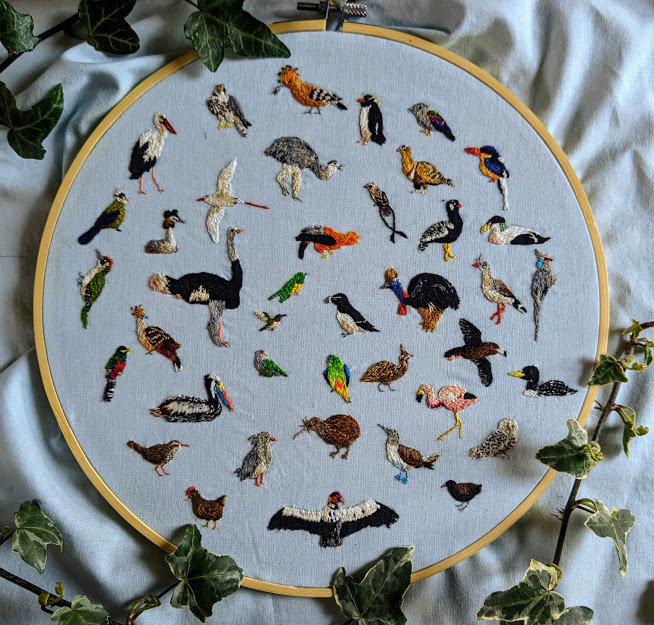 Here is the second bird piece I& #39;ve done, this time featuring all the orders of birds for @TheLabAndField! Based on the IOC, join me as we go through each and every order https://abs.twimg.com/emoji/v2/... draggable="false" alt="🦩" title="Flamingo" aria-label="Emoji: Flamingo">https://abs.twimg.com/emoji/v2/... draggable="false" alt="🦜" title="Parrot" aria-label="Emoji: Parrot">https://abs.twimg.com/emoji/v2/... draggable="false" alt="🐓" title="Hahn" aria-label="Emoji: Hahn">https://abs.twimg.com/emoji/v2/... draggable="false" alt="🦅" title="Adler" aria-label="Emoji: Adler">https://abs.twimg.com/emoji/v2/... draggable="false" alt="🦆" title="Ente" aria-label="Emoji: Ente">https://abs.twimg.com/emoji/v2/... draggable="false" alt="🦉" title="Eule" aria-label="Emoji: Eule">" title="alright Bird Nerds and embroidery fans, let& #39;s do this again! https://abs.twimg.com/emoji/v2/... draggable="false" alt="🥳" title="Partying face" aria-label="Emoji: Partying face">Here is the second bird piece I& #39;ve done, this time featuring all the orders of birds for @TheLabAndField! Based on the IOC, join me as we go through each and every order https://abs.twimg.com/emoji/v2/... draggable="false" alt="🦩" title="Flamingo" aria-label="Emoji: Flamingo">https://abs.twimg.com/emoji/v2/... draggable="false" alt="🦜" title="Parrot" aria-label="Emoji: Parrot">https://abs.twimg.com/emoji/v2/... draggable="false" alt="🐓" title="Hahn" aria-label="Emoji: Hahn">https://abs.twimg.com/emoji/v2/... draggable="false" alt="🦅" title="Adler" aria-label="Emoji: Adler">https://abs.twimg.com/emoji/v2/... draggable="false" alt="🦆" title="Ente" aria-label="Emoji: Ente">https://abs.twimg.com/emoji/v2/... draggable="false" alt="🦉" title="Eule" aria-label="Emoji: Eule">" class="img-responsive" style="max-width:100%;"/>
Here is the second bird piece I& #39;ve done, this time featuring all the orders of birds for @TheLabAndField! Based on the IOC, join me as we go through each and every order https://abs.twimg.com/emoji/v2/... draggable="false" alt="🦩" title="Flamingo" aria-label="Emoji: Flamingo">https://abs.twimg.com/emoji/v2/... draggable="false" alt="🦜" title="Parrot" aria-label="Emoji: Parrot">https://abs.twimg.com/emoji/v2/... draggable="false" alt="🐓" title="Hahn" aria-label="Emoji: Hahn">https://abs.twimg.com/emoji/v2/... draggable="false" alt="🦅" title="Adler" aria-label="Emoji: Adler">https://abs.twimg.com/emoji/v2/... draggable="false" alt="🦆" title="Ente" aria-label="Emoji: Ente">https://abs.twimg.com/emoji/v2/... draggable="false" alt="🦉" title="Eule" aria-label="Emoji: Eule">" title="alright Bird Nerds and embroidery fans, let& #39;s do this again! https://abs.twimg.com/emoji/v2/... draggable="false" alt="🥳" title="Partying face" aria-label="Emoji: Partying face">Here is the second bird piece I& #39;ve done, this time featuring all the orders of birds for @TheLabAndField! Based on the IOC, join me as we go through each and every order https://abs.twimg.com/emoji/v2/... draggable="false" alt="🦩" title="Flamingo" aria-label="Emoji: Flamingo">https://abs.twimg.com/emoji/v2/... draggable="false" alt="🦜" title="Parrot" aria-label="Emoji: Parrot">https://abs.twimg.com/emoji/v2/... draggable="false" alt="🐓" title="Hahn" aria-label="Emoji: Hahn">https://abs.twimg.com/emoji/v2/... draggable="false" alt="🦅" title="Adler" aria-label="Emoji: Adler">https://abs.twimg.com/emoji/v2/... draggable="false" alt="🦆" title="Ente" aria-label="Emoji: Ente">https://abs.twimg.com/emoji/v2/... draggable="false" alt="🦉" title="Eule" aria-label="Emoji: Eule">" class="img-responsive" style="max-width:100%;"/>
 Christiaan Kooyman)" title="First up is the Struthioniformes, or the ostriches!These are represented by two living species, the common and the Somali. Once found across much of Africa and western Asia, they are the largest birb in the world. (https://abs.twimg.com/emoji/v2/... draggable="false" alt="📸" title="Kamera mit Blitz" aria-label="Emoji: Kamera mit Blitz">Christiaan Kooyman)">
Christiaan Kooyman)" title="First up is the Struthioniformes, or the ostriches!These are represented by two living species, the common and the Somali. Once found across much of Africa and western Asia, they are the largest birb in the world. (https://abs.twimg.com/emoji/v2/... draggable="false" alt="📸" title="Kamera mit Blitz" aria-label="Emoji: Kamera mit Blitz">Christiaan Kooyman)">
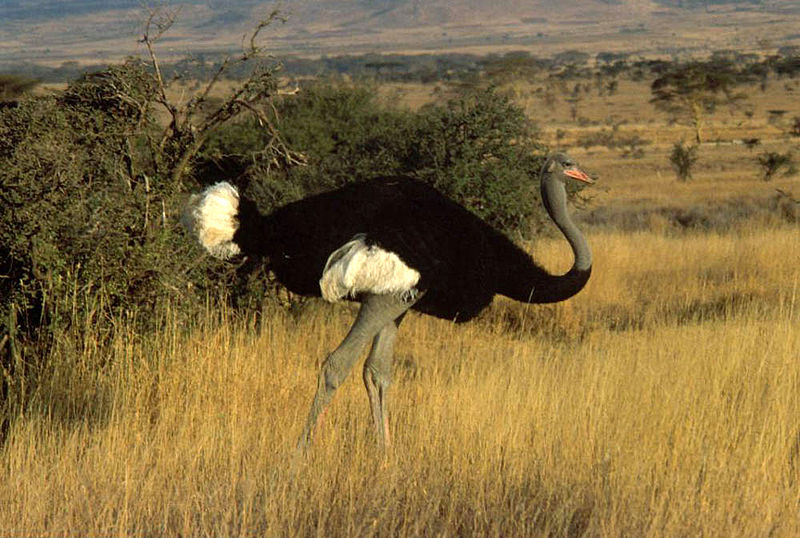 Christiaan Kooyman)" title="First up is the Struthioniformes, or the ostriches!These are represented by two living species, the common and the Somali. Once found across much of Africa and western Asia, they are the largest birb in the world. (https://abs.twimg.com/emoji/v2/... draggable="false" alt="📸" title="Kamera mit Blitz" aria-label="Emoji: Kamera mit Blitz">Christiaan Kooyman)">
Christiaan Kooyman)" title="First up is the Struthioniformes, or the ostriches!These are represented by two living species, the common and the Somali. Once found across much of Africa and western Asia, they are the largest birb in the world. (https://abs.twimg.com/emoji/v2/... draggable="false" alt="📸" title="Kamera mit Blitz" aria-label="Emoji: Kamera mit Blitz">Christiaan Kooyman)">
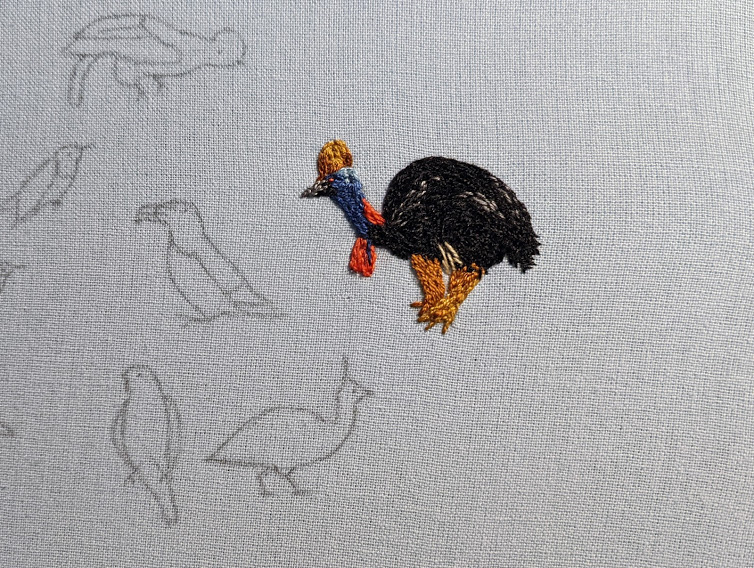 Dezidor)" title="Here we have the Casuariifromes which are cassowaries!There are 3 species of cassowaries found across Australia, New Guinea, and a few of the islands of Indonesia. This one is the southern cassowary, which lays bright pea-green eggs that fade with age. Fancy.(https://abs.twimg.com/emoji/v2/... draggable="false" alt="📸" title="Kamera mit Blitz" aria-label="Emoji: Kamera mit Blitz">Dezidor)">
Dezidor)" title="Here we have the Casuariifromes which are cassowaries!There are 3 species of cassowaries found across Australia, New Guinea, and a few of the islands of Indonesia. This one is the southern cassowary, which lays bright pea-green eggs that fade with age. Fancy.(https://abs.twimg.com/emoji/v2/... draggable="false" alt="📸" title="Kamera mit Blitz" aria-label="Emoji: Kamera mit Blitz">Dezidor)">
 Dezidor)" title="Here we have the Casuariifromes which are cassowaries!There are 3 species of cassowaries found across Australia, New Guinea, and a few of the islands of Indonesia. This one is the southern cassowary, which lays bright pea-green eggs that fade with age. Fancy.(https://abs.twimg.com/emoji/v2/... draggable="false" alt="📸" title="Kamera mit Blitz" aria-label="Emoji: Kamera mit Blitz">Dezidor)">
Dezidor)" title="Here we have the Casuariifromes which are cassowaries!There are 3 species of cassowaries found across Australia, New Guinea, and a few of the islands of Indonesia. This one is the southern cassowary, which lays bright pea-green eggs that fade with age. Fancy.(https://abs.twimg.com/emoji/v2/... draggable="false" alt="📸" title="Kamera mit Blitz" aria-label="Emoji: Kamera mit Blitz">Dezidor)">
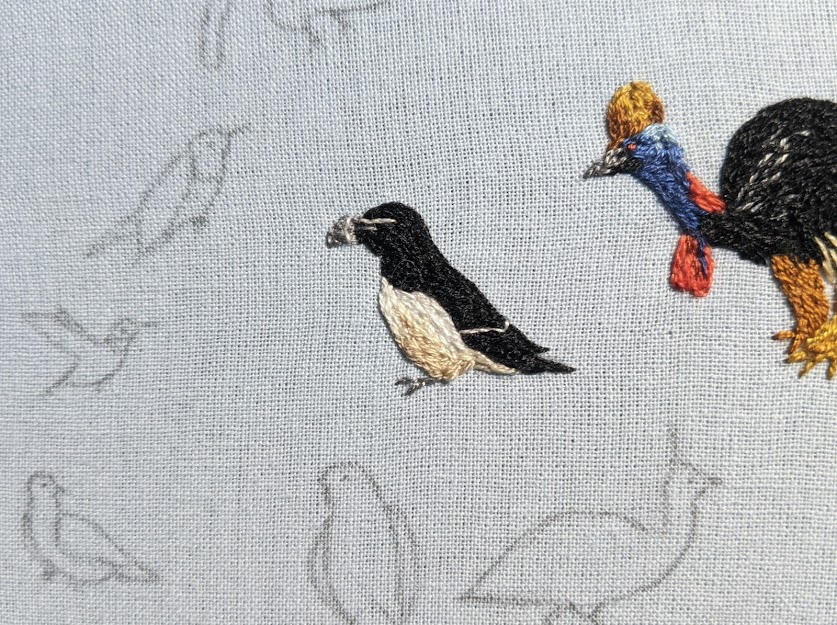 Gsd97jks)" title="Charadriiformes is the group that contains the 350 or so species of gulls, auks and waders. Here we& #39;ve got a really rather lovely razorbill. Found across much of the North Atlantic, they are the closest living relative of the now extinct great auk.(https://abs.twimg.com/emoji/v2/... draggable="false" alt="📸" title="Kamera mit Blitz" aria-label="Emoji: Kamera mit Blitz">Gsd97jks)">
Gsd97jks)" title="Charadriiformes is the group that contains the 350 or so species of gulls, auks and waders. Here we& #39;ve got a really rather lovely razorbill. Found across much of the North Atlantic, they are the closest living relative of the now extinct great auk.(https://abs.twimg.com/emoji/v2/... draggable="false" alt="📸" title="Kamera mit Blitz" aria-label="Emoji: Kamera mit Blitz">Gsd97jks)">
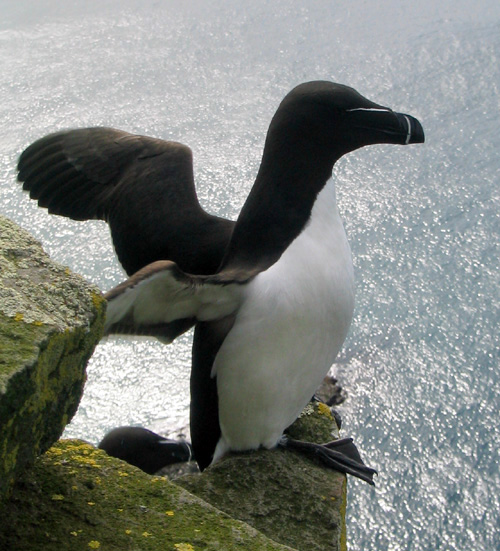 Gsd97jks)" title="Charadriiformes is the group that contains the 350 or so species of gulls, auks and waders. Here we& #39;ve got a really rather lovely razorbill. Found across much of the North Atlantic, they are the closest living relative of the now extinct great auk.(https://abs.twimg.com/emoji/v2/... draggable="false" alt="📸" title="Kamera mit Blitz" aria-label="Emoji: Kamera mit Blitz">Gsd97jks)">
Gsd97jks)" title="Charadriiformes is the group that contains the 350 or so species of gulls, auks and waders. Here we& #39;ve got a really rather lovely razorbill. Found across much of the North Atlantic, they are the closest living relative of the now extinct great auk.(https://abs.twimg.com/emoji/v2/... draggable="false" alt="📸" title="Kamera mit Blitz" aria-label="Emoji: Kamera mit Blitz">Gsd97jks)">
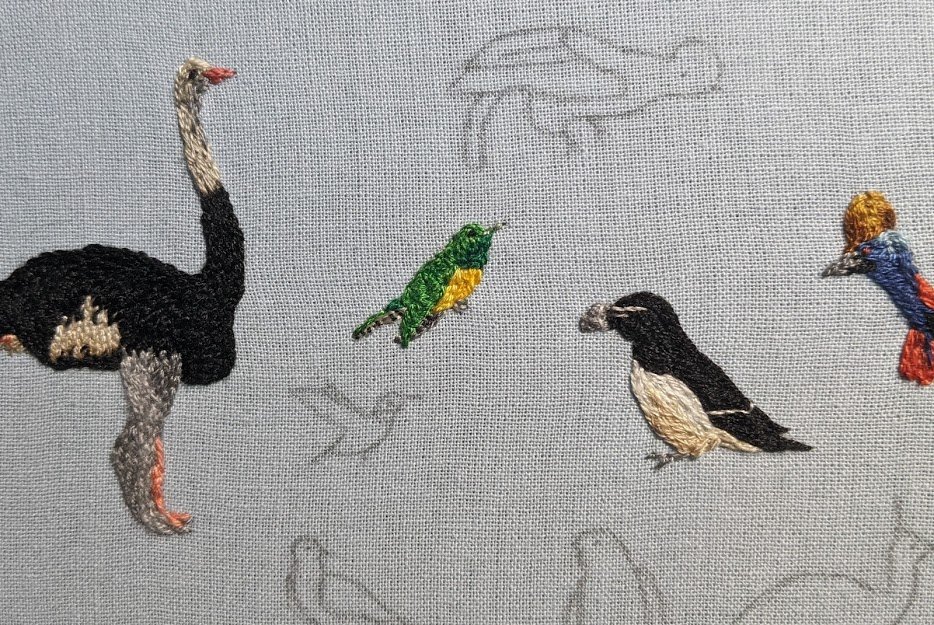 https://abs.twimg.com/emoji/v2/... draggable="false" alt="💚" title="Grünes Herz" aria-label="Emoji: Grünes Herz">(https://abs.twimg.com/emoji/v2/... draggable="false" alt="📸" title="Kamera mit Blitz" aria-label="Emoji: Kamera mit Blitz">Matt Brady)" title="The Cuculiformes are the cuckoos!This little beauty is the African emerald cuckoo, which as you can probably guess lives right across sub-Saharan Africa. They are really quite something to look at. What babes.https://abs.twimg.com/emoji/v2/... draggable="false" alt="💛" title="Gelbes Herz" aria-label="Emoji: Gelbes Herz">https://abs.twimg.com/emoji/v2/... draggable="false" alt="💚" title="Grünes Herz" aria-label="Emoji: Grünes Herz">(https://abs.twimg.com/emoji/v2/... draggable="false" alt="📸" title="Kamera mit Blitz" aria-label="Emoji: Kamera mit Blitz">Matt Brady)">
https://abs.twimg.com/emoji/v2/... draggable="false" alt="💚" title="Grünes Herz" aria-label="Emoji: Grünes Herz">(https://abs.twimg.com/emoji/v2/... draggable="false" alt="📸" title="Kamera mit Blitz" aria-label="Emoji: Kamera mit Blitz">Matt Brady)" title="The Cuculiformes are the cuckoos!This little beauty is the African emerald cuckoo, which as you can probably guess lives right across sub-Saharan Africa. They are really quite something to look at. What babes.https://abs.twimg.com/emoji/v2/... draggable="false" alt="💛" title="Gelbes Herz" aria-label="Emoji: Gelbes Herz">https://abs.twimg.com/emoji/v2/... draggable="false" alt="💚" title="Grünes Herz" aria-label="Emoji: Grünes Herz">(https://abs.twimg.com/emoji/v2/... draggable="false" alt="📸" title="Kamera mit Blitz" aria-label="Emoji: Kamera mit Blitz">Matt Brady)">
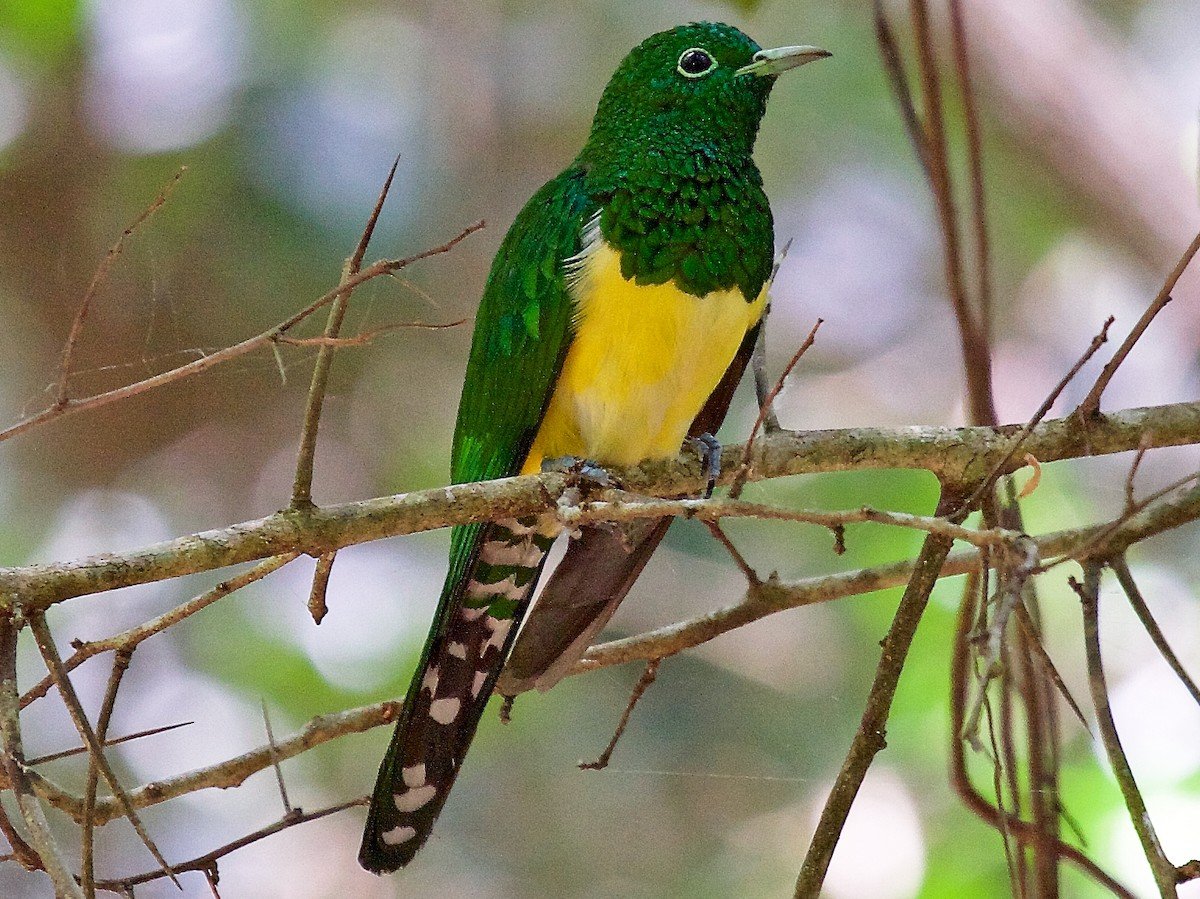 https://abs.twimg.com/emoji/v2/... draggable="false" alt="💚" title="Grünes Herz" aria-label="Emoji: Grünes Herz">(https://abs.twimg.com/emoji/v2/... draggable="false" alt="📸" title="Kamera mit Blitz" aria-label="Emoji: Kamera mit Blitz">Matt Brady)" title="The Cuculiformes are the cuckoos!This little beauty is the African emerald cuckoo, which as you can probably guess lives right across sub-Saharan Africa. They are really quite something to look at. What babes.https://abs.twimg.com/emoji/v2/... draggable="false" alt="💛" title="Gelbes Herz" aria-label="Emoji: Gelbes Herz">https://abs.twimg.com/emoji/v2/... draggable="false" alt="💚" title="Grünes Herz" aria-label="Emoji: Grünes Herz">(https://abs.twimg.com/emoji/v2/... draggable="false" alt="📸" title="Kamera mit Blitz" aria-label="Emoji: Kamera mit Blitz">Matt Brady)">
https://abs.twimg.com/emoji/v2/... draggable="false" alt="💚" title="Grünes Herz" aria-label="Emoji: Grünes Herz">(https://abs.twimg.com/emoji/v2/... draggable="false" alt="📸" title="Kamera mit Blitz" aria-label="Emoji: Kamera mit Blitz">Matt Brady)" title="The Cuculiformes are the cuckoos!This little beauty is the African emerald cuckoo, which as you can probably guess lives right across sub-Saharan Africa. They are really quite something to look at. What babes.https://abs.twimg.com/emoji/v2/... draggable="false" alt="💛" title="Gelbes Herz" aria-label="Emoji: Gelbes Herz">https://abs.twimg.com/emoji/v2/... draggable="false" alt="💚" title="Grünes Herz" aria-label="Emoji: Grünes Herz">(https://abs.twimg.com/emoji/v2/... draggable="false" alt="📸" title="Kamera mit Blitz" aria-label="Emoji: Kamera mit Blitz">Matt Brady)">
 Joe Schneid)" title="Let& #39;s hop over to the Americas to meet the Apodiformes, or hummingbirds!There are 450 species of hummingbirds. Of these the ruby-throated hummingbird winters in Central America before migrating as far north as Canada. You go little bird!(https://abs.twimg.com/emoji/v2/... draggable="false" alt="📸" title="Kamera mit Blitz" aria-label="Emoji: Kamera mit Blitz">Joe Schneid)">
Joe Schneid)" title="Let& #39;s hop over to the Americas to meet the Apodiformes, or hummingbirds!There are 450 species of hummingbirds. Of these the ruby-throated hummingbird winters in Central America before migrating as far north as Canada. You go little bird!(https://abs.twimg.com/emoji/v2/... draggable="false" alt="📸" title="Kamera mit Blitz" aria-label="Emoji: Kamera mit Blitz">Joe Schneid)">
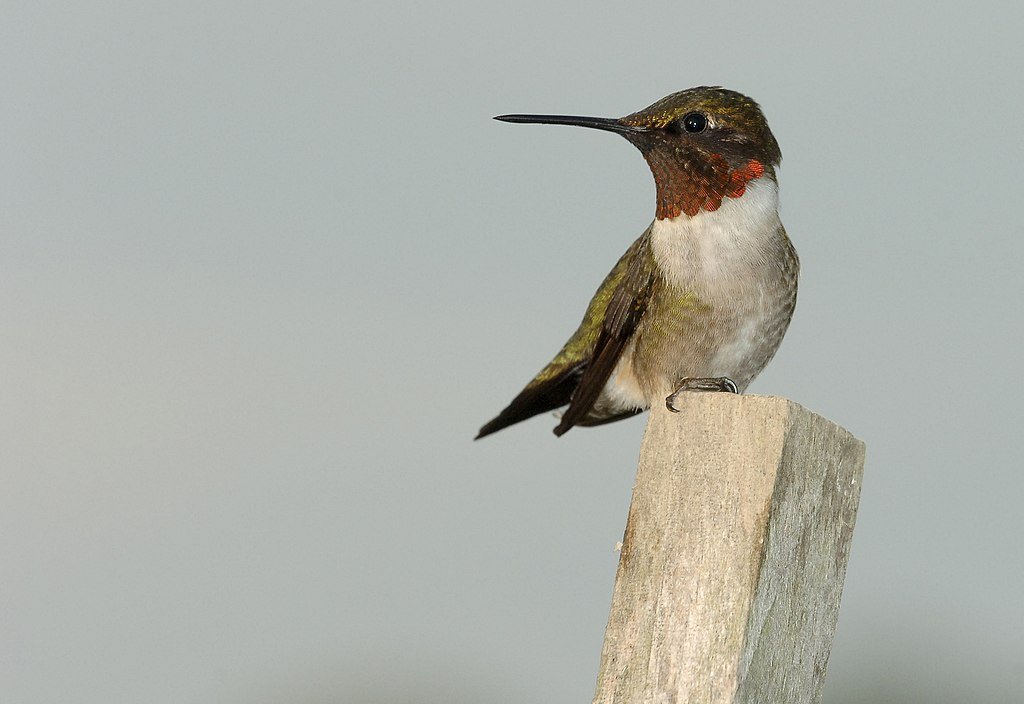 Joe Schneid)" title="Let& #39;s hop over to the Americas to meet the Apodiformes, or hummingbirds!There are 450 species of hummingbirds. Of these the ruby-throated hummingbird winters in Central America before migrating as far north as Canada. You go little bird!(https://abs.twimg.com/emoji/v2/... draggable="false" alt="📸" title="Kamera mit Blitz" aria-label="Emoji: Kamera mit Blitz">Joe Schneid)">
Joe Schneid)" title="Let& #39;s hop over to the Americas to meet the Apodiformes, or hummingbirds!There are 450 species of hummingbirds. Of these the ruby-throated hummingbird winters in Central America before migrating as far north as Canada. You go little bird!(https://abs.twimg.com/emoji/v2/... draggable="false" alt="📸" title="Kamera mit Blitz" aria-label="Emoji: Kamera mit Blitz">Joe Schneid)">
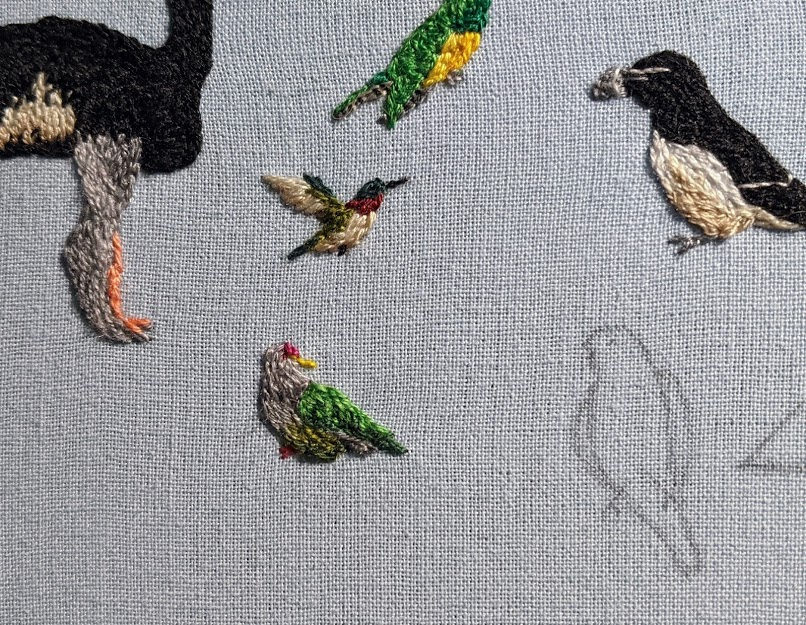 (https://abs.twimg.com/emoji/v2/... draggable="false" alt="📸" title="Kamera mit Blitz" aria-label="Emoji: Kamera mit Blitz">Phil Tizzard)" title="The best group of birds next, the Columbiformes. These are the glorious pigeons and doves. Here we have a rather lovely Henderson fruit dove, which is only found on the tiny Henderson Island in the middle of the South Pacific living a tropical life https://abs.twimg.com/emoji/v2/... draggable="false" alt="🌴" title="Palme" aria-label="Emoji: Palme">(https://abs.twimg.com/emoji/v2/... draggable="false" alt="📸" title="Kamera mit Blitz" aria-label="Emoji: Kamera mit Blitz">Phil Tizzard)">
(https://abs.twimg.com/emoji/v2/... draggable="false" alt="📸" title="Kamera mit Blitz" aria-label="Emoji: Kamera mit Blitz">Phil Tizzard)" title="The best group of birds next, the Columbiformes. These are the glorious pigeons and doves. Here we have a rather lovely Henderson fruit dove, which is only found on the tiny Henderson Island in the middle of the South Pacific living a tropical life https://abs.twimg.com/emoji/v2/... draggable="false" alt="🌴" title="Palme" aria-label="Emoji: Palme">(https://abs.twimg.com/emoji/v2/... draggable="false" alt="📸" title="Kamera mit Blitz" aria-label="Emoji: Kamera mit Blitz">Phil Tizzard)">
 (https://abs.twimg.com/emoji/v2/... draggable="false" alt="📸" title="Kamera mit Blitz" aria-label="Emoji: Kamera mit Blitz">Phil Tizzard)" title="The best group of birds next, the Columbiformes. These are the glorious pigeons and doves. Here we have a rather lovely Henderson fruit dove, which is only found on the tiny Henderson Island in the middle of the South Pacific living a tropical life https://abs.twimg.com/emoji/v2/... draggable="false" alt="🌴" title="Palme" aria-label="Emoji: Palme">(https://abs.twimg.com/emoji/v2/... draggable="false" alt="📸" title="Kamera mit Blitz" aria-label="Emoji: Kamera mit Blitz">Phil Tizzard)">
(https://abs.twimg.com/emoji/v2/... draggable="false" alt="📸" title="Kamera mit Blitz" aria-label="Emoji: Kamera mit Blitz">Phil Tizzard)" title="The best group of birds next, the Columbiformes. These are the glorious pigeons and doves. Here we have a rather lovely Henderson fruit dove, which is only found on the tiny Henderson Island in the middle of the South Pacific living a tropical life https://abs.twimg.com/emoji/v2/... draggable="false" alt="🌴" title="Palme" aria-label="Emoji: Palme">(https://abs.twimg.com/emoji/v2/... draggable="false" alt="📸" title="Kamera mit Blitz" aria-label="Emoji: Kamera mit Blitz">Phil Tizzard)">
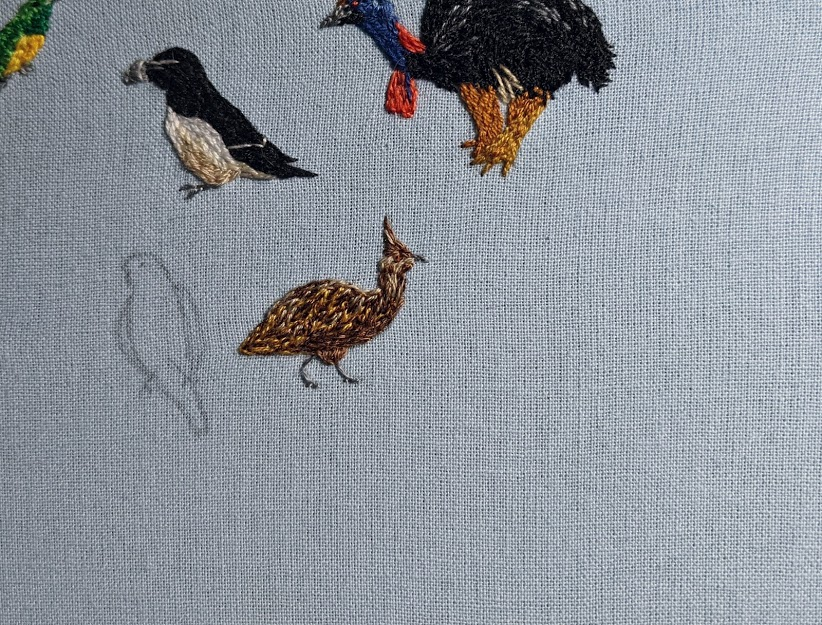 DickDaniels)" title="The Tinamiformes are better known as the tinamous, but even then you may not have heard of them.46 species are found across Central and South America, including this elegant-crested tinamou. They are actually most closely related to ratites, like the ostrich.(https://abs.twimg.com/emoji/v2/... draggable="false" alt="📸" title="Kamera mit Blitz" aria-label="Emoji: Kamera mit Blitz">DickDaniels)">
DickDaniels)" title="The Tinamiformes are better known as the tinamous, but even then you may not have heard of them.46 species are found across Central and South America, including this elegant-crested tinamou. They are actually most closely related to ratites, like the ostrich.(https://abs.twimg.com/emoji/v2/... draggable="false" alt="📸" title="Kamera mit Blitz" aria-label="Emoji: Kamera mit Blitz">DickDaniels)">
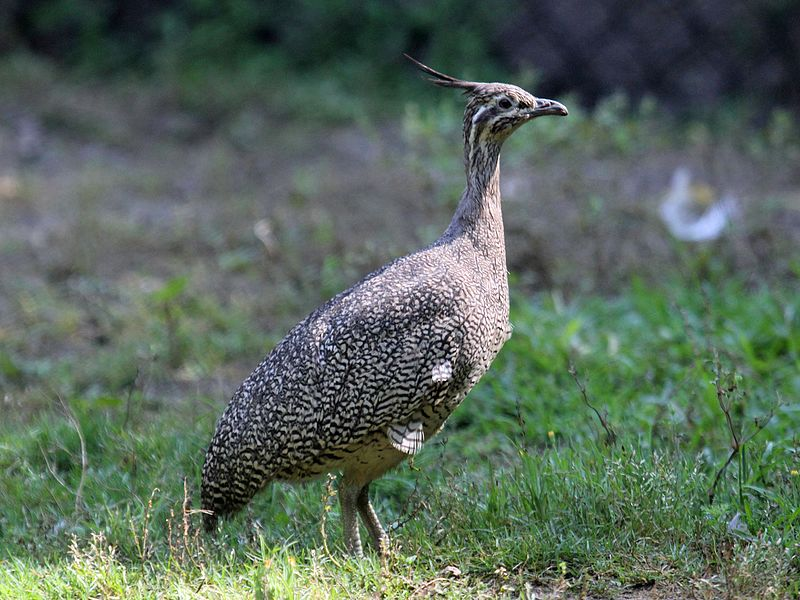 DickDaniels)" title="The Tinamiformes are better known as the tinamous, but even then you may not have heard of them.46 species are found across Central and South America, including this elegant-crested tinamou. They are actually most closely related to ratites, like the ostrich.(https://abs.twimg.com/emoji/v2/... draggable="false" alt="📸" title="Kamera mit Blitz" aria-label="Emoji: Kamera mit Blitz">DickDaniels)">
DickDaniels)" title="The Tinamiformes are better known as the tinamous, but even then you may not have heard of them.46 species are found across Central and South America, including this elegant-crested tinamou. They are actually most closely related to ratites, like the ostrich.(https://abs.twimg.com/emoji/v2/... draggable="false" alt="📸" title="Kamera mit Blitz" aria-label="Emoji: Kamera mit Blitz">DickDaniels)">
 JJ Harrison)" title="Next up are the ostentatious Psittaciformes, better known as the parrots. One of almost 400 species, the orange-bellied parrot is found in southern Australia and is critically endangered. They are one of only 3 species of parrots that migrate. (https://abs.twimg.com/emoji/v2/... draggable="false" alt="📸" title="Kamera mit Blitz" aria-label="Emoji: Kamera mit Blitz">JJ Harrison)">
JJ Harrison)" title="Next up are the ostentatious Psittaciformes, better known as the parrots. One of almost 400 species, the orange-bellied parrot is found in southern Australia and is critically endangered. They are one of only 3 species of parrots that migrate. (https://abs.twimg.com/emoji/v2/... draggable="false" alt="📸" title="Kamera mit Blitz" aria-label="Emoji: Kamera mit Blitz">JJ Harrison)">
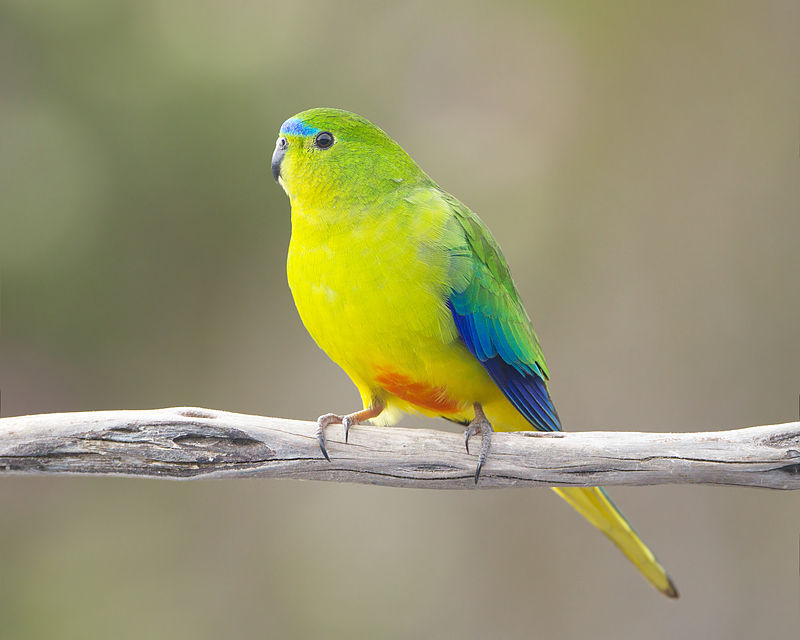 JJ Harrison)" title="Next up are the ostentatious Psittaciformes, better known as the parrots. One of almost 400 species, the orange-bellied parrot is found in southern Australia and is critically endangered. They are one of only 3 species of parrots that migrate. (https://abs.twimg.com/emoji/v2/... draggable="false" alt="📸" title="Kamera mit Blitz" aria-label="Emoji: Kamera mit Blitz">JJ Harrison)">
JJ Harrison)" title="Next up are the ostentatious Psittaciformes, better known as the parrots. One of almost 400 species, the orange-bellied parrot is found in southern Australia and is critically endangered. They are one of only 3 species of parrots that migrate. (https://abs.twimg.com/emoji/v2/... draggable="false" alt="📸" title="Kamera mit Blitz" aria-label="Emoji: Kamera mit Blitz">JJ Harrison)">
 (https://abs.twimg.com/emoji/v2/... draggable="false" alt="📸" title="Kamera mit Blitz" aria-label="Emoji: Kamera mit Blitz">Jerry Thompson)" title="And we& #39;re now on to the Passeriformes. These are the passerines, and contain a frankly unnecessary number of birds. HALF OF ALL BIRD SPECIES. That& #39;s roughly 6,500, to be precise. Why??? Obvs had to represent these with a cock-of-the-rock https://abs.twimg.com/emoji/v2/... draggable="false" alt="😏" title="Grinsendes Gesicht" aria-label="Emoji: Grinsendes Gesicht">(https://abs.twimg.com/emoji/v2/... draggable="false" alt="📸" title="Kamera mit Blitz" aria-label="Emoji: Kamera mit Blitz">Jerry Thompson)">
(https://abs.twimg.com/emoji/v2/... draggable="false" alt="📸" title="Kamera mit Blitz" aria-label="Emoji: Kamera mit Blitz">Jerry Thompson)" title="And we& #39;re now on to the Passeriformes. These are the passerines, and contain a frankly unnecessary number of birds. HALF OF ALL BIRD SPECIES. That& #39;s roughly 6,500, to be precise. Why??? Obvs had to represent these with a cock-of-the-rock https://abs.twimg.com/emoji/v2/... draggable="false" alt="😏" title="Grinsendes Gesicht" aria-label="Emoji: Grinsendes Gesicht">(https://abs.twimg.com/emoji/v2/... draggable="false" alt="📸" title="Kamera mit Blitz" aria-label="Emoji: Kamera mit Blitz">Jerry Thompson)">
 (https://abs.twimg.com/emoji/v2/... draggable="false" alt="📸" title="Kamera mit Blitz" aria-label="Emoji: Kamera mit Blitz">Jerry Thompson)" title="And we& #39;re now on to the Passeriformes. These are the passerines, and contain a frankly unnecessary number of birds. HALF OF ALL BIRD SPECIES. That& #39;s roughly 6,500, to be precise. Why??? Obvs had to represent these with a cock-of-the-rock https://abs.twimg.com/emoji/v2/... draggable="false" alt="😏" title="Grinsendes Gesicht" aria-label="Emoji: Grinsendes Gesicht">(https://abs.twimg.com/emoji/v2/... draggable="false" alt="📸" title="Kamera mit Blitz" aria-label="Emoji: Kamera mit Blitz">Jerry Thompson)">
(https://abs.twimg.com/emoji/v2/... draggable="false" alt="📸" title="Kamera mit Blitz" aria-label="Emoji: Kamera mit Blitz">Jerry Thompson)" title="And we& #39;re now on to the Passeriformes. These are the passerines, and contain a frankly unnecessary number of birds. HALF OF ALL BIRD SPECIES. That& #39;s roughly 6,500, to be precise. Why??? Obvs had to represent these with a cock-of-the-rock https://abs.twimg.com/emoji/v2/... draggable="false" alt="😏" title="Grinsendes Gesicht" aria-label="Emoji: Grinsendes Gesicht">(https://abs.twimg.com/emoji/v2/... draggable="false" alt="📸" title="Kamera mit Blitz" aria-label="Emoji: Kamera mit Blitz">Jerry Thompson)">
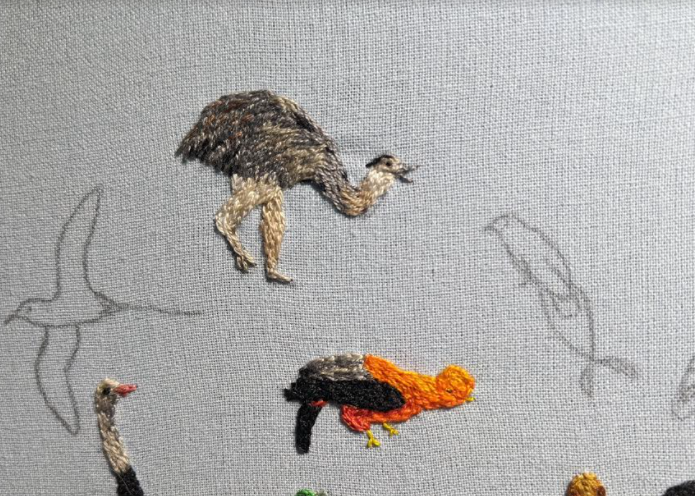 Rufus46)" title="We& #39;re back to the big birbs with the Rheiformes, or rheas. These are large flightless birds of South America. This one is a greater rhea, or ñandú, which live out on the pampas. Apparently there is a wild breeding population in northern Germany, because why not.(https://abs.twimg.com/emoji/v2/... draggable="false" alt="📸" title="Kamera mit Blitz" aria-label="Emoji: Kamera mit Blitz">Rufus46)">
Rufus46)" title="We& #39;re back to the big birbs with the Rheiformes, or rheas. These are large flightless birds of South America. This one is a greater rhea, or ñandú, which live out on the pampas. Apparently there is a wild breeding population in northern Germany, because why not.(https://abs.twimg.com/emoji/v2/... draggable="false" alt="📸" title="Kamera mit Blitz" aria-label="Emoji: Kamera mit Blitz">Rufus46)">
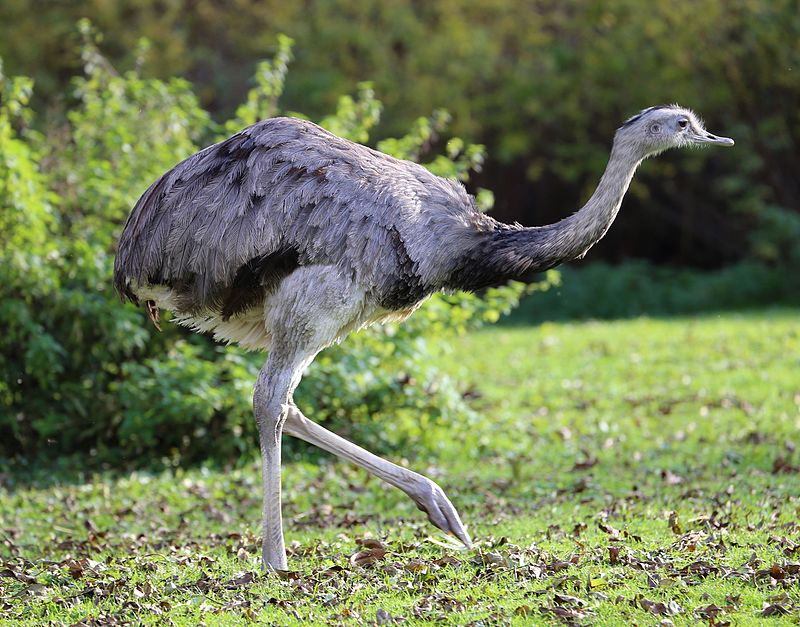 Rufus46)" title="We& #39;re back to the big birbs with the Rheiformes, or rheas. These are large flightless birds of South America. This one is a greater rhea, or ñandú, which live out on the pampas. Apparently there is a wild breeding population in northern Germany, because why not.(https://abs.twimg.com/emoji/v2/... draggable="false" alt="📸" title="Kamera mit Blitz" aria-label="Emoji: Kamera mit Blitz">Rufus46)">
Rufus46)" title="We& #39;re back to the big birbs with the Rheiformes, or rheas. These are large flightless birds of South America. This one is a greater rhea, or ñandú, which live out on the pampas. Apparently there is a wild breeding population in northern Germany, because why not.(https://abs.twimg.com/emoji/v2/... draggable="false" alt="📸" title="Kamera mit Blitz" aria-label="Emoji: Kamera mit Blitz">Rufus46)">
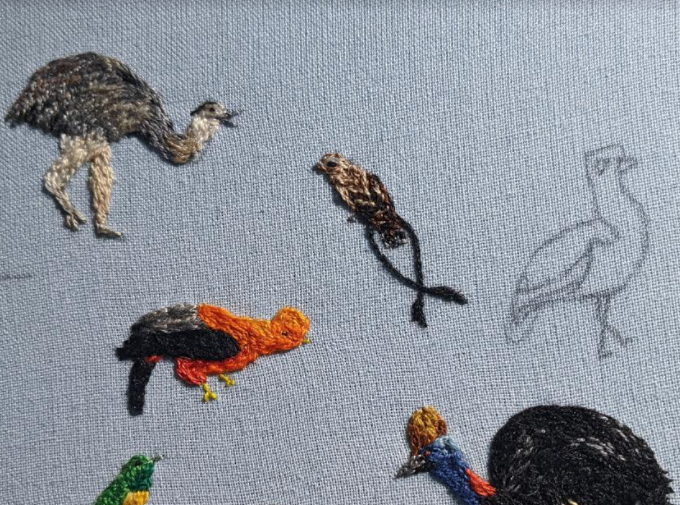 Jan Steffen)" title="Next on the list is the Caprimulgiformes which includes the nightjars. As you could probably guess these birds are generally nocturnal. This is a standard-winged nightjar, although nothing about its wings are strandard. The utter weirdos. (https://abs.twimg.com/emoji/v2/... draggable="false" alt="📸" title="Kamera mit Blitz" aria-label="Emoji: Kamera mit Blitz">Jan Steffen)">
Jan Steffen)" title="Next on the list is the Caprimulgiformes which includes the nightjars. As you could probably guess these birds are generally nocturnal. This is a standard-winged nightjar, although nothing about its wings are strandard. The utter weirdos. (https://abs.twimg.com/emoji/v2/... draggable="false" alt="📸" title="Kamera mit Blitz" aria-label="Emoji: Kamera mit Blitz">Jan Steffen)">
 Jan Steffen)" title="Next on the list is the Caprimulgiformes which includes the nightjars. As you could probably guess these birds are generally nocturnal. This is a standard-winged nightjar, although nothing about its wings are strandard. The utter weirdos. (https://abs.twimg.com/emoji/v2/... draggable="false" alt="📸" title="Kamera mit Blitz" aria-label="Emoji: Kamera mit Blitz">Jan Steffen)">
Jan Steffen)" title="Next on the list is the Caprimulgiformes which includes the nightjars. As you could probably guess these birds are generally nocturnal. This is a standard-winged nightjar, although nothing about its wings are strandard. The utter weirdos. (https://abs.twimg.com/emoji/v2/... draggable="false" alt="📸" title="Kamera mit Blitz" aria-label="Emoji: Kamera mit Blitz">Jan Steffen)">
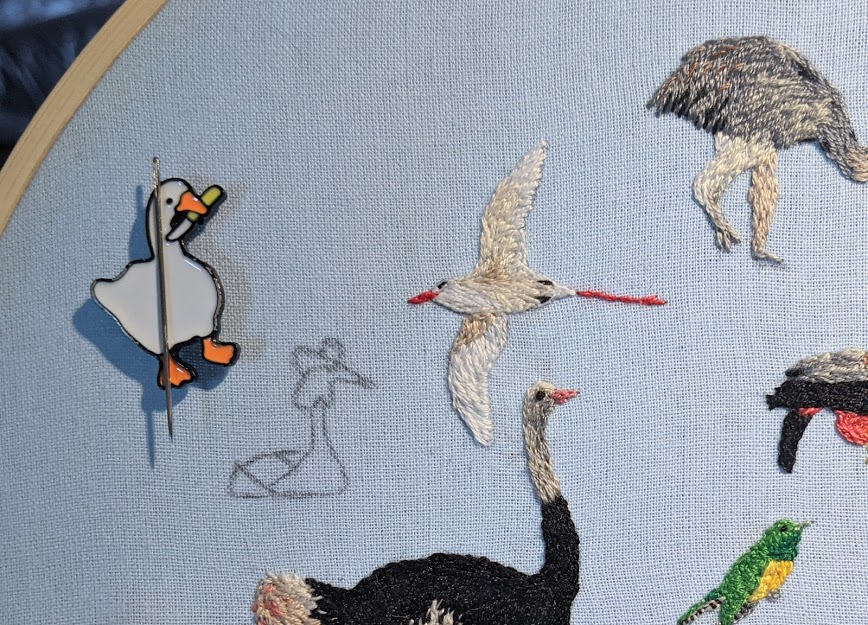 @TheLabAndField)" title="We& #39;re out to sea with the Phaethontiformes. These only contain one family, the tropicbirds. There are only three living species and this one is the red-tailed tropicbird. It can be found from the east coast of Africa right over to the west coast of the USA.(https://abs.twimg.com/emoji/v2/... draggable="false" alt="📸" title="Kamera mit Blitz" aria-label="Emoji: Kamera mit Blitz"> @TheLabAndField)">
@TheLabAndField)" title="We& #39;re out to sea with the Phaethontiformes. These only contain one family, the tropicbirds. There are only three living species and this one is the red-tailed tropicbird. It can be found from the east coast of Africa right over to the west coast of the USA.(https://abs.twimg.com/emoji/v2/... draggable="false" alt="📸" title="Kamera mit Blitz" aria-label="Emoji: Kamera mit Blitz"> @TheLabAndField)">
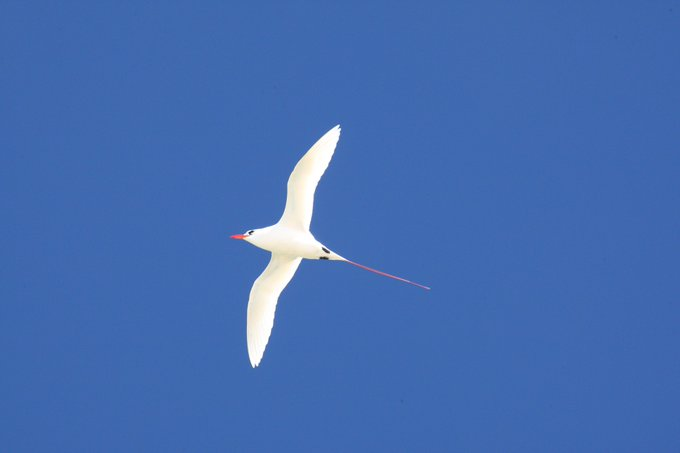 @TheLabAndField)" title="We& #39;re out to sea with the Phaethontiformes. These only contain one family, the tropicbirds. There are only three living species and this one is the red-tailed tropicbird. It can be found from the east coast of Africa right over to the west coast of the USA.(https://abs.twimg.com/emoji/v2/... draggable="false" alt="📸" title="Kamera mit Blitz" aria-label="Emoji: Kamera mit Blitz"> @TheLabAndField)">
@TheLabAndField)" title="We& #39;re out to sea with the Phaethontiformes. These only contain one family, the tropicbirds. There are only three living species and this one is the red-tailed tropicbird. It can be found from the east coast of Africa right over to the west coast of the USA.(https://abs.twimg.com/emoji/v2/... draggable="false" alt="📸" title="Kamera mit Blitz" aria-label="Emoji: Kamera mit Blitz"> @TheLabAndField)">
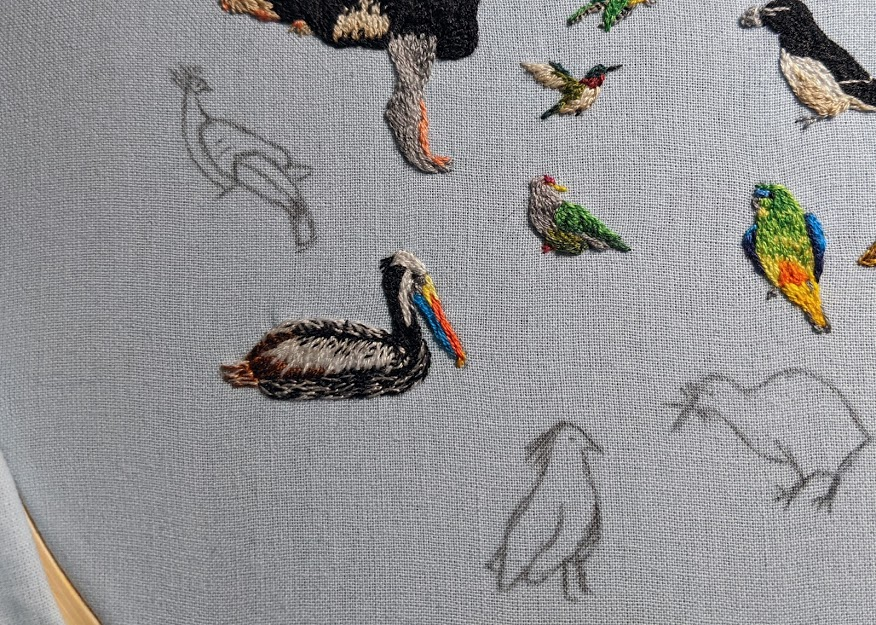 Manuel González Olaechea y Franco)" title="Sticking to the water we& #39;ve got the Pelecaniformes.Ok I cannot lie, I am not really a fan of the pelicans (I& #39;m sorry!). But while doing this I discovered the Peruvian pelican and I like them A LOT. Just look at their bills! So colourful. (https://abs.twimg.com/emoji/v2/... draggable="false" alt="📸" title="Kamera mit Blitz" aria-label="Emoji: Kamera mit Blitz">Manuel González Olaechea y Franco)">
Manuel González Olaechea y Franco)" title="Sticking to the water we& #39;ve got the Pelecaniformes.Ok I cannot lie, I am not really a fan of the pelicans (I& #39;m sorry!). But while doing this I discovered the Peruvian pelican and I like them A LOT. Just look at their bills! So colourful. (https://abs.twimg.com/emoji/v2/... draggable="false" alt="📸" title="Kamera mit Blitz" aria-label="Emoji: Kamera mit Blitz">Manuel González Olaechea y Franco)">
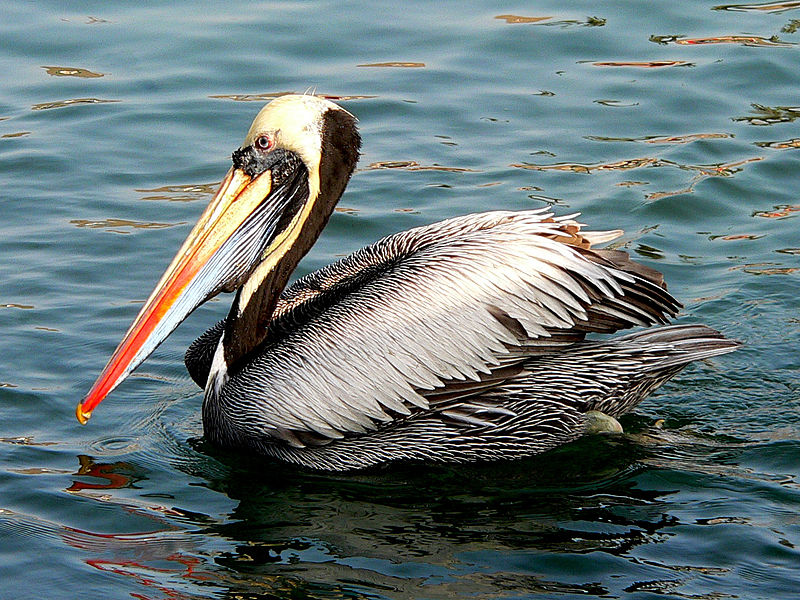 Manuel González Olaechea y Franco)" title="Sticking to the water we& #39;ve got the Pelecaniformes.Ok I cannot lie, I am not really a fan of the pelicans (I& #39;m sorry!). But while doing this I discovered the Peruvian pelican and I like them A LOT. Just look at their bills! So colourful. (https://abs.twimg.com/emoji/v2/... draggable="false" alt="📸" title="Kamera mit Blitz" aria-label="Emoji: Kamera mit Blitz">Manuel González Olaechea y Franco)">
Manuel González Olaechea y Franco)" title="Sticking to the water we& #39;ve got the Pelecaniformes.Ok I cannot lie, I am not really a fan of the pelicans (I& #39;m sorry!). But while doing this I discovered the Peruvian pelican and I like them A LOT. Just look at their bills! So colourful. (https://abs.twimg.com/emoji/v2/... draggable="false" alt="📸" title="Kamera mit Blitz" aria-label="Emoji: Kamera mit Blitz">Manuel González Olaechea y Franco)">
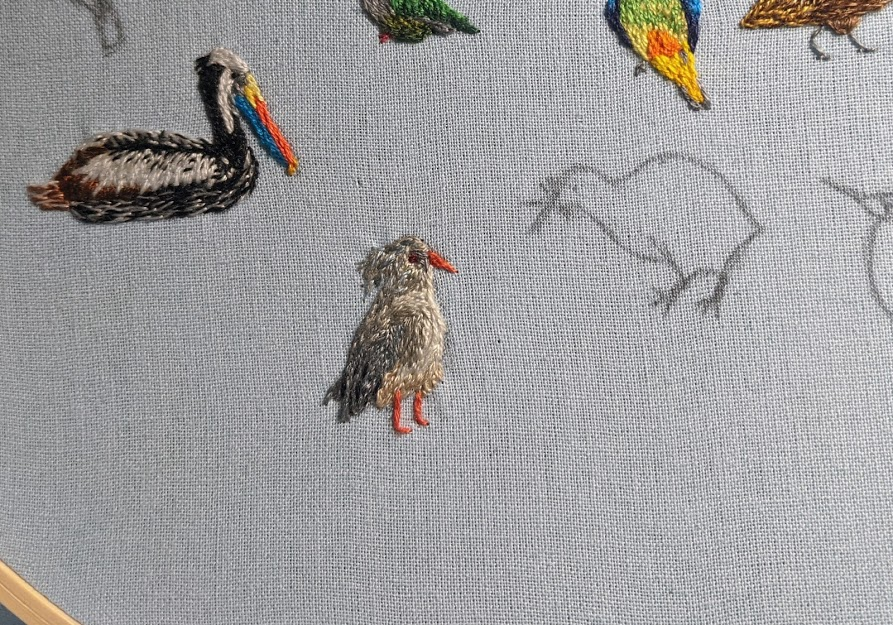 Pierre Fidenci)" title="One of my all-time faves next, the Eurypygiformes. These are so great. The order only contains two species: the sunbittern from South America and the kagu which lives on New Caledonia. SO COOL. This is a kagu and they look like they& #39;re wearing red boots.(https://abs.twimg.com/emoji/v2/... draggable="false" alt="📸" title="Kamera mit Blitz" aria-label="Emoji: Kamera mit Blitz">Pierre Fidenci)">
Pierre Fidenci)" title="One of my all-time faves next, the Eurypygiformes. These are so great. The order only contains two species: the sunbittern from South America and the kagu which lives on New Caledonia. SO COOL. This is a kagu and they look like they& #39;re wearing red boots.(https://abs.twimg.com/emoji/v2/... draggable="false" alt="📸" title="Kamera mit Blitz" aria-label="Emoji: Kamera mit Blitz">Pierre Fidenci)">
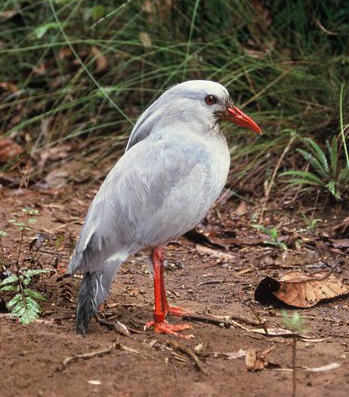 Pierre Fidenci)" title="One of my all-time faves next, the Eurypygiformes. These are so great. The order only contains two species: the sunbittern from South America and the kagu which lives on New Caledonia. SO COOL. This is a kagu and they look like they& #39;re wearing red boots.(https://abs.twimg.com/emoji/v2/... draggable="false" alt="📸" title="Kamera mit Blitz" aria-label="Emoji: Kamera mit Blitz">Pierre Fidenci)">
Pierre Fidenci)" title="One of my all-time faves next, the Eurypygiformes. These are so great. The order only contains two species: the sunbittern from South America and the kagu which lives on New Caledonia. SO COOL. This is a kagu and they look like they& #39;re wearing red boots.(https://abs.twimg.com/emoji/v2/... draggable="false" alt="📸" title="Kamera mit Blitz" aria-label="Emoji: Kamera mit Blitz">Pierre Fidenci)">
 .There are five species of kiwi, all of which are only found on New Zealand. This one is the North Island brown kiwi, which is a very utilitarian name tbh. They make up for it in looks.(https://abs.twimg.com/emoji/v2/... draggable="false" alt="📸" title="Kamera mit Blitz" aria-label="Emoji: Kamera mit Blitz">Klaus Rudloff)" title="Sticking to the ground, we& #39;ve got the Apterygiformes, or the kiwis https://abs.twimg.com/emoji/v2/... draggable="false" alt="🥰" title="Smiling face with 3 hearts" aria-label="Emoji: Smiling face with 3 hearts">.There are five species of kiwi, all of which are only found on New Zealand. This one is the North Island brown kiwi, which is a very utilitarian name tbh. They make up for it in looks.(https://abs.twimg.com/emoji/v2/... draggable="false" alt="📸" title="Kamera mit Blitz" aria-label="Emoji: Kamera mit Blitz">Klaus Rudloff)">
.There are five species of kiwi, all of which are only found on New Zealand. This one is the North Island brown kiwi, which is a very utilitarian name tbh. They make up for it in looks.(https://abs.twimg.com/emoji/v2/... draggable="false" alt="📸" title="Kamera mit Blitz" aria-label="Emoji: Kamera mit Blitz">Klaus Rudloff)" title="Sticking to the ground, we& #39;ve got the Apterygiformes, or the kiwis https://abs.twimg.com/emoji/v2/... draggable="false" alt="🥰" title="Smiling face with 3 hearts" aria-label="Emoji: Smiling face with 3 hearts">.There are five species of kiwi, all of which are only found on New Zealand. This one is the North Island brown kiwi, which is a very utilitarian name tbh. They make up for it in looks.(https://abs.twimg.com/emoji/v2/... draggable="false" alt="📸" title="Kamera mit Blitz" aria-label="Emoji: Kamera mit Blitz">Klaus Rudloff)">
 .There are five species of kiwi, all of which are only found on New Zealand. This one is the North Island brown kiwi, which is a very utilitarian name tbh. They make up for it in looks.(https://abs.twimg.com/emoji/v2/... draggable="false" alt="📸" title="Kamera mit Blitz" aria-label="Emoji: Kamera mit Blitz">Klaus Rudloff)" title="Sticking to the ground, we& #39;ve got the Apterygiformes, or the kiwis https://abs.twimg.com/emoji/v2/... draggable="false" alt="🥰" title="Smiling face with 3 hearts" aria-label="Emoji: Smiling face with 3 hearts">.There are five species of kiwi, all of which are only found on New Zealand. This one is the North Island brown kiwi, which is a very utilitarian name tbh. They make up for it in looks.(https://abs.twimg.com/emoji/v2/... draggable="false" alt="📸" title="Kamera mit Blitz" aria-label="Emoji: Kamera mit Blitz">Klaus Rudloff)">
.There are five species of kiwi, all of which are only found on New Zealand. This one is the North Island brown kiwi, which is a very utilitarian name tbh. They make up for it in looks.(https://abs.twimg.com/emoji/v2/... draggable="false" alt="📸" title="Kamera mit Blitz" aria-label="Emoji: Kamera mit Blitz">Klaus Rudloff)" title="Sticking to the ground, we& #39;ve got the Apterygiformes, or the kiwis https://abs.twimg.com/emoji/v2/... draggable="false" alt="🥰" title="Smiling face with 3 hearts" aria-label="Emoji: Smiling face with 3 hearts">.There are five species of kiwi, all of which are only found on New Zealand. This one is the North Island brown kiwi, which is a very utilitarian name tbh. They make up for it in looks.(https://abs.twimg.com/emoji/v2/... draggable="false" alt="📸" title="Kamera mit Blitz" aria-label="Emoji: Kamera mit Blitz">Klaus Rudloff)">
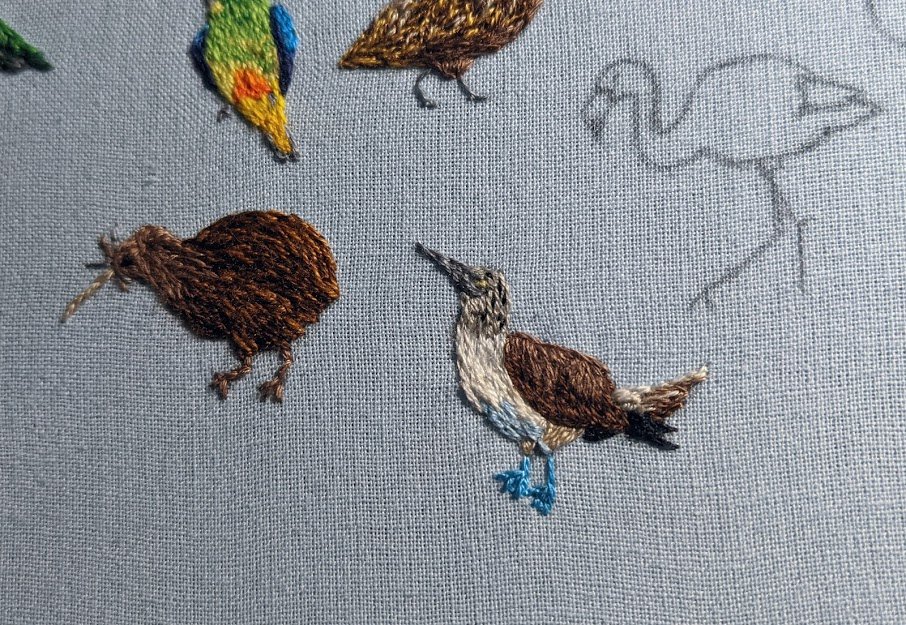 Benjamint444)" title="We& #39;re back to the drink again with the Suliformes.This includes a wide variety of birds that live in and on the water, such as cormorants, frigatebirds and gannets. It also includes the boobies, so of course I stitched a blue-footed one, what do you expect? (https://abs.twimg.com/emoji/v2/... draggable="false" alt="📸" title="Kamera mit Blitz" aria-label="Emoji: Kamera mit Blitz">Benjamint444)">
Benjamint444)" title="We& #39;re back to the drink again with the Suliformes.This includes a wide variety of birds that live in and on the water, such as cormorants, frigatebirds and gannets. It also includes the boobies, so of course I stitched a blue-footed one, what do you expect? (https://abs.twimg.com/emoji/v2/... draggable="false" alt="📸" title="Kamera mit Blitz" aria-label="Emoji: Kamera mit Blitz">Benjamint444)">
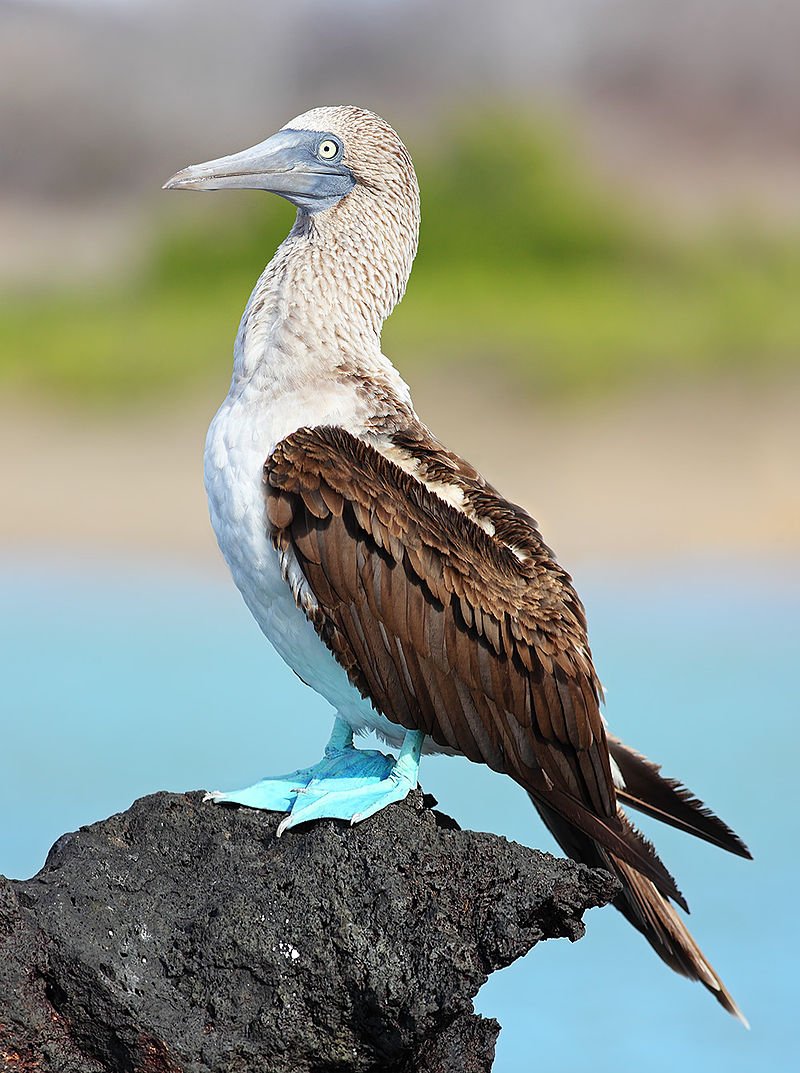 Benjamint444)" title="We& #39;re back to the drink again with the Suliformes.This includes a wide variety of birds that live in and on the water, such as cormorants, frigatebirds and gannets. It also includes the boobies, so of course I stitched a blue-footed one, what do you expect? (https://abs.twimg.com/emoji/v2/... draggable="false" alt="📸" title="Kamera mit Blitz" aria-label="Emoji: Kamera mit Blitz">Benjamint444)">
Benjamint444)" title="We& #39;re back to the drink again with the Suliformes.This includes a wide variety of birds that live in and on the water, such as cormorants, frigatebirds and gannets. It also includes the boobies, so of course I stitched a blue-footed one, what do you expect? (https://abs.twimg.com/emoji/v2/... draggable="false" alt="📸" title="Kamera mit Blitz" aria-label="Emoji: Kamera mit Blitz">Benjamint444)">
 Duncan)" title="There are a lot of wet birds. The Procellariformes is the group that contains the albatrosses, petrels and shearwaters. This is a flesh-footed shearwater. They are one of the most plastic-contaminated species of birds in the world. Well done, humans.(https://abs.twimg.com/emoji/v2/... draggable="false" alt="📸" title="Kamera mit Blitz" aria-label="Emoji: Kamera mit Blitz">Duncan)">
Duncan)" title="There are a lot of wet birds. The Procellariformes is the group that contains the albatrosses, petrels and shearwaters. This is a flesh-footed shearwater. They are one of the most plastic-contaminated species of birds in the world. Well done, humans.(https://abs.twimg.com/emoji/v2/... draggable="false" alt="📸" title="Kamera mit Blitz" aria-label="Emoji: Kamera mit Blitz">Duncan)">
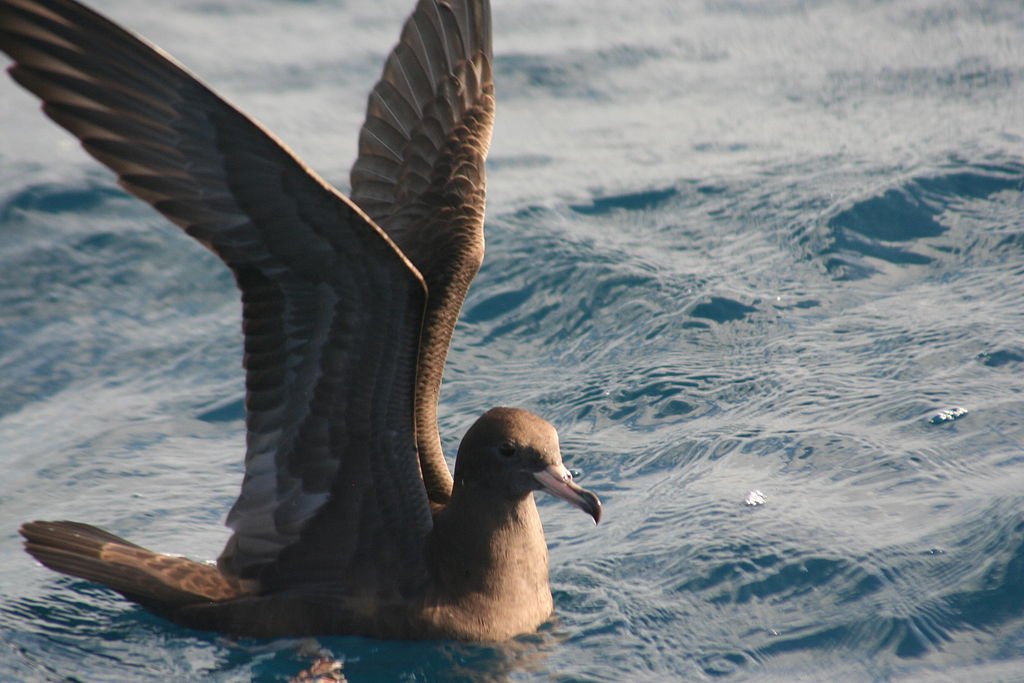 Duncan)" title="There are a lot of wet birds. The Procellariformes is the group that contains the albatrosses, petrels and shearwaters. This is a flesh-footed shearwater. They are one of the most plastic-contaminated species of birds in the world. Well done, humans.(https://abs.twimg.com/emoji/v2/... draggable="false" alt="📸" title="Kamera mit Blitz" aria-label="Emoji: Kamera mit Blitz">Duncan)">
Duncan)" title="There are a lot of wet birds. The Procellariformes is the group that contains the albatrosses, petrels and shearwaters. This is a flesh-footed shearwater. They are one of the most plastic-contaminated species of birds in the world. Well done, humans.(https://abs.twimg.com/emoji/v2/... draggable="false" alt="📸" title="Kamera mit Blitz" aria-label="Emoji: Kamera mit Blitz">Duncan)">
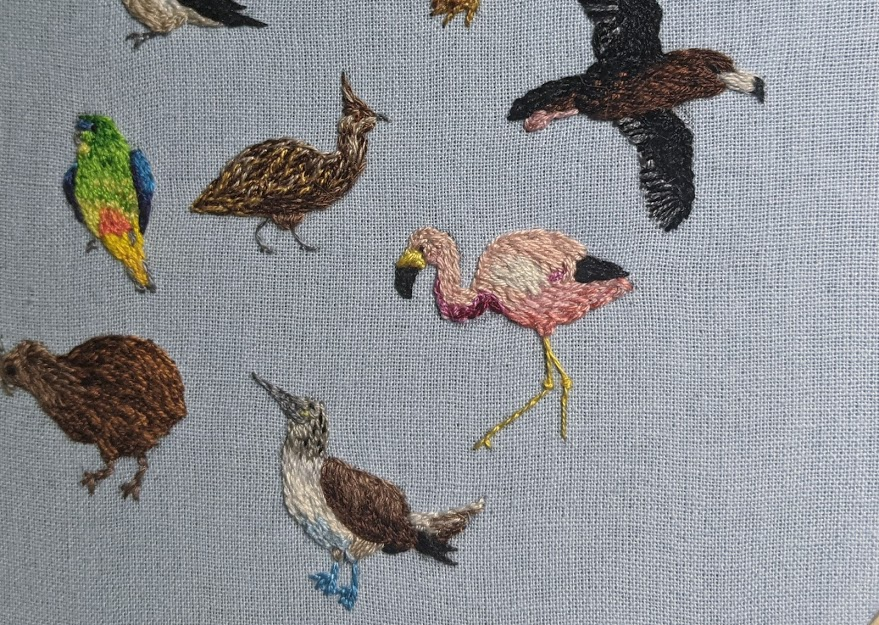 Mauricio Sandoval Reyes)" title="The Phoenicopteriformes have a stupidly long name. They are the flamingos. This one is an Andean flamingo, a really rather pretty species that lives in the mountains where Peru, Chile and Argentina converge. (https://abs.twimg.com/emoji/v2/... draggable="false" alt="📸" title="Kamera mit Blitz" aria-label="Emoji: Kamera mit Blitz">Mauricio Sandoval Reyes)">
Mauricio Sandoval Reyes)" title="The Phoenicopteriformes have a stupidly long name. They are the flamingos. This one is an Andean flamingo, a really rather pretty species that lives in the mountains where Peru, Chile and Argentina converge. (https://abs.twimg.com/emoji/v2/... draggable="false" alt="📸" title="Kamera mit Blitz" aria-label="Emoji: Kamera mit Blitz">Mauricio Sandoval Reyes)">
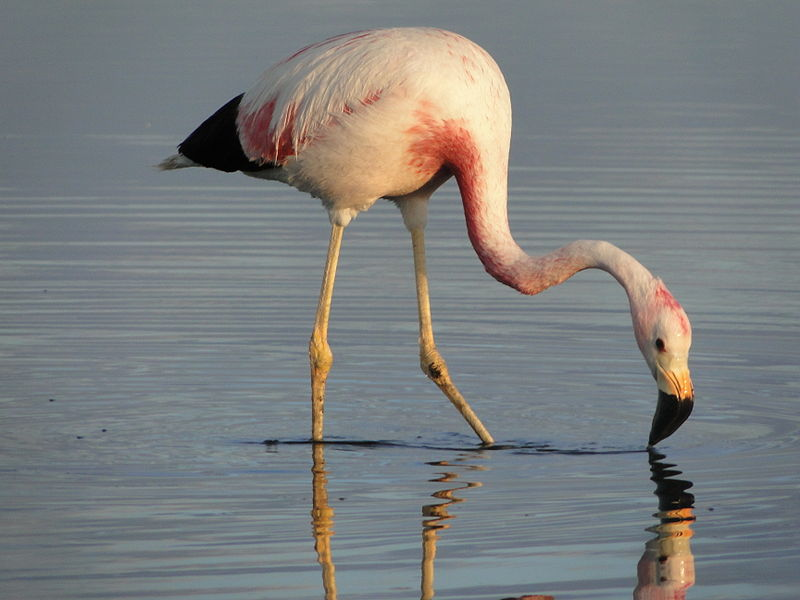 Mauricio Sandoval Reyes)" title="The Phoenicopteriformes have a stupidly long name. They are the flamingos. This one is an Andean flamingo, a really rather pretty species that lives in the mountains where Peru, Chile and Argentina converge. (https://abs.twimg.com/emoji/v2/... draggable="false" alt="📸" title="Kamera mit Blitz" aria-label="Emoji: Kamera mit Blitz">Mauricio Sandoval Reyes)">
Mauricio Sandoval Reyes)" title="The Phoenicopteriformes have a stupidly long name. They are the flamingos. This one is an Andean flamingo, a really rather pretty species that lives in the mountains where Peru, Chile and Argentina converge. (https://abs.twimg.com/emoji/v2/... draggable="false" alt="📸" title="Kamera mit Blitz" aria-label="Emoji: Kamera mit Blitz">Mauricio Sandoval Reyes)">
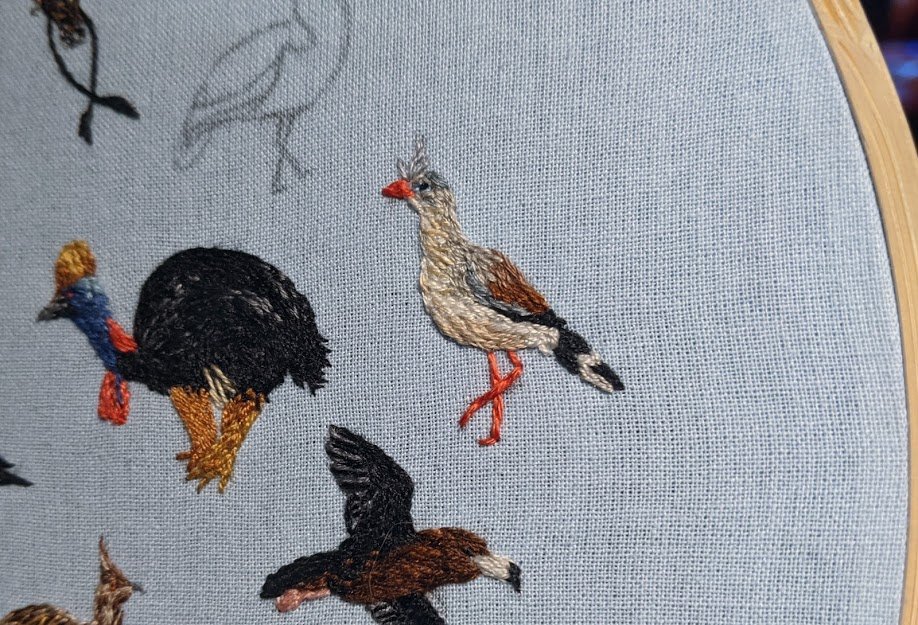 Exlibris)" title="The Cariamiformes are a great group. There are only two living species, the red-legged and black-legged seriemas. They live in South America and will beat prey to death by smashing it on the ground. Hardcore. (https://abs.twimg.com/emoji/v2/... draggable="false" alt="📸" title="Kamera mit Blitz" aria-label="Emoji: Kamera mit Blitz">Exlibris)">
Exlibris)" title="The Cariamiformes are a great group. There are only two living species, the red-legged and black-legged seriemas. They live in South America and will beat prey to death by smashing it on the ground. Hardcore. (https://abs.twimg.com/emoji/v2/... draggable="false" alt="📸" title="Kamera mit Blitz" aria-label="Emoji: Kamera mit Blitz">Exlibris)">
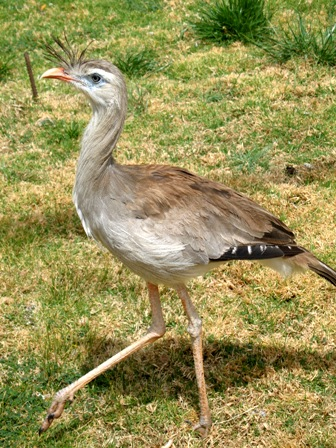 Exlibris)" title="The Cariamiformes are a great group. There are only two living species, the red-legged and black-legged seriemas. They live in South America and will beat prey to death by smashing it on the ground. Hardcore. (https://abs.twimg.com/emoji/v2/... draggable="false" alt="📸" title="Kamera mit Blitz" aria-label="Emoji: Kamera mit Blitz">Exlibris)">
Exlibris)" title="The Cariamiformes are a great group. There are only two living species, the red-legged and black-legged seriemas. They live in South America and will beat prey to death by smashing it on the ground. Hardcore. (https://abs.twimg.com/emoji/v2/... draggable="false" alt="📸" title="Kamera mit Blitz" aria-label="Emoji: Kamera mit Blitz">Exlibris)">
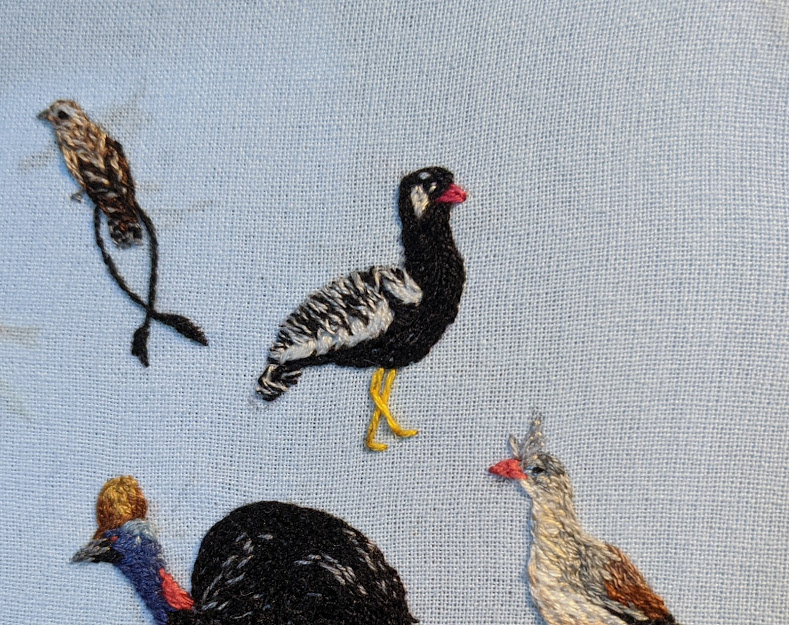
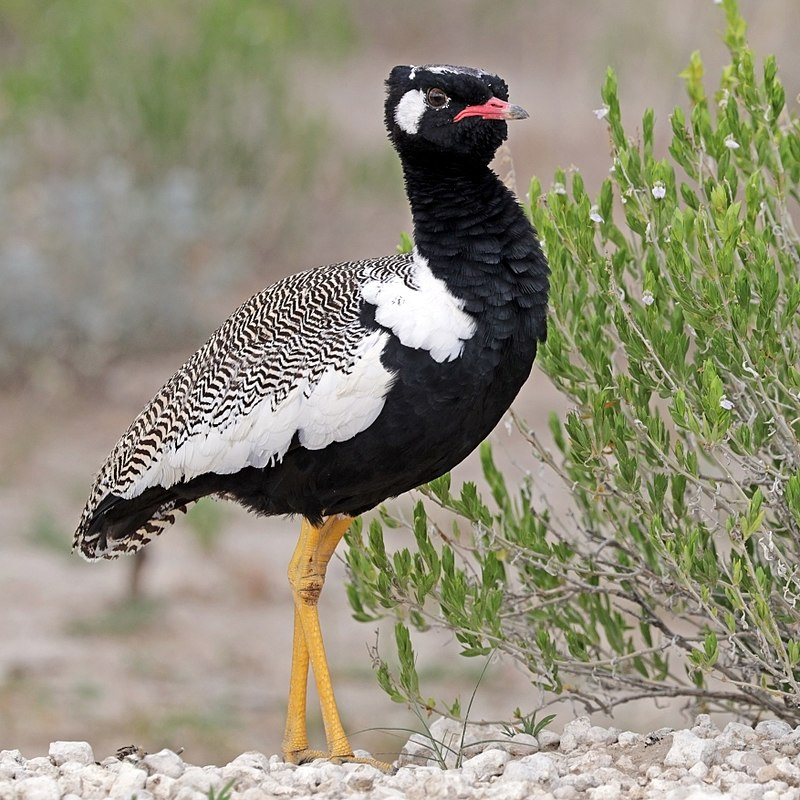
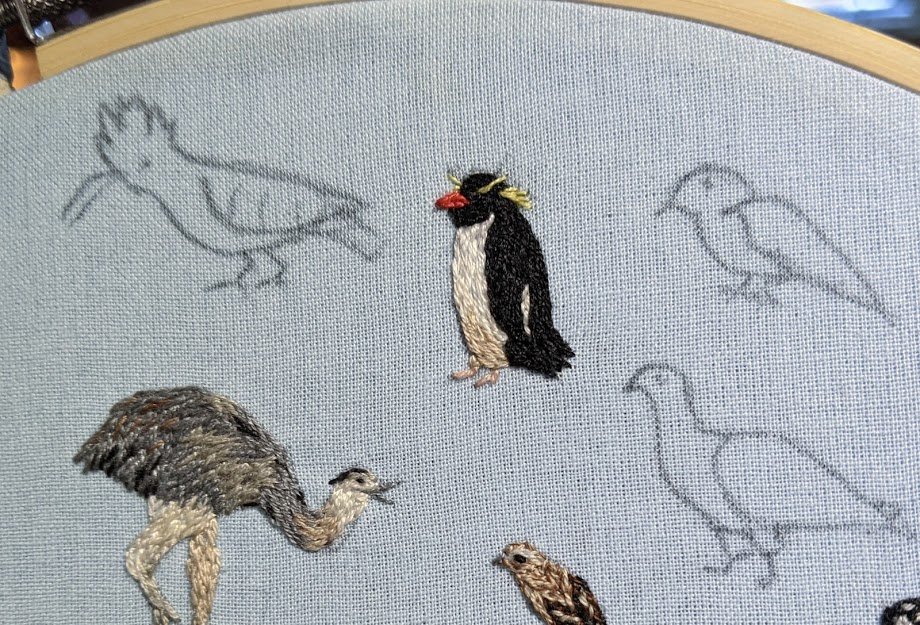 Samuel Blanc)" title="Ppppp pick up a Sphenisciformes!Everyone loves a penguin. There are around 20 species, although this is still debated. This southern rockhopper doesn& #39;t really care though, it has a great pair of eyebrows that need looking after. (https://abs.twimg.com/emoji/v2/... draggable="false" alt="📸" title="Kamera mit Blitz" aria-label="Emoji: Kamera mit Blitz">Samuel Blanc)">
Samuel Blanc)" title="Ppppp pick up a Sphenisciformes!Everyone loves a penguin. There are around 20 species, although this is still debated. This southern rockhopper doesn& #39;t really care though, it has a great pair of eyebrows that need looking after. (https://abs.twimg.com/emoji/v2/... draggable="false" alt="📸" title="Kamera mit Blitz" aria-label="Emoji: Kamera mit Blitz">Samuel Blanc)">
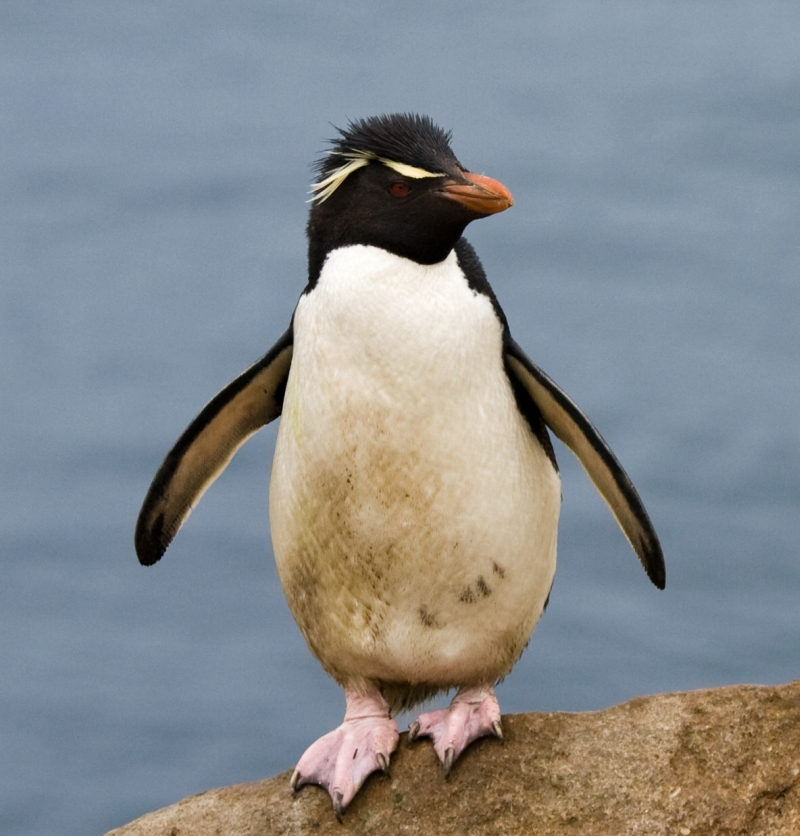 Samuel Blanc)" title="Ppppp pick up a Sphenisciformes!Everyone loves a penguin. There are around 20 species, although this is still debated. This southern rockhopper doesn& #39;t really care though, it has a great pair of eyebrows that need looking after. (https://abs.twimg.com/emoji/v2/... draggable="false" alt="📸" title="Kamera mit Blitz" aria-label="Emoji: Kamera mit Blitz">Samuel Blanc)">
Samuel Blanc)" title="Ppppp pick up a Sphenisciformes!Everyone loves a penguin. There are around 20 species, although this is still debated. This southern rockhopper doesn& #39;t really care though, it has a great pair of eyebrows that need looking after. (https://abs.twimg.com/emoji/v2/... draggable="false" alt="📸" title="Kamera mit Blitz" aria-label="Emoji: Kamera mit Blitz">Samuel Blanc)">
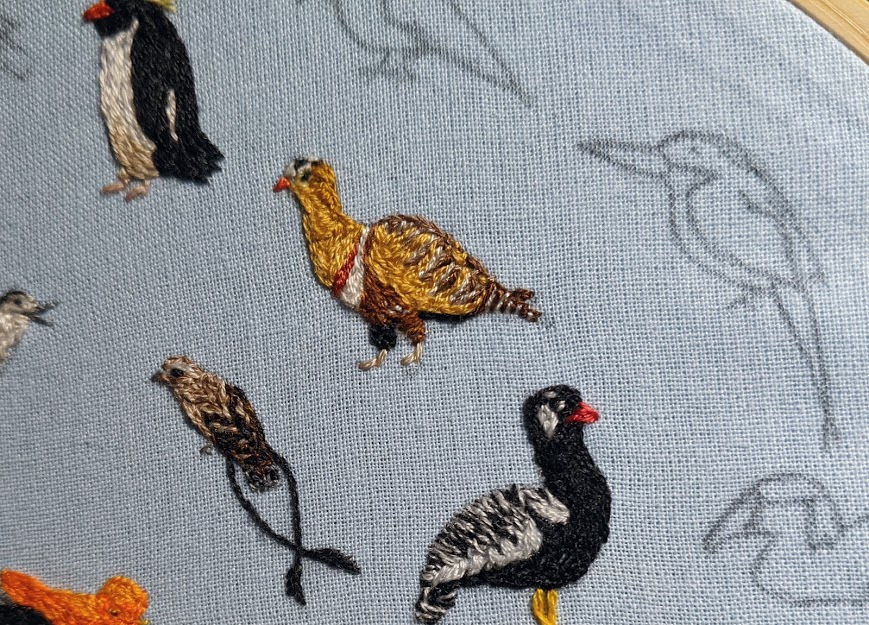

 Derek Keats)" title="The Bucerotiformes is an interesting group. It contains the hornbills and the hoopoes. All of them are good birds, but obviously I had to go with an African hoopoe, which look very similar to the more familiar European species. (https://abs.twimg.com/emoji/v2/... draggable="false" alt="📸" title="Kamera mit Blitz" aria-label="Emoji: Kamera mit Blitz">Derek Keats)">
Derek Keats)" title="The Bucerotiformes is an interesting group. It contains the hornbills and the hoopoes. All of them are good birds, but obviously I had to go with an African hoopoe, which look very similar to the more familiar European species. (https://abs.twimg.com/emoji/v2/... draggable="false" alt="📸" title="Kamera mit Blitz" aria-label="Emoji: Kamera mit Blitz">Derek Keats)">
 Derek Keats)" title="The Bucerotiformes is an interesting group. It contains the hornbills and the hoopoes. All of them are good birds, but obviously I had to go with an African hoopoe, which look very similar to the more familiar European species. (https://abs.twimg.com/emoji/v2/... draggable="false" alt="📸" title="Kamera mit Blitz" aria-label="Emoji: Kamera mit Blitz">Derek Keats)">
Derek Keats)" title="The Bucerotiformes is an interesting group. It contains the hornbills and the hoopoes. All of them are good birds, but obviously I had to go with an African hoopoe, which look very similar to the more familiar European species. (https://abs.twimg.com/emoji/v2/... draggable="false" alt="📸" title="Kamera mit Blitz" aria-label="Emoji: Kamera mit Blitz">Derek Keats)">
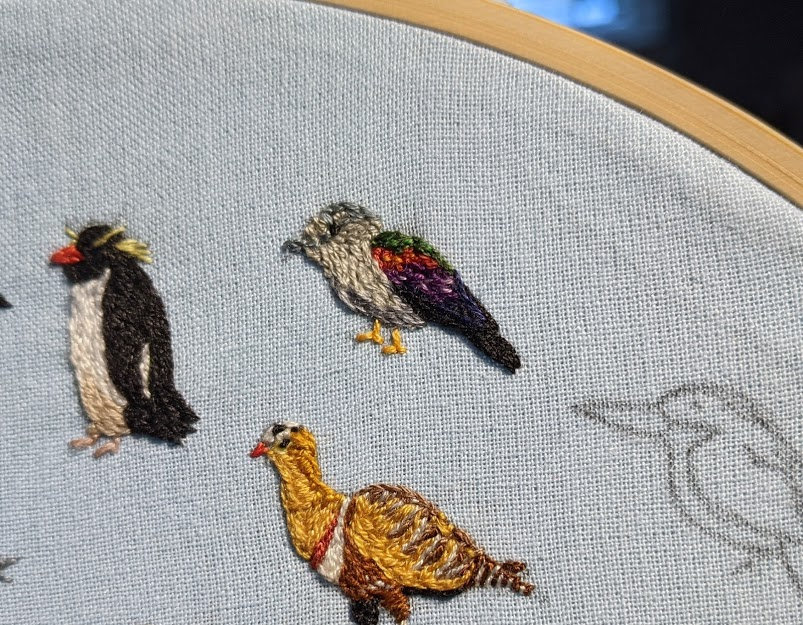 Tony Camacho)" title="Another obscure group next, the Leptosomiformes.Only a single species, the cuckoo roller. Super curious birds that live on Madagascar and the Comoro Islands. They& #39;re really tame and there are myths and legends about them. I like. (https://abs.twimg.com/emoji/v2/... draggable="false" alt="📸" title="Kamera mit Blitz" aria-label="Emoji: Kamera mit Blitz">Tony Camacho)">
Tony Camacho)" title="Another obscure group next, the Leptosomiformes.Only a single species, the cuckoo roller. Super curious birds that live on Madagascar and the Comoro Islands. They& #39;re really tame and there are myths and legends about them. I like. (https://abs.twimg.com/emoji/v2/... draggable="false" alt="📸" title="Kamera mit Blitz" aria-label="Emoji: Kamera mit Blitz">Tony Camacho)">
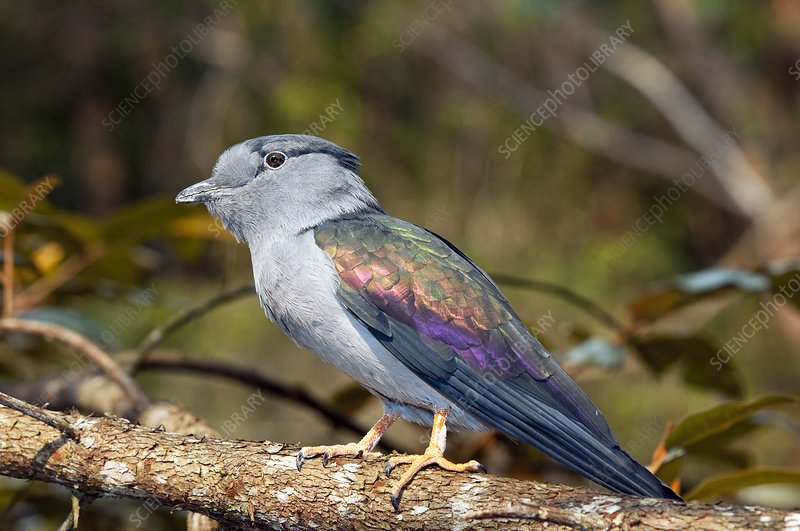 Tony Camacho)" title="Another obscure group next, the Leptosomiformes.Only a single species, the cuckoo roller. Super curious birds that live on Madagascar and the Comoro Islands. They& #39;re really tame and there are myths and legends about them. I like. (https://abs.twimg.com/emoji/v2/... draggable="false" alt="📸" title="Kamera mit Blitz" aria-label="Emoji: Kamera mit Blitz">Tony Camacho)">
Tony Camacho)" title="Another obscure group next, the Leptosomiformes.Only a single species, the cuckoo roller. Super curious birds that live on Madagascar and the Comoro Islands. They& #39;re really tame and there are myths and legends about them. I like. (https://abs.twimg.com/emoji/v2/... draggable="false" alt="📸" title="Kamera mit Blitz" aria-label="Emoji: Kamera mit Blitz">Tony Camacho)">
 Francesco Veronesi)" title="We& #39;re on to the Coraciiformes now. This is a surprisingly diverse group that contains the kingfishers, rollers, bee-eaters and the mot-mots I discovered last time! This is a lovely paradise kingfisher from the Maluku Islands and New Guinea. (https://abs.twimg.com/emoji/v2/... draggable="false" alt="📸" title="Kamera mit Blitz" aria-label="Emoji: Kamera mit Blitz">Francesco Veronesi)">
Francesco Veronesi)" title="We& #39;re on to the Coraciiformes now. This is a surprisingly diverse group that contains the kingfishers, rollers, bee-eaters and the mot-mots I discovered last time! This is a lovely paradise kingfisher from the Maluku Islands and New Guinea. (https://abs.twimg.com/emoji/v2/... draggable="false" alt="📸" title="Kamera mit Blitz" aria-label="Emoji: Kamera mit Blitz">Francesco Veronesi)">
 Francesco Veronesi)" title="We& #39;re on to the Coraciiformes now. This is a surprisingly diverse group that contains the kingfishers, rollers, bee-eaters and the mot-mots I discovered last time! This is a lovely paradise kingfisher from the Maluku Islands and New Guinea. (https://abs.twimg.com/emoji/v2/... draggable="false" alt="📸" title="Kamera mit Blitz" aria-label="Emoji: Kamera mit Blitz">Francesco Veronesi)">
Francesco Veronesi)" title="We& #39;re on to the Coraciiformes now. This is a surprisingly diverse group that contains the kingfishers, rollers, bee-eaters and the mot-mots I discovered last time! This is a lovely paradise kingfisher from the Maluku Islands and New Guinea. (https://abs.twimg.com/emoji/v2/... draggable="false" alt="📸" title="Kamera mit Blitz" aria-label="Emoji: Kamera mit Blitz">Francesco Veronesi)">
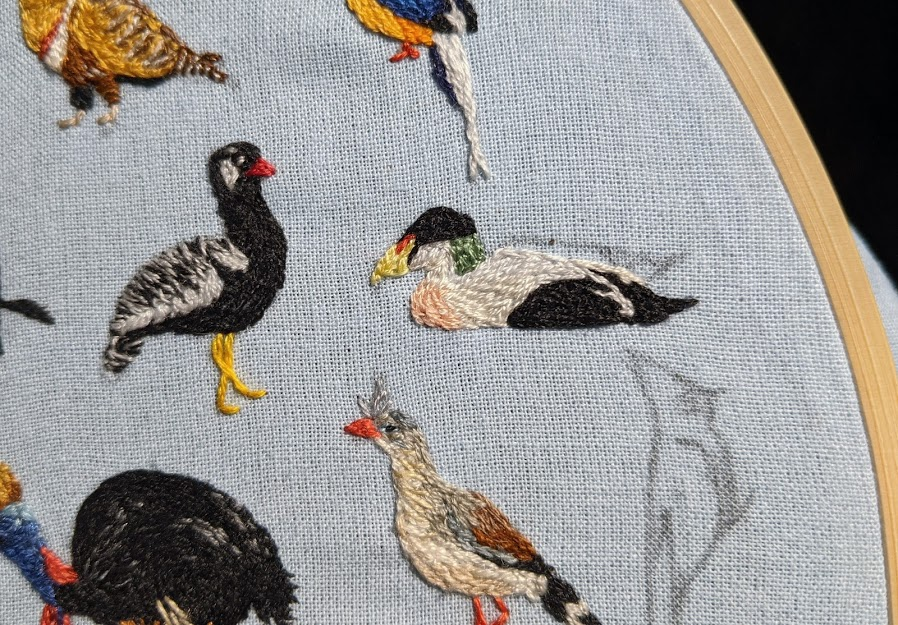 Rhododendrites)" title="Next up the Anseriformes, which includes ducks, geese and the screamers. Did T.rex snack on ducks? Maybe, because they were one of only two groups known to have lived alongside dinosaurs. This is a common eider, a sea-duck that breeds in the Arctic. (https://abs.twimg.com/emoji/v2/... draggable="false" alt="📸" title="Kamera mit Blitz" aria-label="Emoji: Kamera mit Blitz">Rhododendrites)">
Rhododendrites)" title="Next up the Anseriformes, which includes ducks, geese and the screamers. Did T.rex snack on ducks? Maybe, because they were one of only two groups known to have lived alongside dinosaurs. This is a common eider, a sea-duck that breeds in the Arctic. (https://abs.twimg.com/emoji/v2/... draggable="false" alt="📸" title="Kamera mit Blitz" aria-label="Emoji: Kamera mit Blitz">Rhododendrites)">
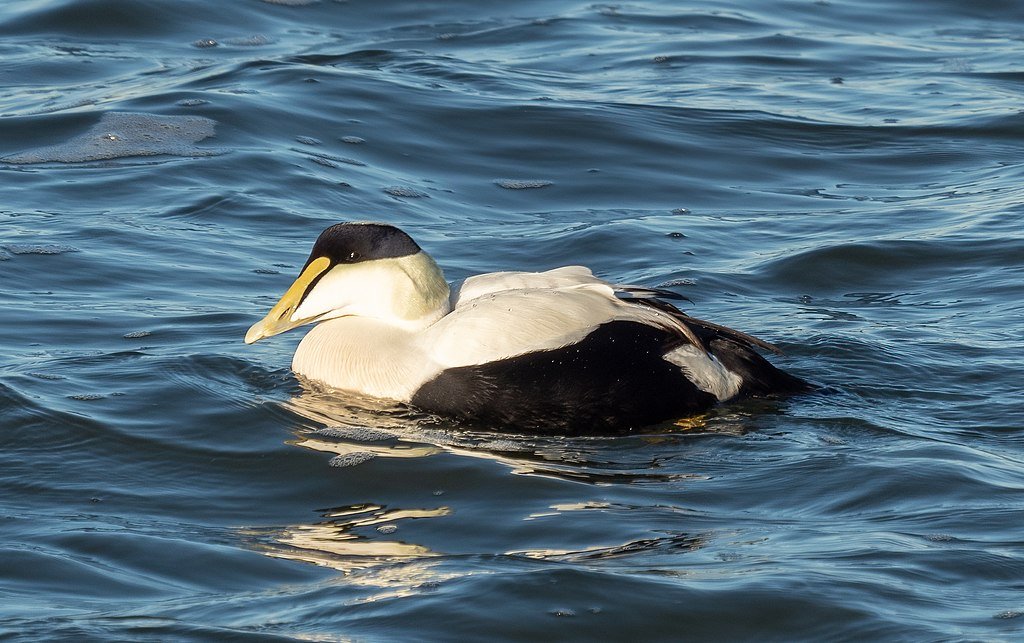 Rhododendrites)" title="Next up the Anseriformes, which includes ducks, geese and the screamers. Did T.rex snack on ducks? Maybe, because they were one of only two groups known to have lived alongside dinosaurs. This is a common eider, a sea-duck that breeds in the Arctic. (https://abs.twimg.com/emoji/v2/... draggable="false" alt="📸" title="Kamera mit Blitz" aria-label="Emoji: Kamera mit Blitz">Rhododendrites)">
Rhododendrites)" title="Next up the Anseriformes, which includes ducks, geese and the screamers. Did T.rex snack on ducks? Maybe, because they were one of only two groups known to have lived alongside dinosaurs. This is a common eider, a sea-duck that breeds in the Arctic. (https://abs.twimg.com/emoji/v2/... draggable="false" alt="📸" title="Kamera mit Blitz" aria-label="Emoji: Kamera mit Blitz">Rhododendrites)">
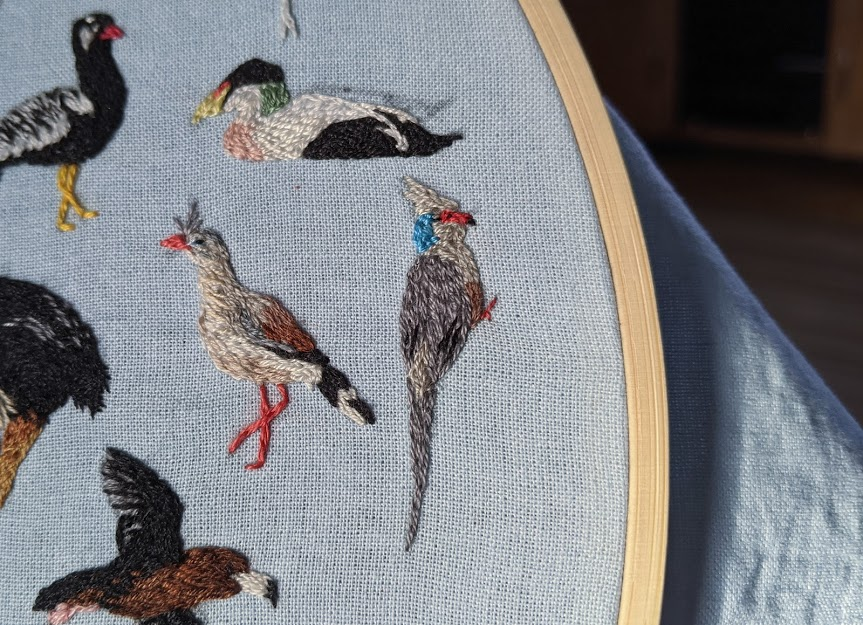 Doug Janson)" title="Here we have the Coliiformes. This one was a surprise. I did not expect the humble mousebird to be in its own order. In fact, it is the only order of bird to be entirely confined to Africa. This one is a blue-naped mousebird. (https://abs.twimg.com/emoji/v2/... draggable="false" alt="📸" title="Kamera mit Blitz" aria-label="Emoji: Kamera mit Blitz">Doug Janson)">
Doug Janson)" title="Here we have the Coliiformes. This one was a surprise. I did not expect the humble mousebird to be in its own order. In fact, it is the only order of bird to be entirely confined to Africa. This one is a blue-naped mousebird. (https://abs.twimg.com/emoji/v2/... draggable="false" alt="📸" title="Kamera mit Blitz" aria-label="Emoji: Kamera mit Blitz">Doug Janson)">
 Doug Janson)" title="Here we have the Coliiformes. This one was a surprise. I did not expect the humble mousebird to be in its own order. In fact, it is the only order of bird to be entirely confined to Africa. This one is a blue-naped mousebird. (https://abs.twimg.com/emoji/v2/... draggable="false" alt="📸" title="Kamera mit Blitz" aria-label="Emoji: Kamera mit Blitz">Doug Janson)">
Doug Janson)" title="Here we have the Coliiformes. This one was a surprise. I did not expect the humble mousebird to be in its own order. In fact, it is the only order of bird to be entirely confined to Africa. This one is a blue-naped mousebird. (https://abs.twimg.com/emoji/v2/... draggable="false" alt="📸" title="Kamera mit Blitz" aria-label="Emoji: Kamera mit Blitz">Doug Janson)">
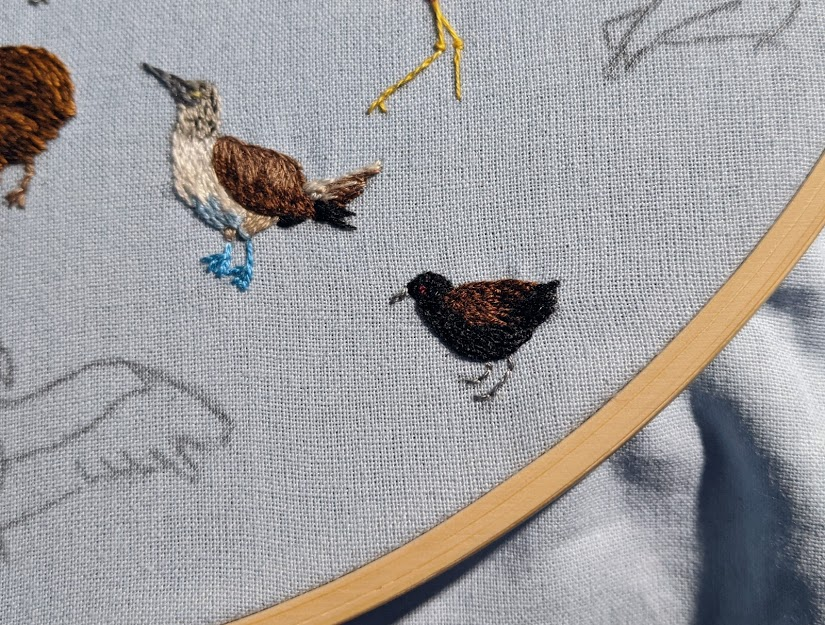 Brian Gratwicke)" title="These are the Gruiformes, or the cranes, crakes and rails.This one is the Inaccessible Island rail, which not only has quite possibly the best bird name in the world but is also the smallest flightless bird in the world. Good things, small packages etc etc.(https://abs.twimg.com/emoji/v2/... draggable="false" alt="📸" title="Kamera mit Blitz" aria-label="Emoji: Kamera mit Blitz">Brian Gratwicke)">
Brian Gratwicke)" title="These are the Gruiformes, or the cranes, crakes and rails.This one is the Inaccessible Island rail, which not only has quite possibly the best bird name in the world but is also the smallest flightless bird in the world. Good things, small packages etc etc.(https://abs.twimg.com/emoji/v2/... draggable="false" alt="📸" title="Kamera mit Blitz" aria-label="Emoji: Kamera mit Blitz">Brian Gratwicke)">
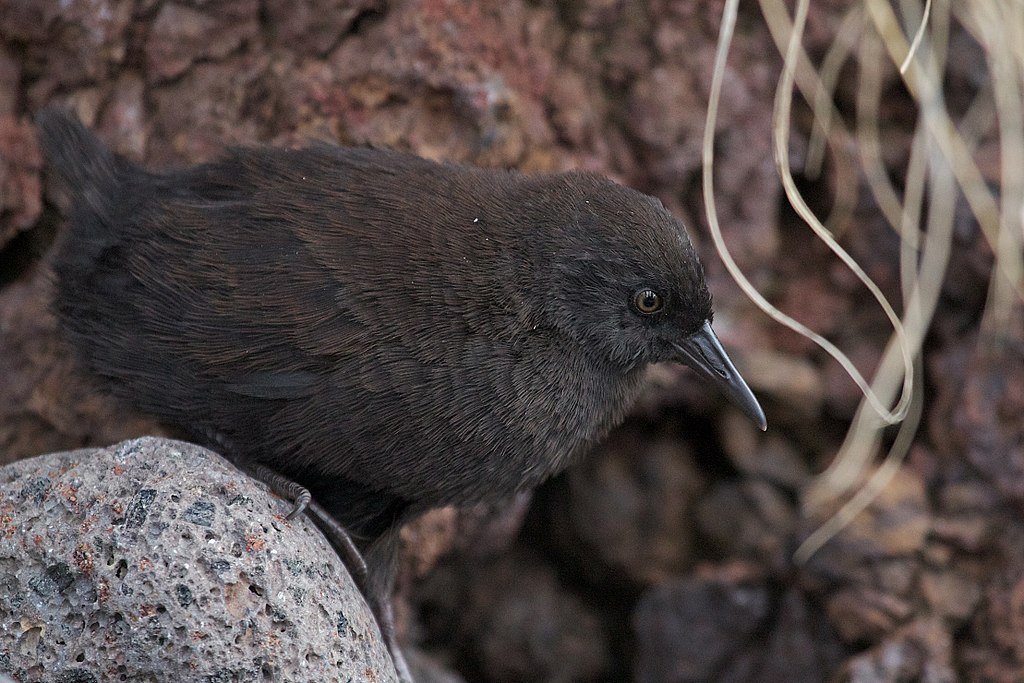 Brian Gratwicke)" title="These are the Gruiformes, or the cranes, crakes and rails.This one is the Inaccessible Island rail, which not only has quite possibly the best bird name in the world but is also the smallest flightless bird in the world. Good things, small packages etc etc.(https://abs.twimg.com/emoji/v2/... draggable="false" alt="📸" title="Kamera mit Blitz" aria-label="Emoji: Kamera mit Blitz">Brian Gratwicke)">
Brian Gratwicke)" title="These are the Gruiformes, or the cranes, crakes and rails.This one is the Inaccessible Island rail, which not only has quite possibly the best bird name in the world but is also the smallest flightless bird in the world. Good things, small packages etc etc.(https://abs.twimg.com/emoji/v2/... draggable="false" alt="📸" title="Kamera mit Blitz" aria-label="Emoji: Kamera mit Blitz">Brian Gratwicke)">
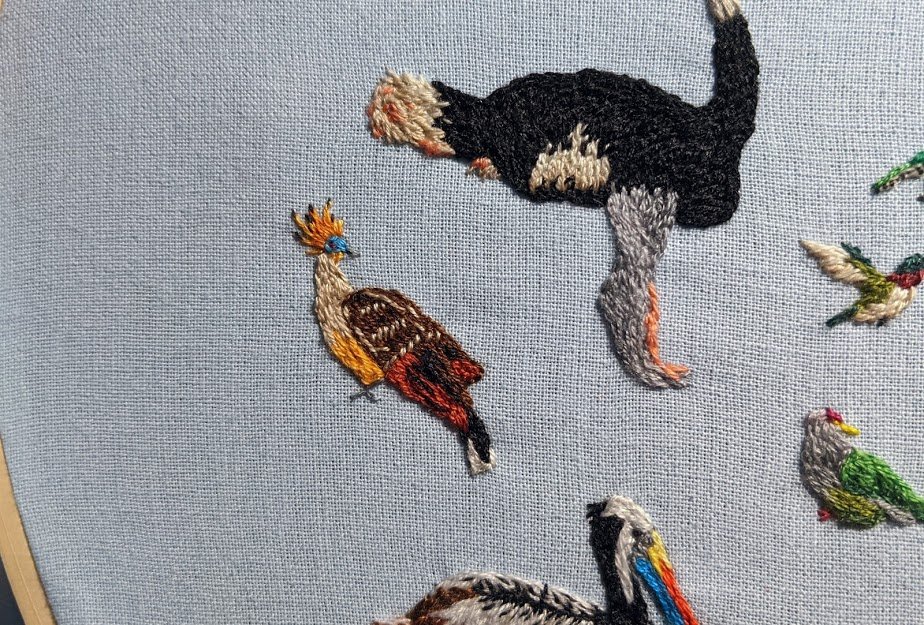 Francesco Veronesi)" title="We& #39;re back to these weirdos again, the Opisthocomiformes. A ridiculously long name for just one species of bird, the hoatzin. We& #39;ve met these before. The chicks still have claws on their wings and they eat leaves. Are they really even bird?(https://abs.twimg.com/emoji/v2/... draggable="false" alt="📸" title="Kamera mit Blitz" aria-label="Emoji: Kamera mit Blitz">Francesco Veronesi)">
Francesco Veronesi)" title="We& #39;re back to these weirdos again, the Opisthocomiformes. A ridiculously long name for just one species of bird, the hoatzin. We& #39;ve met these before. The chicks still have claws on their wings and they eat leaves. Are they really even bird?(https://abs.twimg.com/emoji/v2/... draggable="false" alt="📸" title="Kamera mit Blitz" aria-label="Emoji: Kamera mit Blitz">Francesco Veronesi)">
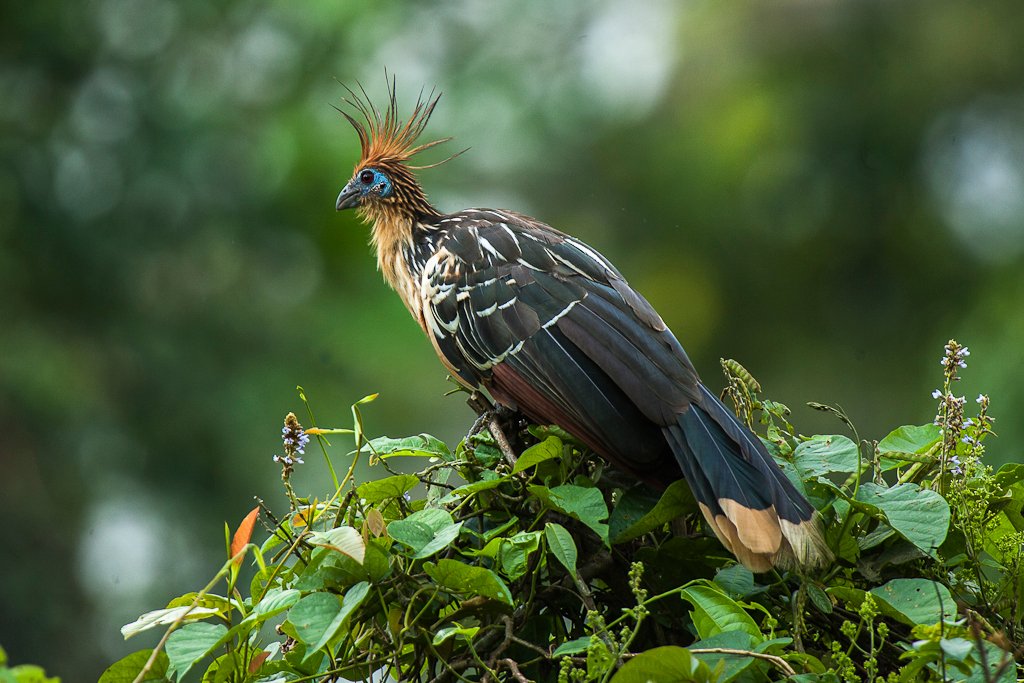 Francesco Veronesi)" title="We& #39;re back to these weirdos again, the Opisthocomiformes. A ridiculously long name for just one species of bird, the hoatzin. We& #39;ve met these before. The chicks still have claws on their wings and they eat leaves. Are they really even bird?(https://abs.twimg.com/emoji/v2/... draggable="false" alt="📸" title="Kamera mit Blitz" aria-label="Emoji: Kamera mit Blitz">Francesco Veronesi)">
Francesco Veronesi)" title="We& #39;re back to these weirdos again, the Opisthocomiformes. A ridiculously long name for just one species of bird, the hoatzin. We& #39;ve met these before. The chicks still have claws on their wings and they eat leaves. Are they really even bird?(https://abs.twimg.com/emoji/v2/... draggable="false" alt="📸" title="Kamera mit Blitz" aria-label="Emoji: Kamera mit Blitz">Francesco Veronesi)">
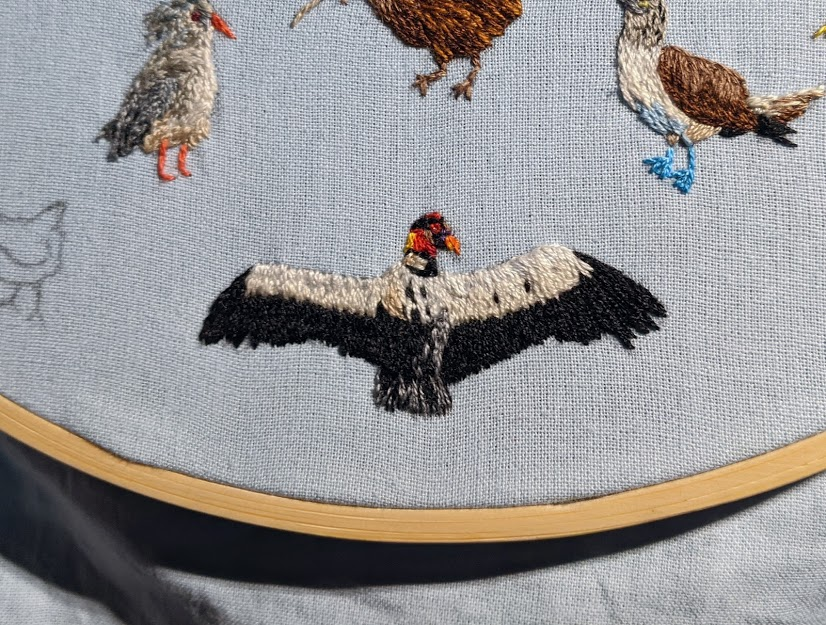 Eric Kilby)" title="We& #39;ve made it to the meat-eating Accipitriformes!These are the hawks, eagles, vultures, and kites. But not owls and falcons, we& #39;ll get on to those later. Here is a magnificent king vulture from Central and South America. Amazing heads, fiddly to stitch.(https://abs.twimg.com/emoji/v2/... draggable="false" alt="📸" title="Kamera mit Blitz" aria-label="Emoji: Kamera mit Blitz">Eric Kilby)">
Eric Kilby)" title="We& #39;ve made it to the meat-eating Accipitriformes!These are the hawks, eagles, vultures, and kites. But not owls and falcons, we& #39;ll get on to those later. Here is a magnificent king vulture from Central and South America. Amazing heads, fiddly to stitch.(https://abs.twimg.com/emoji/v2/... draggable="false" alt="📸" title="Kamera mit Blitz" aria-label="Emoji: Kamera mit Blitz">Eric Kilby)">
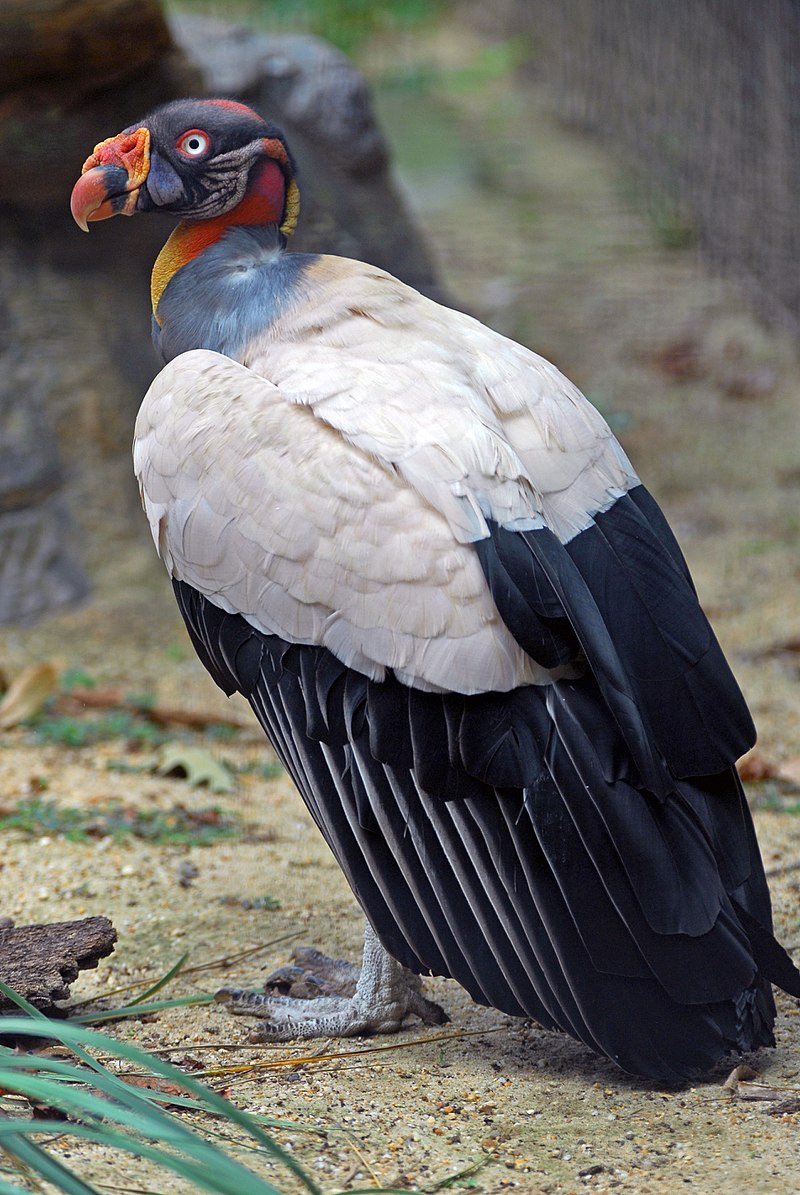 Eric Kilby)" title="We& #39;ve made it to the meat-eating Accipitriformes!These are the hawks, eagles, vultures, and kites. But not owls and falcons, we& #39;ll get on to those later. Here is a magnificent king vulture from Central and South America. Amazing heads, fiddly to stitch.(https://abs.twimg.com/emoji/v2/... draggable="false" alt="📸" title="Kamera mit Blitz" aria-label="Emoji: Kamera mit Blitz">Eric Kilby)">
Eric Kilby)" title="We& #39;ve made it to the meat-eating Accipitriformes!These are the hawks, eagles, vultures, and kites. But not owls and falcons, we& #39;ll get on to those later. Here is a magnificent king vulture from Central and South America. Amazing heads, fiddly to stitch.(https://abs.twimg.com/emoji/v2/... draggable="false" alt="📸" title="Kamera mit Blitz" aria-label="Emoji: Kamera mit Blitz">Eric Kilby)">
 Jongsun Lee)" title="I told you we& #39;d get to the Strigiformes, or owls. This rather dopey looking one is a snowy owl. They are one of the largest owls in the world and live in, well, the snow. They will eat pretty much whatever they can catch be it mammal or bird. (https://abs.twimg.com/emoji/v2/... draggable="false" alt="📸" title="Kamera mit Blitz" aria-label="Emoji: Kamera mit Blitz">Jongsun Lee)">
Jongsun Lee)" title="I told you we& #39;d get to the Strigiformes, or owls. This rather dopey looking one is a snowy owl. They are one of the largest owls in the world and live in, well, the snow. They will eat pretty much whatever they can catch be it mammal or bird. (https://abs.twimg.com/emoji/v2/... draggable="false" alt="📸" title="Kamera mit Blitz" aria-label="Emoji: Kamera mit Blitz">Jongsun Lee)">
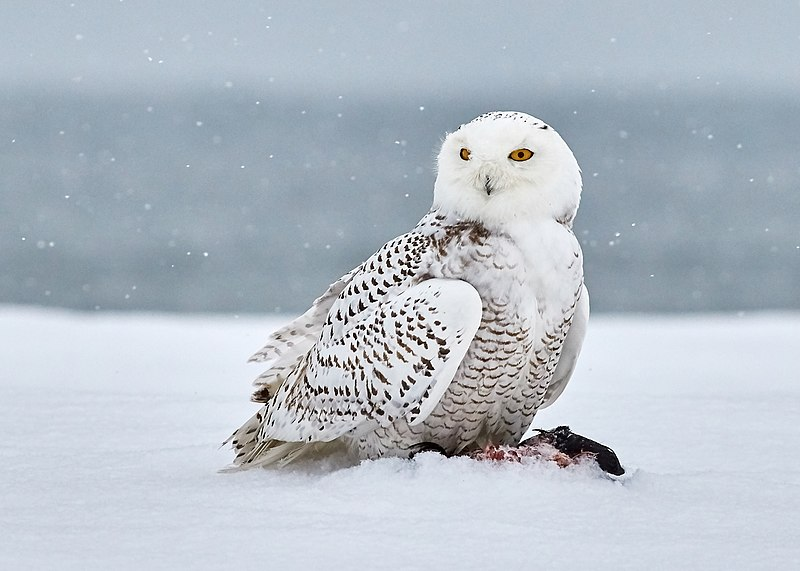 Jongsun Lee)" title="I told you we& #39;d get to the Strigiformes, or owls. This rather dopey looking one is a snowy owl. They are one of the largest owls in the world and live in, well, the snow. They will eat pretty much whatever they can catch be it mammal or bird. (https://abs.twimg.com/emoji/v2/... draggable="false" alt="📸" title="Kamera mit Blitz" aria-label="Emoji: Kamera mit Blitz">Jongsun Lee)">
Jongsun Lee)" title="I told you we& #39;d get to the Strigiformes, or owls. This rather dopey looking one is a snowy owl. They are one of the largest owls in the world and live in, well, the snow. They will eat pretty much whatever they can catch be it mammal or bird. (https://abs.twimg.com/emoji/v2/... draggable="false" alt="📸" title="Kamera mit Blitz" aria-label="Emoji: Kamera mit Blitz">Jongsun Lee)">
 Ryan Askren)" title="Aaaaand back to the water with the Gaviiformes.These are the loons and the divers, of which there are five living species. This is a yellow-billed loon and they live pretty much right around the Arctic. They better be on the lookout for those pesky snowy owls.(https://abs.twimg.com/emoji/v2/... draggable="false" alt="📸" title="Kamera mit Blitz" aria-label="Emoji: Kamera mit Blitz">Ryan Askren)">
Ryan Askren)" title="Aaaaand back to the water with the Gaviiformes.These are the loons and the divers, of which there are five living species. This is a yellow-billed loon and they live pretty much right around the Arctic. They better be on the lookout for those pesky snowy owls.(https://abs.twimg.com/emoji/v2/... draggable="false" alt="📸" title="Kamera mit Blitz" aria-label="Emoji: Kamera mit Blitz">Ryan Askren)">
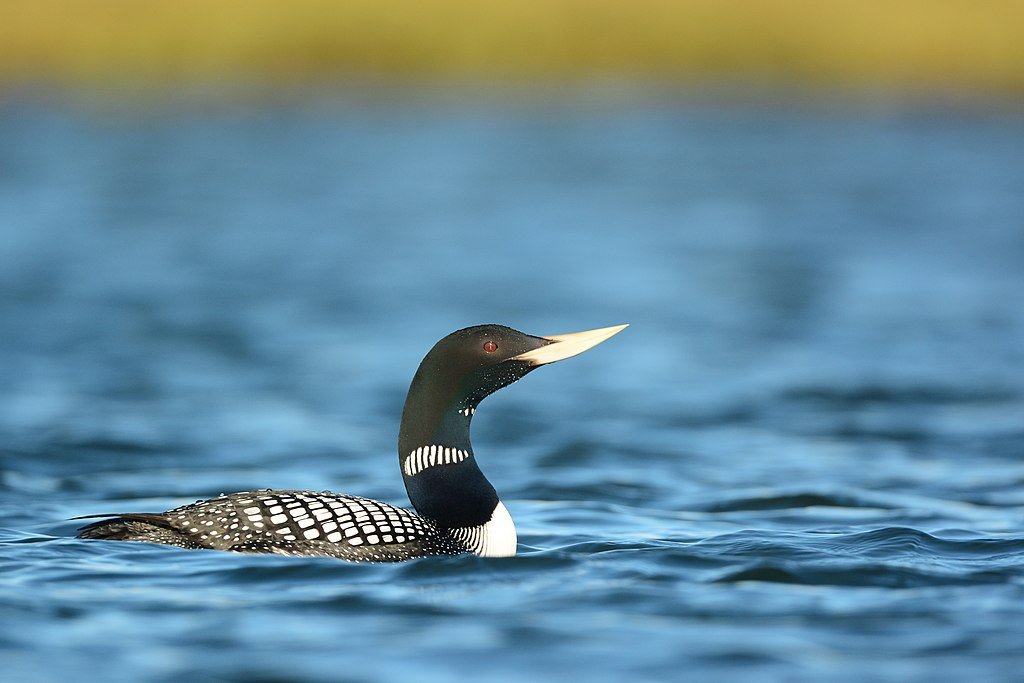 Ryan Askren)" title="Aaaaand back to the water with the Gaviiformes.These are the loons and the divers, of which there are five living species. This is a yellow-billed loon and they live pretty much right around the Arctic. They better be on the lookout for those pesky snowy owls.(https://abs.twimg.com/emoji/v2/... draggable="false" alt="📸" title="Kamera mit Blitz" aria-label="Emoji: Kamera mit Blitz">Ryan Askren)">
Ryan Askren)" title="Aaaaand back to the water with the Gaviiformes.These are the loons and the divers, of which there are five living species. This is a yellow-billed loon and they live pretty much right around the Arctic. They better be on the lookout for those pesky snowy owls.(https://abs.twimg.com/emoji/v2/... draggable="false" alt="📸" title="Kamera mit Blitz" aria-label="Emoji: Kamera mit Blitz">Ryan Askren)">
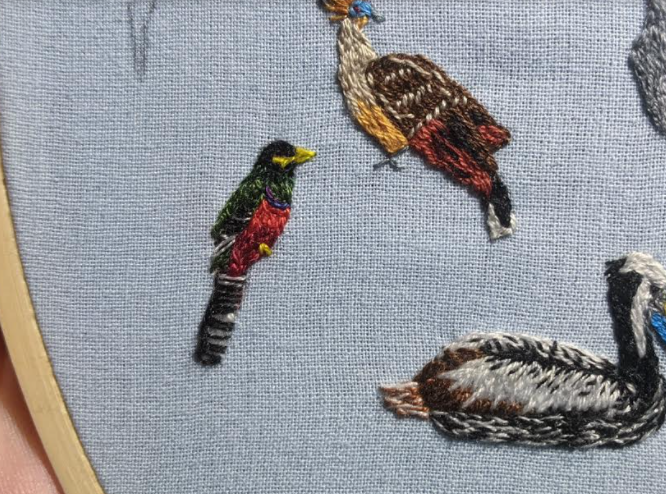 JerryFriedman)" title="Up next the Trogoniformes!I do like trogons, so I& #39;m glad they have their own order. Only a modest 46 species, but they are spread really pretty much all around the world. This one is a bar-tailed trogon from southern Africa.(https://abs.twimg.com/emoji/v2/... draggable="false" alt="📸" title="Kamera mit Blitz" aria-label="Emoji: Kamera mit Blitz">JerryFriedman)">
JerryFriedman)" title="Up next the Trogoniformes!I do like trogons, so I& #39;m glad they have their own order. Only a modest 46 species, but they are spread really pretty much all around the world. This one is a bar-tailed trogon from southern Africa.(https://abs.twimg.com/emoji/v2/... draggable="false" alt="📸" title="Kamera mit Blitz" aria-label="Emoji: Kamera mit Blitz">JerryFriedman)">
 JerryFriedman)" title="Up next the Trogoniformes!I do like trogons, so I& #39;m glad they have their own order. Only a modest 46 species, but they are spread really pretty much all around the world. This one is a bar-tailed trogon from southern Africa.(https://abs.twimg.com/emoji/v2/... draggable="false" alt="📸" title="Kamera mit Blitz" aria-label="Emoji: Kamera mit Blitz">JerryFriedman)">
JerryFriedman)" title="Up next the Trogoniformes!I do like trogons, so I& #39;m glad they have their own order. Only a modest 46 species, but they are spread really pretty much all around the world. This one is a bar-tailed trogon from southern Africa.(https://abs.twimg.com/emoji/v2/... draggable="false" alt="📸" title="Kamera mit Blitz" aria-label="Emoji: Kamera mit Blitz">JerryFriedman)">
 Charles J. Sharp)" title="Into the trees with the Piciformes.Lots of woodpeckers all over the place. 450 of them, in fact. This is a European green woodpecker, and probably one of the fanciest birbs you get in the UK, which isn& #39;t really selling the country much. I like them anyway.(https://abs.twimg.com/emoji/v2/... draggable="false" alt="📸" title="Kamera mit Blitz" aria-label="Emoji: Kamera mit Blitz">Charles J. Sharp)">
Charles J. Sharp)" title="Into the trees with the Piciformes.Lots of woodpeckers all over the place. 450 of them, in fact. This is a European green woodpecker, and probably one of the fanciest birbs you get in the UK, which isn& #39;t really selling the country much. I like them anyway.(https://abs.twimg.com/emoji/v2/... draggable="false" alt="📸" title="Kamera mit Blitz" aria-label="Emoji: Kamera mit Blitz">Charles J. Sharp)">
 Charles J. Sharp)" title="Into the trees with the Piciformes.Lots of woodpeckers all over the place. 450 of them, in fact. This is a European green woodpecker, and probably one of the fanciest birbs you get in the UK, which isn& #39;t really selling the country much. I like them anyway.(https://abs.twimg.com/emoji/v2/... draggable="false" alt="📸" title="Kamera mit Blitz" aria-label="Emoji: Kamera mit Blitz">Charles J. Sharp)">
Charles J. Sharp)" title="Into the trees with the Piciformes.Lots of woodpeckers all over the place. 450 of them, in fact. This is a European green woodpecker, and probably one of the fanciest birbs you get in the UK, which isn& #39;t really selling the country much. I like them anyway.(https://abs.twimg.com/emoji/v2/... draggable="false" alt="📸" title="Kamera mit Blitz" aria-label="Emoji: Kamera mit Blitz">Charles J. Sharp)">
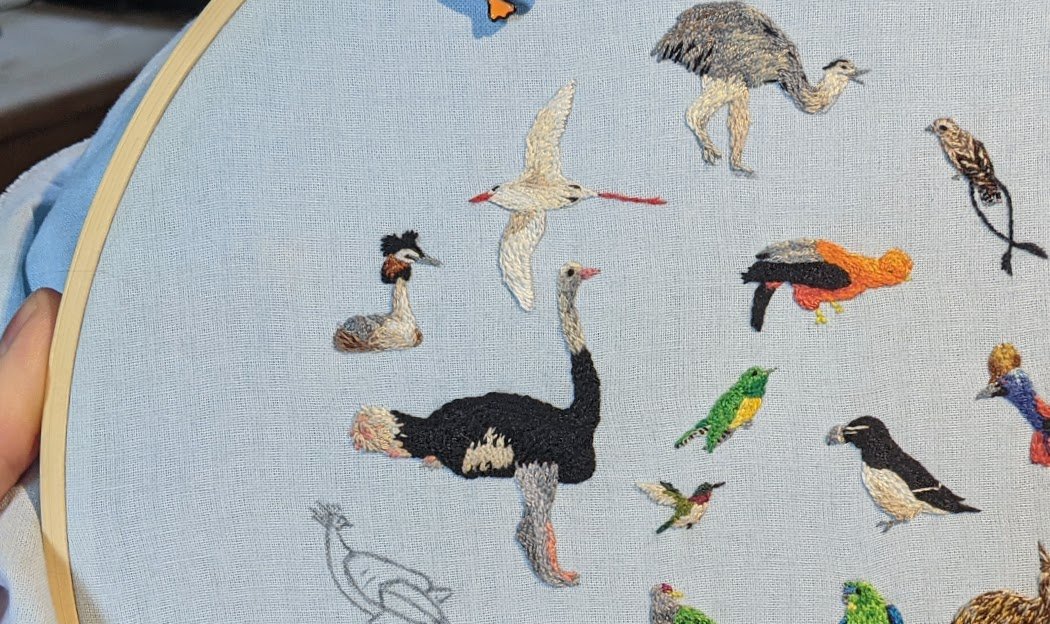 JJ Harrison)" title="Somehow I missed the Podicipediformes. Probably bored of all the water birds tbh.These are the grebes, and in actual fact I think the great-crested grebe is quite possibly the best one I stitched in all of this. They are so elegant. Good job me. (https://abs.twimg.com/emoji/v2/... draggable="false" alt="📸" title="Kamera mit Blitz" aria-label="Emoji: Kamera mit Blitz">JJ Harrison)">
JJ Harrison)" title="Somehow I missed the Podicipediformes. Probably bored of all the water birds tbh.These are the grebes, and in actual fact I think the great-crested grebe is quite possibly the best one I stitched in all of this. They are so elegant. Good job me. (https://abs.twimg.com/emoji/v2/... draggable="false" alt="📸" title="Kamera mit Blitz" aria-label="Emoji: Kamera mit Blitz">JJ Harrison)">
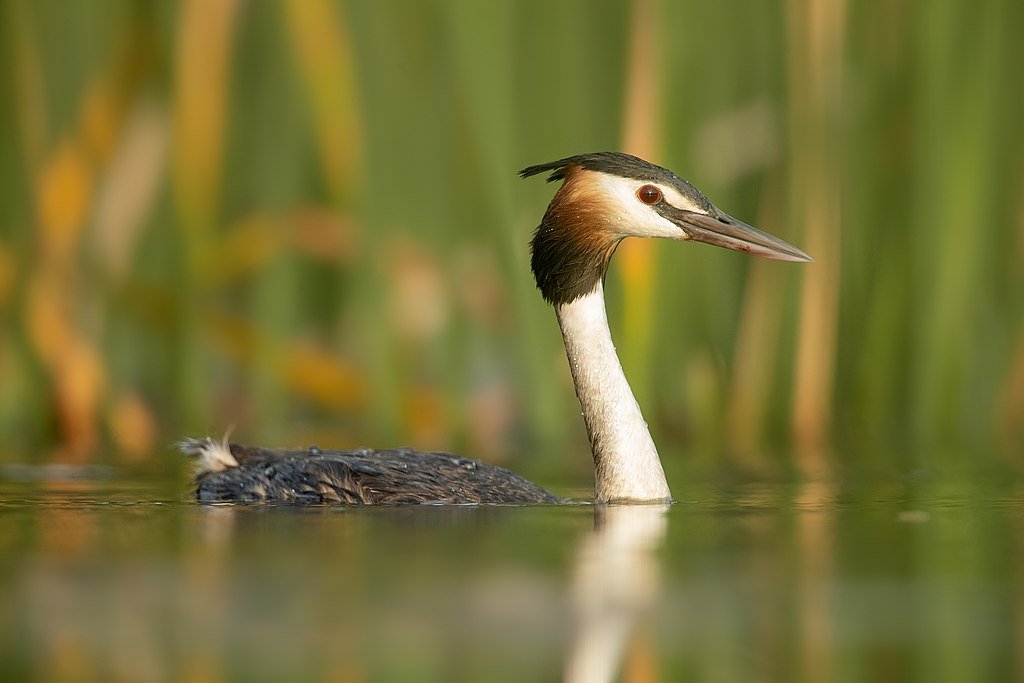 JJ Harrison)" title="Somehow I missed the Podicipediformes. Probably bored of all the water birds tbh.These are the grebes, and in actual fact I think the great-crested grebe is quite possibly the best one I stitched in all of this. They are so elegant. Good job me. (https://abs.twimg.com/emoji/v2/... draggable="false" alt="📸" title="Kamera mit Blitz" aria-label="Emoji: Kamera mit Blitz">JJ Harrison)">
JJ Harrison)" title="Somehow I missed the Podicipediformes. Probably bored of all the water birds tbh.These are the grebes, and in actual fact I think the great-crested grebe is quite possibly the best one I stitched in all of this. They are so elegant. Good job me. (https://abs.twimg.com/emoji/v2/... draggable="false" alt="📸" title="Kamera mit Blitz" aria-label="Emoji: Kamera mit Blitz">JJ Harrison)">
 Tarun.real)" title="I think the Ciconiiformes might be the last wet birds.They are the storks. Surprisingly only 19 living species, somehow I expected more. This one is a bit of a weird one though, it& #39;s an Asian openbill stork and as the name suggests, it can& #39;t close its bill. (https://abs.twimg.com/emoji/v2/... draggable="false" alt="📸" title="Kamera mit Blitz" aria-label="Emoji: Kamera mit Blitz">Tarun.real)">
Tarun.real)" title="I think the Ciconiiformes might be the last wet birds.They are the storks. Surprisingly only 19 living species, somehow I expected more. This one is a bit of a weird one though, it& #39;s an Asian openbill stork and as the name suggests, it can& #39;t close its bill. (https://abs.twimg.com/emoji/v2/... draggable="false" alt="📸" title="Kamera mit Blitz" aria-label="Emoji: Kamera mit Blitz">Tarun.real)">
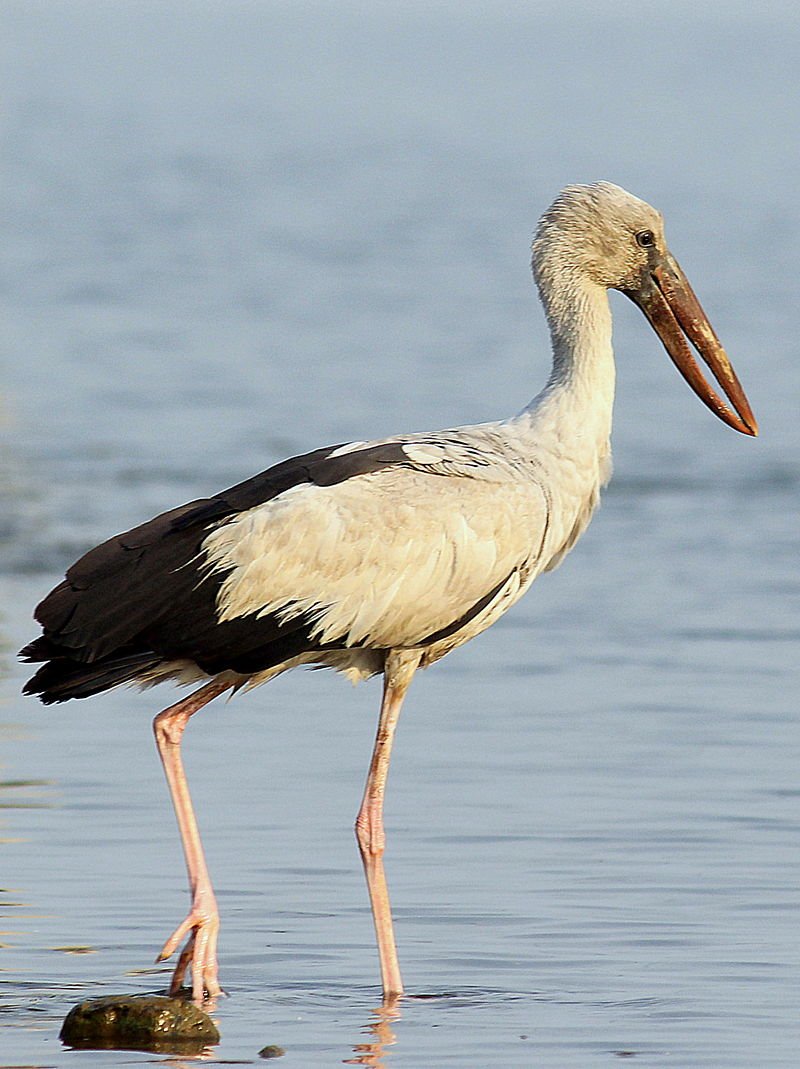 Tarun.real)" title="I think the Ciconiiformes might be the last wet birds.They are the storks. Surprisingly only 19 living species, somehow I expected more. This one is a bit of a weird one though, it& #39;s an Asian openbill stork and as the name suggests, it can& #39;t close its bill. (https://abs.twimg.com/emoji/v2/... draggable="false" alt="📸" title="Kamera mit Blitz" aria-label="Emoji: Kamera mit Blitz">Tarun.real)">
Tarun.real)" title="I think the Ciconiiformes might be the last wet birds.They are the storks. Surprisingly only 19 living species, somehow I expected more. This one is a bit of a weird one though, it& #39;s an Asian openbill stork and as the name suggests, it can& #39;t close its bill. (https://abs.twimg.com/emoji/v2/... draggable="false" alt="📸" title="Kamera mit Blitz" aria-label="Emoji: Kamera mit Blitz">Tarun.real)">
 .(https://abs.twimg.com/emoji/v2/... draggable="false" alt="📸" title="Kamera mit Blitz" aria-label="Emoji: Kamera mit Blitz">Unknown)" title="We& #39;re on the home straight with the Galliformes.These are your turkeys, quails, pheasants and chickens. Impressively diverse with almost 300 species. So naturally I plumped for a gorgeous Rhode Island Red. What a beautiful little lady https://abs.twimg.com/emoji/v2/... draggable="false" alt="😊" title="Lächelndes Gesicht mit lächelnden Augen" aria-label="Emoji: Lächelndes Gesicht mit lächelnden Augen">.(https://abs.twimg.com/emoji/v2/... draggable="false" alt="📸" title="Kamera mit Blitz" aria-label="Emoji: Kamera mit Blitz">Unknown)">
.(https://abs.twimg.com/emoji/v2/... draggable="false" alt="📸" title="Kamera mit Blitz" aria-label="Emoji: Kamera mit Blitz">Unknown)" title="We& #39;re on the home straight with the Galliformes.These are your turkeys, quails, pheasants and chickens. Impressively diverse with almost 300 species. So naturally I plumped for a gorgeous Rhode Island Red. What a beautiful little lady https://abs.twimg.com/emoji/v2/... draggable="false" alt="😊" title="Lächelndes Gesicht mit lächelnden Augen" aria-label="Emoji: Lächelndes Gesicht mit lächelnden Augen">.(https://abs.twimg.com/emoji/v2/... draggable="false" alt="📸" title="Kamera mit Blitz" aria-label="Emoji: Kamera mit Blitz">Unknown)">
 .(https://abs.twimg.com/emoji/v2/... draggable="false" alt="📸" title="Kamera mit Blitz" aria-label="Emoji: Kamera mit Blitz">Unknown)" title="We& #39;re on the home straight with the Galliformes.These are your turkeys, quails, pheasants and chickens. Impressively diverse with almost 300 species. So naturally I plumped for a gorgeous Rhode Island Red. What a beautiful little lady https://abs.twimg.com/emoji/v2/... draggable="false" alt="😊" title="Lächelndes Gesicht mit lächelnden Augen" aria-label="Emoji: Lächelndes Gesicht mit lächelnden Augen">.(https://abs.twimg.com/emoji/v2/... draggable="false" alt="📸" title="Kamera mit Blitz" aria-label="Emoji: Kamera mit Blitz">Unknown)">
.(https://abs.twimg.com/emoji/v2/... draggable="false" alt="📸" title="Kamera mit Blitz" aria-label="Emoji: Kamera mit Blitz">Unknown)" title="We& #39;re on the home straight with the Galliformes.These are your turkeys, quails, pheasants and chickens. Impressively diverse with almost 300 species. So naturally I plumped for a gorgeous Rhode Island Red. What a beautiful little lady https://abs.twimg.com/emoji/v2/... draggable="false" alt="😊" title="Lächelndes Gesicht mit lächelnden Augen" aria-label="Emoji: Lächelndes Gesicht mit lächelnden Augen">.(https://abs.twimg.com/emoji/v2/... draggable="false" alt="📸" title="Kamera mit Blitz" aria-label="Emoji: Kamera mit Blitz">Unknown)">
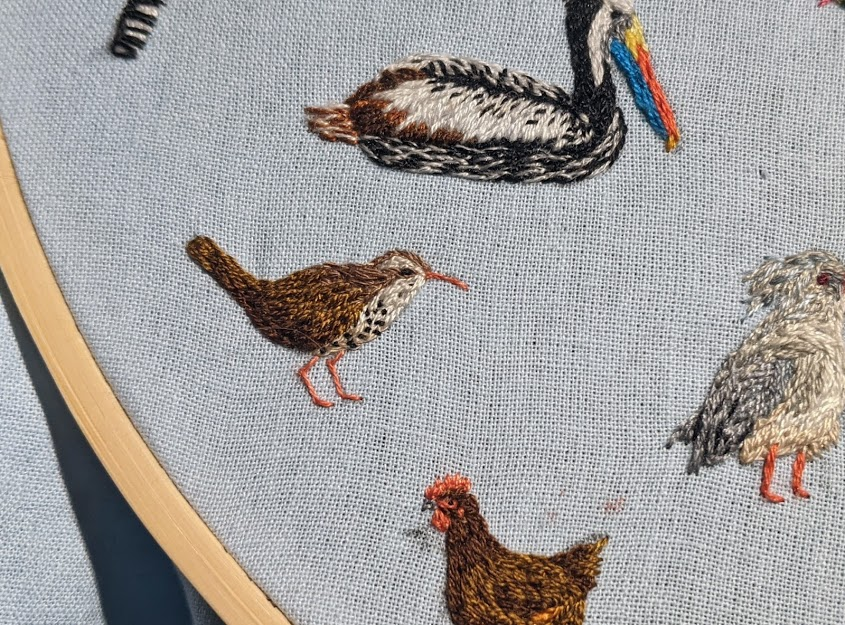 Ben Rackstraw)" title="I think the Mesitornithiformes were my favourite discovery! These are the mesites. No, I hadn& #39;t heard of them either. A tiny group of three species that live on Madagascar. This is a subdesert mesite, and they really are quite wonderful. (https://abs.twimg.com/emoji/v2/... draggable="false" alt="📸" title="Kamera mit Blitz" aria-label="Emoji: Kamera mit Blitz">Ben Rackstraw)">
Ben Rackstraw)" title="I think the Mesitornithiformes were my favourite discovery! These are the mesites. No, I hadn& #39;t heard of them either. A tiny group of three species that live on Madagascar. This is a subdesert mesite, and they really are quite wonderful. (https://abs.twimg.com/emoji/v2/... draggable="false" alt="📸" title="Kamera mit Blitz" aria-label="Emoji: Kamera mit Blitz">Ben Rackstraw)">
 Ben Rackstraw)" title="I think the Mesitornithiformes were my favourite discovery! These are the mesites. No, I hadn& #39;t heard of them either. A tiny group of three species that live on Madagascar. This is a subdesert mesite, and they really are quite wonderful. (https://abs.twimg.com/emoji/v2/... draggable="false" alt="📸" title="Kamera mit Blitz" aria-label="Emoji: Kamera mit Blitz">Ben Rackstraw)">
Ben Rackstraw)" title="I think the Mesitornithiformes were my favourite discovery! These are the mesites. No, I hadn& #39;t heard of them either. A tiny group of three species that live on Madagascar. This is a subdesert mesite, and they really are quite wonderful. (https://abs.twimg.com/emoji/v2/... draggable="false" alt="📸" title="Kamera mit Blitz" aria-label="Emoji: Kamera mit Blitz">Ben Rackstraw)">
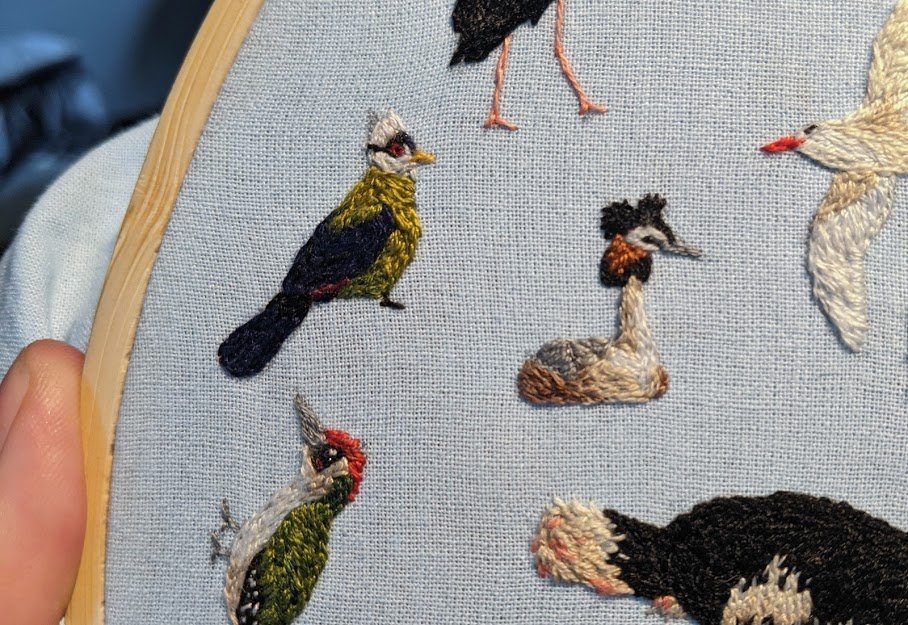 Unknown)" title="Finally we reach the Musophagiformes.These are the turacos, another firm favourite! Their name literally means banana-eaters. This one is a white-crested turaco and they can be found in a belt that stretches from Nigeria to Kenya. Lovely. (https://abs.twimg.com/emoji/v2/... draggable="false" alt="📸" title="Kamera mit Blitz" aria-label="Emoji: Kamera mit Blitz">Unknown)">
Unknown)" title="Finally we reach the Musophagiformes.These are the turacos, another firm favourite! Their name literally means banana-eaters. This one is a white-crested turaco and they can be found in a belt that stretches from Nigeria to Kenya. Lovely. (https://abs.twimg.com/emoji/v2/... draggable="false" alt="📸" title="Kamera mit Blitz" aria-label="Emoji: Kamera mit Blitz">Unknown)">
 Unknown)" title="Finally we reach the Musophagiformes.These are the turacos, another firm favourite! Their name literally means banana-eaters. This one is a white-crested turaco and they can be found in a belt that stretches from Nigeria to Kenya. Lovely. (https://abs.twimg.com/emoji/v2/... draggable="false" alt="📸" title="Kamera mit Blitz" aria-label="Emoji: Kamera mit Blitz">Unknown)">
Unknown)" title="Finally we reach the Musophagiformes.These are the turacos, another firm favourite! Their name literally means banana-eaters. This one is a white-crested turaco and they can be found in a belt that stretches from Nigeria to Kenya. Lovely. (https://abs.twimg.com/emoji/v2/... draggable="false" alt="📸" title="Kamera mit Blitz" aria-label="Emoji: Kamera mit Blitz">Unknown)">
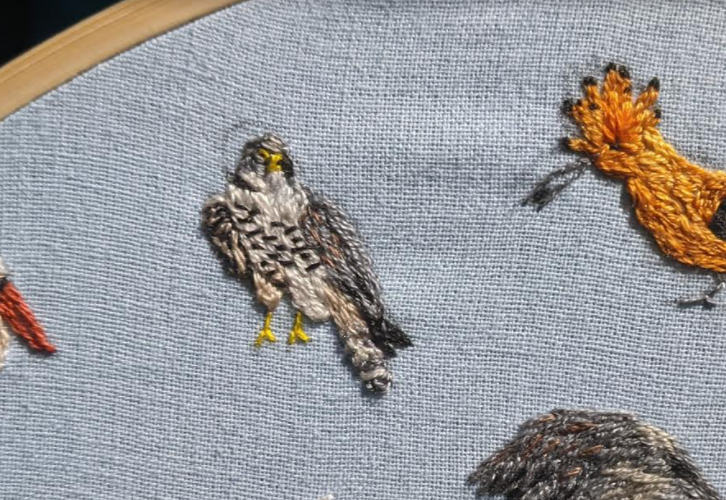 Christopher Watson)" title="And last but by no means least, the Falconiformes!I think we can all figure out that these are the falcons. Including the fastest animal on earth, the *superb* peregrine falcon. Yeah, they& #39;re pretty awesome really. Big fan. (https://abs.twimg.com/emoji/v2/... draggable="false" alt="📸" title="Kamera mit Blitz" aria-label="Emoji: Kamera mit Blitz">Christopher Watson)">
Christopher Watson)" title="And last but by no means least, the Falconiformes!I think we can all figure out that these are the falcons. Including the fastest animal on earth, the *superb* peregrine falcon. Yeah, they& #39;re pretty awesome really. Big fan. (https://abs.twimg.com/emoji/v2/... draggable="false" alt="📸" title="Kamera mit Blitz" aria-label="Emoji: Kamera mit Blitz">Christopher Watson)">
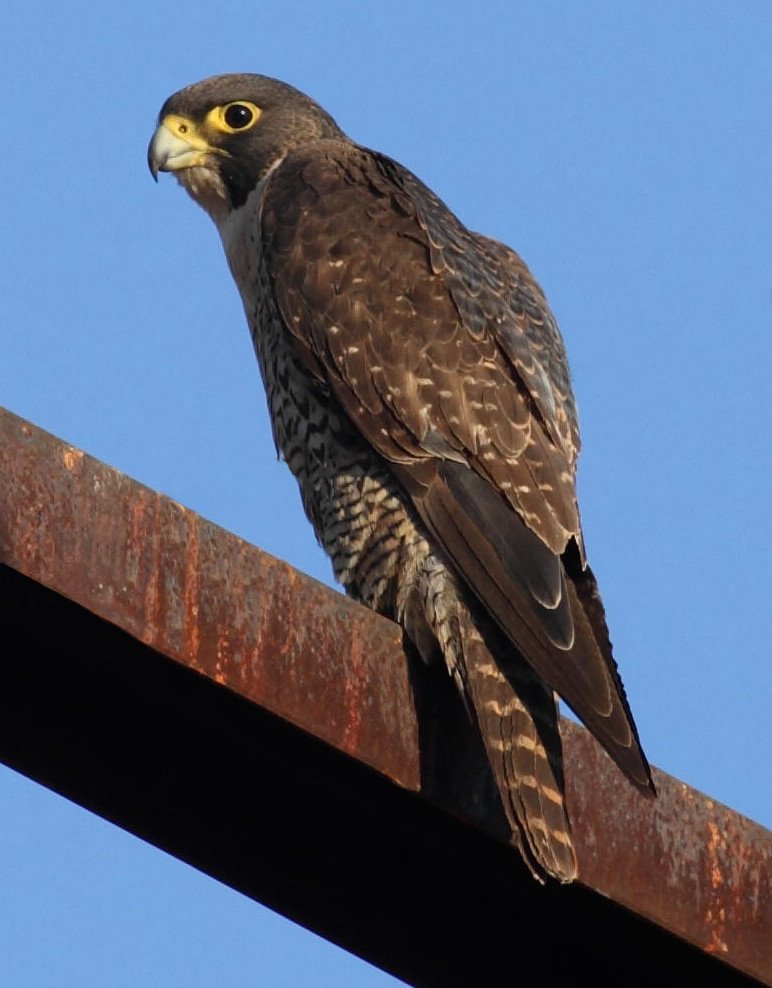 Christopher Watson)" title="And last but by no means least, the Falconiformes!I think we can all figure out that these are the falcons. Including the fastest animal on earth, the *superb* peregrine falcon. Yeah, they& #39;re pretty awesome really. Big fan. (https://abs.twimg.com/emoji/v2/... draggable="false" alt="📸" title="Kamera mit Blitz" aria-label="Emoji: Kamera mit Blitz">Christopher Watson)">
Christopher Watson)" title="And last but by no means least, the Falconiformes!I think we can all figure out that these are the falcons. Including the fastest animal on earth, the *superb* peregrine falcon. Yeah, they& #39;re pretty awesome really. Big fan. (https://abs.twimg.com/emoji/v2/... draggable="false" alt="📸" title="Kamera mit Blitz" aria-label="Emoji: Kamera mit Blitz">Christopher Watson)">
 ! Well done for putting up with my rather excessive bird thread, in more ways than one. If you have made it this far then you are a star https://abs.twimg.com/emoji/v2/... draggable="false" alt="✨" title="Funken" aria-label="Emoji: Funken">, and here are some more close-up pics to say thank you!Hope you enjoyed it and maybe learned something along the way https://abs.twimg.com/emoji/v2/... draggable="false" alt="😊" title="Lächelndes Gesicht mit lächelnden Augen" aria-label="Emoji: Lächelndes Gesicht mit lächelnden Augen">" title="WE ARE DONE https://abs.twimg.com/emoji/v2/... draggable="false" alt="🥳" title="Partying face" aria-label="Emoji: Partying face">! Well done for putting up with my rather excessive bird thread, in more ways than one. If you have made it this far then you are a star https://abs.twimg.com/emoji/v2/... draggable="false" alt="✨" title="Funken" aria-label="Emoji: Funken">, and here are some more close-up pics to say thank you!Hope you enjoyed it and maybe learned something along the way https://abs.twimg.com/emoji/v2/... draggable="false" alt="😊" title="Lächelndes Gesicht mit lächelnden Augen" aria-label="Emoji: Lächelndes Gesicht mit lächelnden Augen">">
! Well done for putting up with my rather excessive bird thread, in more ways than one. If you have made it this far then you are a star https://abs.twimg.com/emoji/v2/... draggable="false" alt="✨" title="Funken" aria-label="Emoji: Funken">, and here are some more close-up pics to say thank you!Hope you enjoyed it and maybe learned something along the way https://abs.twimg.com/emoji/v2/... draggable="false" alt="😊" title="Lächelndes Gesicht mit lächelnden Augen" aria-label="Emoji: Lächelndes Gesicht mit lächelnden Augen">" title="WE ARE DONE https://abs.twimg.com/emoji/v2/... draggable="false" alt="🥳" title="Partying face" aria-label="Emoji: Partying face">! Well done for putting up with my rather excessive bird thread, in more ways than one. If you have made it this far then you are a star https://abs.twimg.com/emoji/v2/... draggable="false" alt="✨" title="Funken" aria-label="Emoji: Funken">, and here are some more close-up pics to say thank you!Hope you enjoyed it and maybe learned something along the way https://abs.twimg.com/emoji/v2/... draggable="false" alt="😊" title="Lächelndes Gesicht mit lächelnden Augen" aria-label="Emoji: Lächelndes Gesicht mit lächelnden Augen">">
 ! Well done for putting up with my rather excessive bird thread, in more ways than one. If you have made it this far then you are a star https://abs.twimg.com/emoji/v2/... draggable="false" alt="✨" title="Funken" aria-label="Emoji: Funken">, and here are some more close-up pics to say thank you!Hope you enjoyed it and maybe learned something along the way https://abs.twimg.com/emoji/v2/... draggable="false" alt="😊" title="Lächelndes Gesicht mit lächelnden Augen" aria-label="Emoji: Lächelndes Gesicht mit lächelnden Augen">" title="WE ARE DONE https://abs.twimg.com/emoji/v2/... draggable="false" alt="🥳" title="Partying face" aria-label="Emoji: Partying face">! Well done for putting up with my rather excessive bird thread, in more ways than one. If you have made it this far then you are a star https://abs.twimg.com/emoji/v2/... draggable="false" alt="✨" title="Funken" aria-label="Emoji: Funken">, and here are some more close-up pics to say thank you!Hope you enjoyed it and maybe learned something along the way https://abs.twimg.com/emoji/v2/... draggable="false" alt="😊" title="Lächelndes Gesicht mit lächelnden Augen" aria-label="Emoji: Lächelndes Gesicht mit lächelnden Augen">">
! Well done for putting up with my rather excessive bird thread, in more ways than one. If you have made it this far then you are a star https://abs.twimg.com/emoji/v2/... draggable="false" alt="✨" title="Funken" aria-label="Emoji: Funken">, and here are some more close-up pics to say thank you!Hope you enjoyed it and maybe learned something along the way https://abs.twimg.com/emoji/v2/... draggable="false" alt="😊" title="Lächelndes Gesicht mit lächelnden Augen" aria-label="Emoji: Lächelndes Gesicht mit lächelnden Augen">" title="WE ARE DONE https://abs.twimg.com/emoji/v2/... draggable="false" alt="🥳" title="Partying face" aria-label="Emoji: Partying face">! Well done for putting up with my rather excessive bird thread, in more ways than one. If you have made it this far then you are a star https://abs.twimg.com/emoji/v2/... draggable="false" alt="✨" title="Funken" aria-label="Emoji: Funken">, and here are some more close-up pics to say thank you!Hope you enjoyed it and maybe learned something along the way https://abs.twimg.com/emoji/v2/... draggable="false" alt="😊" title="Lächelndes Gesicht mit lächelnden Augen" aria-label="Emoji: Lächelndes Gesicht mit lächelnden Augen">">
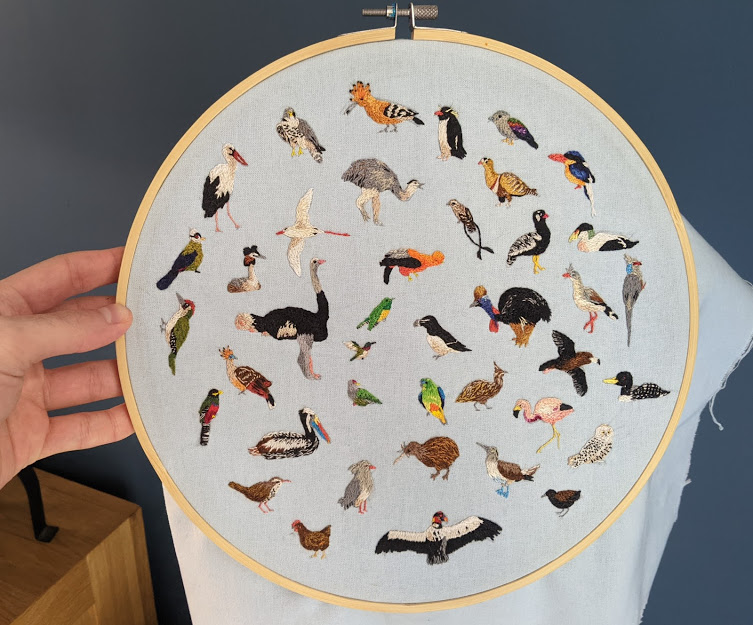 ! Well done for putting up with my rather excessive bird thread, in more ways than one. If you have made it this far then you are a star https://abs.twimg.com/emoji/v2/... draggable="false" alt="✨" title="Funken" aria-label="Emoji: Funken">, and here are some more close-up pics to say thank you!Hope you enjoyed it and maybe learned something along the way https://abs.twimg.com/emoji/v2/... draggable="false" alt="😊" title="Lächelndes Gesicht mit lächelnden Augen" aria-label="Emoji: Lächelndes Gesicht mit lächelnden Augen">" title="WE ARE DONE https://abs.twimg.com/emoji/v2/... draggable="false" alt="🥳" title="Partying face" aria-label="Emoji: Partying face">! Well done for putting up with my rather excessive bird thread, in more ways than one. If you have made it this far then you are a star https://abs.twimg.com/emoji/v2/... draggable="false" alt="✨" title="Funken" aria-label="Emoji: Funken">, and here are some more close-up pics to say thank you!Hope you enjoyed it and maybe learned something along the way https://abs.twimg.com/emoji/v2/... draggable="false" alt="😊" title="Lächelndes Gesicht mit lächelnden Augen" aria-label="Emoji: Lächelndes Gesicht mit lächelnden Augen">">
! Well done for putting up with my rather excessive bird thread, in more ways than one. If you have made it this far then you are a star https://abs.twimg.com/emoji/v2/... draggable="false" alt="✨" title="Funken" aria-label="Emoji: Funken">, and here are some more close-up pics to say thank you!Hope you enjoyed it and maybe learned something along the way https://abs.twimg.com/emoji/v2/... draggable="false" alt="😊" title="Lächelndes Gesicht mit lächelnden Augen" aria-label="Emoji: Lächelndes Gesicht mit lächelnden Augen">" title="WE ARE DONE https://abs.twimg.com/emoji/v2/... draggable="false" alt="🥳" title="Partying face" aria-label="Emoji: Partying face">! Well done for putting up with my rather excessive bird thread, in more ways than one. If you have made it this far then you are a star https://abs.twimg.com/emoji/v2/... draggable="false" alt="✨" title="Funken" aria-label="Emoji: Funken">, and here are some more close-up pics to say thank you!Hope you enjoyed it and maybe learned something along the way https://abs.twimg.com/emoji/v2/... draggable="false" alt="😊" title="Lächelndes Gesicht mit lächelnden Augen" aria-label="Emoji: Lächelndes Gesicht mit lächelnden Augen">">


